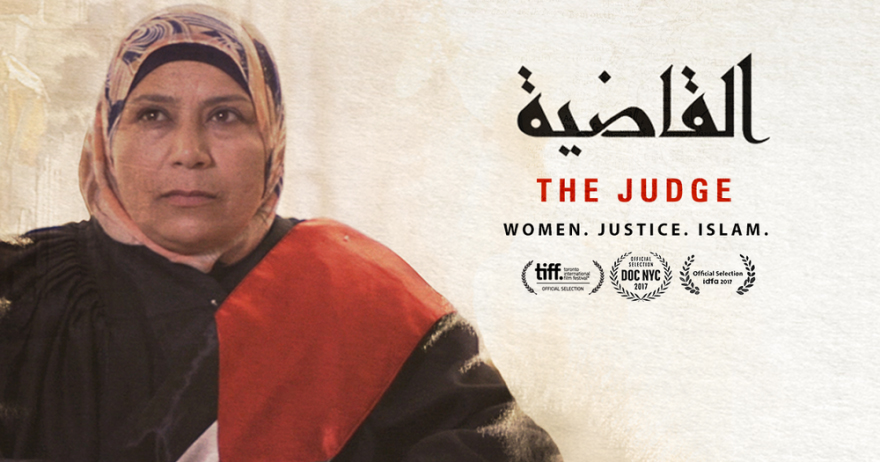NON-Academic writing
August 2022

June 2022
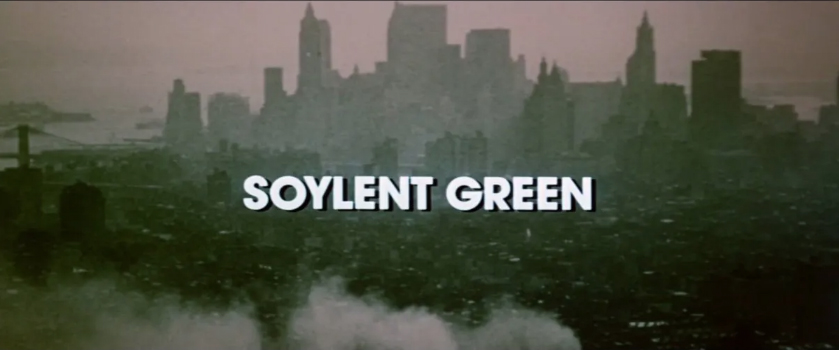
The Past as Present: Soylent Green today
Film Quarterly Quorum (online only), published 24 June 2022
(Read "author's cut" of this article on the Blog page)
May 2021
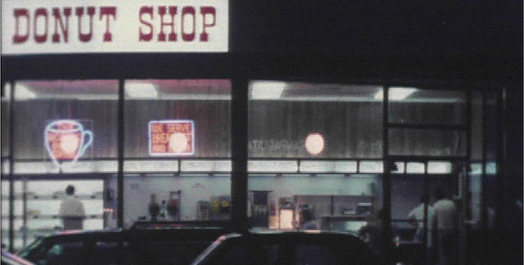
November 2018
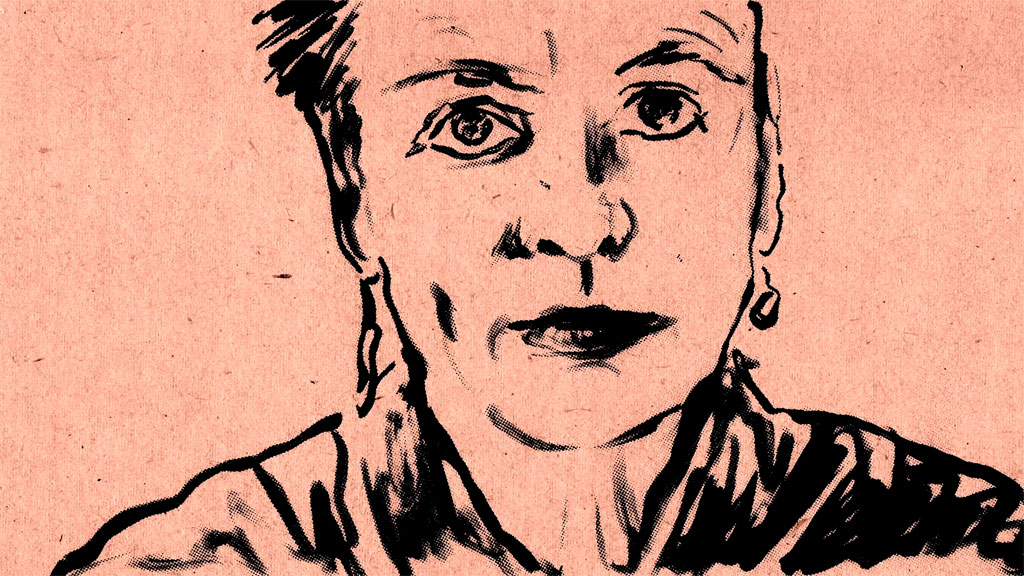
IN FOCUS: ME (Special section of IDFA 2018, programmed by Laura van Halselma and Alisa Lebow)
A program all about “Me” suggests a few things, some of which turn out to be correct, others mistaken. This amazing program features films from the 1970s to today, ranging in approach and technique from the epistolary avant-garde of Chantal Akerman’s News from Home to the clay figurines of Rithy Pahn’s The Missing Picture. It’s an investigation into the personal filmmaking that has been transforming documentary for decades. The films all foreground the experience of the filmmaker in some way and emphasize the subjective point of view. But miraculously, these films aren’t just self-absorbed exercises in navel-gazing, as the title might also suggest. More than the first-person singular perspective that “me” implies, the personal and avowedly subjective use of this medium is actually much more about the first-person plural, making it a cinema of “we.” To focus on oneself in a film is no more an act of self-indulgence than it is in the writing of a memoir or diary, or a poem for that matter.
...
And yet, why shy away from the personal here? Why insist that these films have to be engaged in looking outwards towards representing “others,” to the extent that many other documentaries are? What if we were to also find room in the vast arena of documentary practice for those films that interrogate personal problems, family dynamics, relationship issues, the loss of a beloved dog? Why not make space for those films that contravene the invisible boundaries of the private, revealing the foibles, the vulnerabilities and the emotional complexities so often obscured in more polite, more distant approaches to representation? Indeed, why always maintain a distance, or perhaps more to the point, why should we be allowed to point a camera into other people’s lives and not interrogate our own? It’s the very act of self-representation and the representation of those close to us where we begin to understand the limits of the private, the bounds of the sayable, the expressive borders that circumscribe our lives.
When a filmmaker makes a film to work through his unresolved relationship with his ex-girlfriend, or her complicated yet loving relationship with her adoptive parent, or even his right to complain of a headache, aren’t they using the medium as much as a psychoanalytic device as a technological one? Isn’t there something truly interesting and revelatory about this fact? Film scholars have long been fond of engaging psychoanalysis in the service of interpreting fiction films, but this opens up a whole other dimension where the filmmaking itself is subject to analysis, as it were. While practicing without a license may be unwise, it’s still interesting to think about film as a type of psychoanalytic space—a prosthetic device that may help a filmmaker work through their deepest traumas or their most pressing conflicts. One of the early dreams of cinema was that it could become as expressive a medium as pen and paper, or paintbrush and canvas, as immediate, as reflective, as personal. Every single film included in this section is testament to the fact that all around the world, filmmakers have indeed adapted this unwieldy apparatus for the clearest expression of their innermost thoughts.
Let’s return to the claim that this type of personal filmmaking, this “cinema of me” is also always a “cinema of we.” So many of the themes developed in the films of this program manage to touch on universal themes, transcending even while displaying their own limited cultural milieu or personal preoccupations. When Pawel and Marcel Lozinski head out on their father-and-son road trip that exposes the unresolved pain in the wake of a harrowing divorce, we’re suddenly not in a car driving in Poland but in our own memories and experiences of the brokenness of nuclear families. And if we have never experienced the divorce of our parents or the loss of a family member, or the displacements and traumas of war, we’re fortunate to have these talented filmmakers using all of the creative means at their disposal to communicate something of those experiences to us.
Even when the theme couldn’t be more myopically focused, as with Viktor Kossakovsky’s Wednesday, about people born in Leningrad who share the same birthday as the filmmaker, the themes that emerge are nothing short of existential: the meaning of existence, the randomness of birth, the belief systems surrounding questions of fate are all contemplated by the quirkily untutored participants in this film. Distance, alienation, loneliness, fear of abandonment, exile and loss are themes that run through many of the films in this selection—themes that resonate well beyond the intimate concerns of the filmmaker him or herself.
Some of the filmmakers featured in this section are inveterate first-person filmmakers. Ross McEllwee, for instance, made his presence behind the camera a signature of his filmmaking practice, from the time he made Sherman’s March in 1985 right up through today. Avi Mograbi in Israel and Andrés Di Tella in Argentina are also mainly known for their first-person films. Others, like Naomi Kawase or Chantal Akerman, contribute important films in this personal vein but are better known for their fiction films. These may traverse some similar themes, but they don’t necessarily make the filmmaker’s personal story explicitly evident. Rithy Panh, for his part, has made several documentaries and a handful of fiction films, but The Missing Picture and his new film, Graves without a Name, are by far his most personal films, depicting his memories of life and death under the Khmer Rouge. For Panh, in line with the majority of the filmmakers included here, the first-person address is reserved for those films that simply couldn’t have been made otherwise. It’s much less a question of self-indulgence, and much more the urgency to communicate a complex formative experience (very often a trauma) that leads a filmmaker down this path. These are films that were burning to be made, and the experience of watching each and every one of these films forged in the furnace of the soul, makes a deep impression on us. These films aren’t easily forgotten, so come prepared to be profoundly affected.
Alisa Lebow contributed to IDFA’s focus program "Me" as senior advisor and interviewed some of the filmmakers in the program during the festival. In addition, Lebow was a member of the IDFA 2018 jury.
November 2015
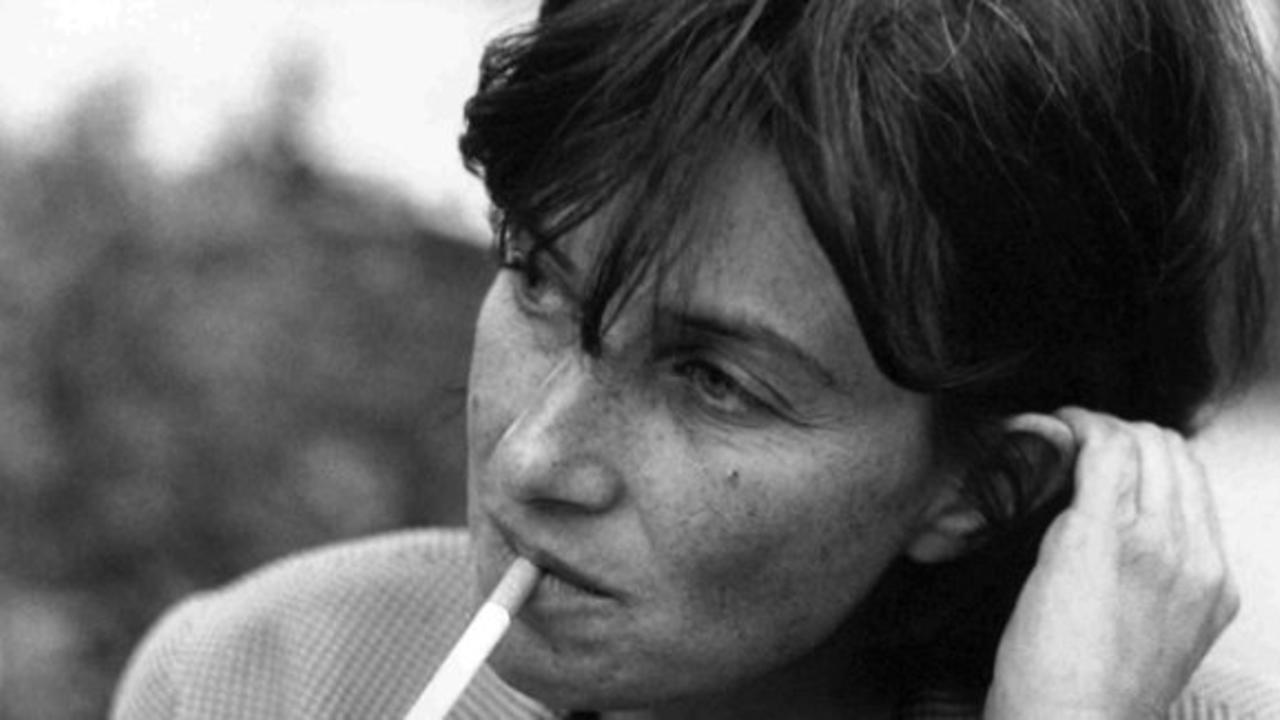
INTRODUCTION FOR A SPECIAL ISSUE OF ALTYAZI ON THE WORK OF CHANTAL AKERMAN
It is with a very heavy heart that I write this introduction. Chantal Akerman is a filmmaker whose work I have loved and admired for several decades. In the many eulogies and obituaries that have come out since her untimely death on October 5th, there is one sentiment that consistently comes across: the deep and lasting impression her films have made on so many of us. Her films were not for all tastes, her unadulterated vision was too strong for some, but for those of us whom she touched, she did so in an indelible way.
...
Akerman
was a prolific filmmaker, often working for television in between her larger
projects, and always experimenting with form. She made feature length fiction
films, shorts, experimental films, documentaries, and in the last 20 years, she
made several forays into the world of multi-channel installations for galleries
and museums. While some have tried to force her into categories, whether based
on her multiple identities (Jewish, lesbian, feminist, child of holocaust
survivors), her gender (female), or her filmmaking inclinations (minimalist,
structuralist), these have always failed to encompass the breadth of her work
and as she actively opposed any categorization other than ‘filmmaker’ in her
lifetime, I believe we should respect her rightful resistance and remember her
as what she was, a great filmmaker, full stop.
I
was introduced to her work in a film class in 1983, where we watched her magnum
opus, Jeanne Dielman: 23 quai du Commerce
1080, Bruxelles, a film she made in 1975 at the age of 24. Jeanne Dielman is an unforgettable film,
not only for the experience of duration, which, at 3 hours and 45 minutes, can
be challenging in the extreme, but for its bold reinterpretation of domestic
time as worthy of representation, and for the unflinching directorial style. With
uncompromising attention to the slow, precise, rhythms of everyday routine, the
film has the structure of an inverted thriller, every bit as knuckle-whitening
as a fast-paced action film, only in reverse. Few filmmakers before or since
have been as brave and forthright in their cinematic language. Once you
acclimatize to Akerman’s sense of timing and indeed her dry humor and off-beat
sensibility, it becomes something like a drug. You seek it out in other
filmmakers’ work and when you can’t find it, you turn back to her with great
longing and affection. To say that Akerman was a singular voice in cinema is
simply to state a fact. To place her alongside the other cinematic greats of
her generation (Godard, Fassbinder, Herzog) is to redress an historical
injustice, as her work is every bit as innovative and important in the history
of cinema as theirs, though she remained undervalued and under-recognized to
the end.
Her
films are too many to mention here, but I will review what are the highlights
for me in her impressive, nearly 45 year, career. Her first film, Saute ma ville, was an unstudied send-up
of domesticity, the lead part played with Chaplainesque impishness by an 18
year old Akerman herself. She plays the lead in her first feature as well, the
impressive Je, tu, il, elle (1974), which she made only a year before Jeanne Dielman, and while less formally
ambitious, it is just as taboo-breaking and memorable in its playful expression
of a young woman’s independence and desire. We see hints of the feisty mercurial
lead character again in two shorts she made a decade apart, J’ai faim, j’ai froid (1984) and the
bewitching Portrait d’une jeune fille de
la fin des anées 60 à Bruxelles (1994).
Her
experimental film work of the early and mid-1970s was heavily influenced by the
structuralist filmmaking of Michael Snow and the personal, almost home movie, style
of Jonas Mekas. Yet her original voice as a filmmaker, literally and
figuratively, comes across very clearly in her New York films, News from Home and Hotel Monterrey. News from
Home, in particular, takes up many of the themes we find in her later work:
nomadism, the fascination with the everyday, the imbricated lives of mother and
daughter, the way in which history haunts the present. The exquisitely
restrained camera work of one of her early collaborators, cinematographer
Babette Mangolte, is one of the highlights of this film.
Akerman
went on to make 12 more feature films and half as many feature length
documentaries, the most memorable for me being D’Est, a film that comprised one part of her very first museum
installation, Bordering on Fiction, which
premiered at the Walker Art Foundation in Minneapolis in 1995. D’Est is a return to Akerman’s extreme
long takes and her interest in the quotidian, yet it is also another form of
‘return’, where she in effect retraces the steps in reverse of her parents’ exile
from Eastern Europe during WWII. Shot just after the fall of the Berlin Wall,
it is at once a study of that present moment of transition and of the traces it
still bears of the past. Akerman eschews archival footage and narration,
counting instead on the penetrating gaze of her insistent camera to yield the
insights of history for those patient enough to watch. With this installation,
she began to explicitly revisit her Jewishness, not out of any particular
religious conviction, but from the weight of its history as it pressed upon
her.
Not
all of Akerman’s experiments were a success, and when she failed, she failed
spectacularly, as with the one and only mainstream film she endeavoured, the
$10 million dollar box office bust, A
Couch in New York (1996), starring William Hurt and Juliette Binoche. The
plot was simple enough and the characters well chosen for what was essentially
a quirky romantic comedy. Yet Akerman’s irrepressible spirit forced an
awkwardness and a just-off-the-mark sensibility that was too subtle for the
film’s mainstream pretensions, and not pronounced enough for her experimental
fan base. The film found its way to the graveyard of the cinema, where it
surprised me more than once, first on an overnight bus from Bodrum to Istanbul
and later on a transatlantic flight back to New York. I watched it all the way
through both times, happy to be accompanied by her spirit in the unlikeliest of
places. Although Akerman never worked with Hollywood again (or should I say,
Hollywood never worked with Akerman again?), she did make several other
relatively light-hearted features with mixed success, both before and after,
such as Nuit et Jour (1991) about a woman
dating two taxi drivers, one on the day shift, the other on the night shift, and
Demain on déménage (2004), about a
mother and daughter forced to live together after the death of the father. She
also made two more weighty, and much better acclaimed, adaptations, the first
of Proust’s La Prisoniere, in her La Captive (2000), and the second, of
Conrad, in La Folie Almayer (2012).
Akerman’s
work on the whole was so intricately intertwined with her life and her sense of
self that in 1997, when asked by Arte to make a filmic self portrait, she
responded by making a film that, with the exception of a somewhat rambling and
artless straight to camera introduction by Akerman herself, was comprised
exclusively of footage from her films. In effect, she was saying, look to my
films if you want to know anything about my life, it’s all there. Indeed, Akerman
is one of the most personal directors we have ever encountered in the cinema,
the force of her vision and personality, as well as her recurrent obsessions
and tropes, form an integral part of the experience of her work. One feels, the
more one gets to know her work, the better one knows her, to the point of
making her death feel very much like a personal loss.
Akerman,
a life-long sufferer of depression, died at her own hand, only a year after she
lost her mother, a holocaust survivor whose simple life as a petit-bourgeois
housewife in Brussels was at the center of inspiration for most of Akerman’s
work. It’s as if with her mother/muse gone, there could be no more reason to go
on. Life, for her, seems to have become unbearable. Yet I remain grateful at
least, that her films remain and perhaps more than any other filmmaker I can
think of, she lives on for us in her films.
London Dispatch
2007-2012
For 5 years I wrote a monthly column on all things ‘documentary’ for the Turkish film magazine, Altyazı. I wrote the column in English and every month generous friends would translate it into Turkish for me. Here, for the first time, they are all available in English as well.
London Dispatch #58 – December 2012
TURKISH ENglish
Terra de Ninguem/No Man’s Land (Salomé Lamas, 2012)
Lisbon has two major annual
film festivals, Indielisboa, and Doclisboa. The fact that there is no major
mainstream film festival in that city is already a sign that it’s not your
average film-town. The fact that their documentary film festival is one of the
major events of the year, with packed theatres throughout the ambitious 10 day
event, is another. This year I was fortunate enough to be invited to serve on
the New Talent jury (one of four juries convened), which meant that while I
couldn’t see all of the films I had ticked on the program, I did get to see
some of the freshest talents coming out of the documentary world. We were
tasked with giving two prizes, one for an emerging Portuguese filmmaker and the
other for an international emerging filmmaker. I won’t try to enumerate all of
the 14 films we judged, but I’ll tell you the highlights.
Although we didn’t end up
selecting Ben Rivers’ Two Years at Sea it
was a strong contender. Rivers is actually a well known experimental filmmaker
in the UK who has made many short films, but as this was his first feature
length film and the competition was only for features, he was eligible for this
prize. Rivers shoots all of his work on film, in black and white, harkening
back to not only another time in film aesthetics, but in the world. This
feature, which observationally documents a current day Scottish hermit, could
have been shot any time in the last 50 years, dated to the present only by a
brief glimpse of a recent model 4x4. The film’s ethereal timelessness, and
indeed the alternative model of time as measured only in increments of need
(cooking, washing, eating, sleeping) and desire (listening to music, reading)
rather than the instrumentalist temporality the rest of us have gotten so used
to, is precisely its power.
The other film to mention
before discussing the prize-winning films is, Captivity (André Gil Mata),
a quiet meditation about the young filmmaker’s dying grandmother. It begins in
the hallway of a stately village house with the sound of belaboured breathing
groaning loudly on the audio track. The filmmaker longs to capture some sign of
recognition from this elderly matriarch as she in turn is involved in the
all-consuming effort to cling to the last gasps of life. She is captive in the
house, in her body, in the echo chamber of her own lungs, and the overwhelming
sense of the film is one of claustrophobia, effectively communicated through
acute observation and astute personal voiceover narration. It’s a slow but
moving gem.
I’ve no doubt these films
would have won, had not these other two been in the competition. The film that
won the Portuguese prize was Terra de
Ninguem/No Man’s Land, by Salomé Lamas, a nearly pure talking head
interview film, bringing us face to face with Paulo, a shady but thoroughly
compelling character, who spent most of his working life as a mercenary
assassin working for the Portuguese government, the CIA, and other equally
nefarious ‘clients’. His story, if it is indeed even true, details the shadowy
outlines of official history, the counter-insurgent movements in the former
colonies, the para-military exercises in Latin America, and much more. His
chronology seems to roughly coincide with official history, and the story is
verifiable except that this man seated before us has no registered documents,
no address, no official identity. Like any good assassin, he leaves no trace.
Leaving aside the vexing question of veracity, it is the identificatory
feelings that this figure awakens that makes this film so disturbing. The
documentary spectator is well versed in identifying with the victim and
witness, but is much less prepared for the disturbing experience of identifying
with the perpetrator.
The other prize-winning film was called Espoir Voyage (Michel Zongo) perhaps the
first film I have ever seen from Burkina Faso. Zongo attempts to find the trail
of his brother, who died as an economic migrant working in the cocoa fields of
neighboring Ivory Coast when the filmmaker was only 4. A road movie with a
quest, the structure is familiar, even if the characters, the vehicles, the
conditions of movement and statis revealed in this film are not. A better
testament to why and how self-representation can be the best antedote to the
oversimplifying and condescending gaze of the colonizing other could not be
found. I look forward to seeing more from this filmmaker to be sure.
London Dispatch #57 – November 2012
TURKISH ENglish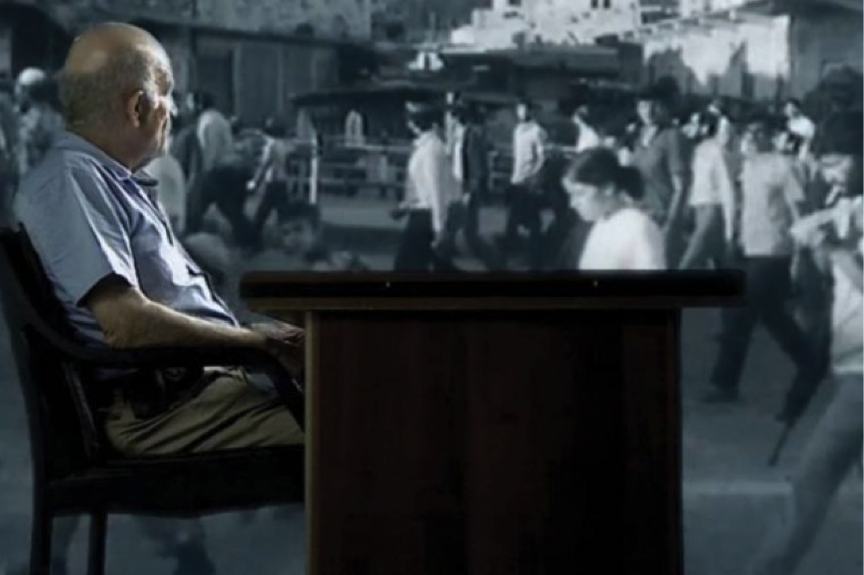
*
Last month I wrote about a stunning, mind-boggling film, The Act of Killing (Joshua Oppenheimer,
Christine Cynn, Anonymous, 2012), which by the way, I have reason to believe
will be in one of the big Istanbul film festivals next year. This month, I’m
thinking about quieter films, films that are not flashy or showy, and may even
require some real patience to watch. I often find myself watching films that I
think are really important and wish people would see, only to reflect upon how
difficult the film might be for most people to sit through. The most recent
film of this kind that I’ve seen is an Israeli film called The Law in These Parts (Ra’anan Androwitz, 2011).
Granted, this film is not doing badly on the festival circuit.
It did win, after all, the World Cinema Jury Prize for Documentary at Sundance,
and several other prizes as well. It’s an incredibly well crafted film, shot
beautifully, and structured reflexively, featuring a thoughtful and
well-executed first person voiceover track. But it’s a talking heads film, with
interview after interview with geriatric judges, all of whom at one time or
another presided over military courts in Israel’s occupied territories. They
speak legalese, for pity’s sake. And they’re each, in his own eloquent and
erudite way, justifying their miscarriages of justice. The only sympathetic
voice to grab hold of is the disembodied voice of the filmmaker, who one
somehow feels is on the side of justice, when all these other embodiments of
the law are not. This is not a film for the distracted. You must concentrate
hard. Listen and parse every word. A degree in Israeli and International Law
could be of some use as well.
Still, it’s a film I wish everyone would watch. One can learn so
much about how reasonable people can act unreasonably, how the law itself can
be interpreted with so little impartiality, what crimes can be committed and
justified in the name of ‘democracy’ and ‘security’. These are certainly
buzzwords that have relevance outside of the Israel/Palestine conflict. There
is no one on this planet who is not in some way implicated in these discourses.
Yet, I wonder, and worry, who, besides documentary nerds like myself, has the
patience to listen?
I remember feeling similarly when I watched The Corporation (Jennifer Abbot and Mark Achbar, 2003). I thought
then, as I do now, that the film should be required viewing for every school
child in capitalist countries. But the film is so didactic and overly-long,
that I remember being actually angry with the filmmakers for making it nearly
impenetrable for the very people who needed to see it (i.e., everyone). Again,
that film has not been unsuccessful. As documentaries go, it has had quite a
good run, winning countless awards, going on theatrical release, and claiming
on its website to be ‘Canada’s most successful documentary…EVER’. I’m sure
that’s true. But when I say I think it should be required viewing, I have in
mind people like my students at Brunel, who I can guarantee you, have never
heard of it. And need to.
I suppose I have set my hopes too high. Both films mentioned
have had real success and will continue to be screened and seen. This is more
than most documentaries can ever hope for. But without the Busby Berkeley on
acid numbers seen in the Act of Killing,
they will never be big hits, promoted by Errol Morris and Werner Herzog,
written about by Zizek, on the tips of the tongues of all who have seen it.
They will remain important, serious, essential viewing, that sadly, many may
miss.
Note: Zizek recently wrote
about this film online here.
London Dispatch #56 – October 2012
TURKISH ENglish
The Act of Killing (Joshua Oppenheimer, 2012)
A documentary that recently premiered at the Telluride Film
Festival, moving quickly on to Toronto, is about to take the documentary world
by storm. I’m not one to make such predictions lightly, and of course, I could
be very wrong, as the film in question is so brutal, so demanding, and so
beyond anyone’s wildest nightmares of what could be, that it may truly be too
much for audiences and critics alike. But suffice it to say, I've never seen
anything like it.
Its title, The Act of
Killing, may seem anodyne at first. But given that it’s a film that
features actual Indonesian death squad leaders, not only re-enacting their
gruesome ‘acts’ for the documentary’s camera, but also ‘acting’ in their own,
fantasy-musical-gangster film that they’re making about their unusual lives,
the title is apt. The Act of Killing
would be powerful enough if it only documented the lives of these frightening
men. But this film goes further, with a film within a film structure, and
completely outlandish representational strategies (the gangsters film
themselves in garish Technicolor in fantastical tropical sets that even Busby
Berkeley could not have conceived), giving it an otherworldly quality, rarely
if ever found in all but Herzog or early Errol Morris documentaries.
Indeed, it is clear that both Herzog and Morris found a kindred
spirit in director Joshua Oppenheimer (the film is credited with three
directors, one anonymous, and the other, Christine Cynn, who was more involved
in earlier phases of the production), as they both signed on as executive
producer. Herzog is quoted on the film’s website as saying: “I have not seen a
film as powerful, surreal, and frightening in at least a decade.” Morris
actually introduced the film at Telluride. He says: “Like all great
documentaries, The Act of Killing
demands another way of looking at reality. It starts as a dreamscape, an
attempt to allow the perpetrators to reenact what they did, and then something
truly amazing happens. The dream dissolves into nightmare and then into bitter
reality. An amazing and impressive film.”
Imagine a world where
gangsters rule, running all of the state institutions, celebrating their
achievements in rallies and on tv. I don't mean politicians who behave like
gangsters. I mean cruel, uneducated, petty criminals who were recruited by the
regime 45 years ago to commit extrajudicial killings of hundreds of thousands
of fellow citizens with their bare hands, and then spending the last nearly
half century getting rich and accruing power and bragging boldly about their barbarous
acts. This film is shot in Indonesia, a country that has never had to reckon
with its bloody past, as the brutal victors remain in power. The only
comparison I can make would be if the Nazi's had won the war, and Auschwitz had
become a model for how to deal with society's 'undesireables.' In other words,
the world in the film is the world turned upside-down and inside out. We spend
time with these men, but thankfully are never asked or expected to love them.
Nonetheless, they force us into an encounter with power that is unvarnished in
its façade, raw and unstoppable. Any thoughts of a world where there is the
rule of law, codes of ethics, basic shared notions of civility and decency, is
just a dream; the film reveals the stark reality. And despite the hot pink
aesthetics that would make John Waters proud, the truth that it shows, is far
from pretty. The fact that, as Morris suggests, the dream begins to unravel
towards the end, does nothing to undo the unnerving experience of having seen
hell and understanding that it’s right here on earth. Any film, documentary or
otherwise, that can do that, deserves to be called a masterpiece.
London Dispatch #55 – September 2012
TURKISH ENglish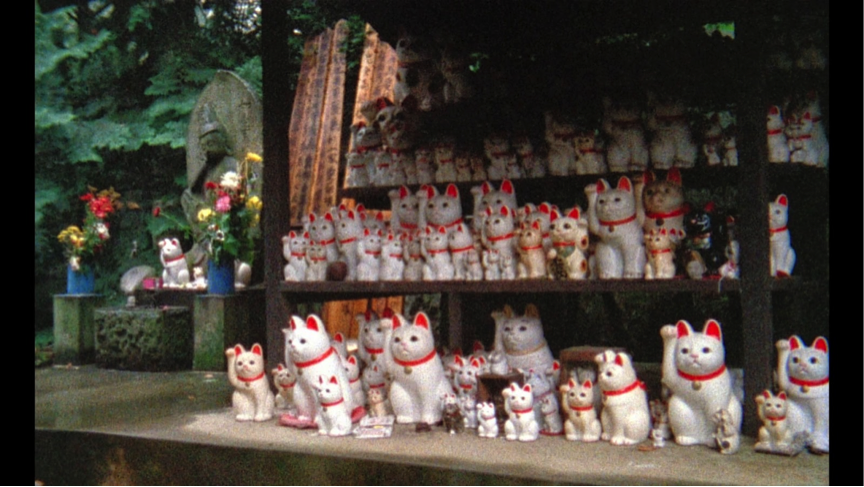
Sans Soleil (Chris Marker, 1982)
This summer the documentary world lost two of its most visionary
contributors, one known to all students of documentary and experimental film,
the other somewhat less well known, but no less influential or beloved. The
first filmmaker I speak of is Chris Marker, the maker of legendary films such
as La Jetee and Sans Soleil, who died on his 91st birthday, 29 July
2012, and the other was a teacher of mine (and countless others) at NYU, George
Stoney, who died on 12 July, just 12 days after he turned 96. Both were
prolific filmmakers, lifelong leftists, and new media advocates well before it
was fashionable.
Chris Marker was a pseudonym, his real name was Christian
François Bouche-Villeneuve, and lore has it he chose his nom de plume based
literally on the name of a pen: the ‘magic marker’, and indeed he used the
filmic medium much in the way advocated by Alexandre Astruc, as a ‘camera
stylo’ or camera-pen. He is credited for having innovated the film essay as a
form, an early example of which would be his Description d’un Combat/Description of a Struggle (1960) which
while remarkable structurally and stylistically, displays an enthusiasm toward
the young nation of Israel that could only be expressed by a leftist—one who
fought in the French resistance in WWII -- in that era. Later there was a
wonderful, if somewhat wry, return to this film by Israeli filmmaker Dan Geva,
with his homage to Marker, Description of
a Memory.
Probably Marker’s most famous epistolary film essay is Sans Soleil (1982), where he invents the
character of Sandor Krasna, an inveterate wanderer whose ‘letters’ are read by
an unidentified and insouciant female narrator. Both Krasna and the narrator
serve as alter egos of the filmmaker, and with these clever devices, Marker
managed to challenge the two central tenets of documentary: authorship and
authenticity. A later film essay of Marker’s, The Case of the Grinning Cat (2004), takes a meandering course through Marker’s beloved Paris following
the random appearances of a mysterious graffitied Cheshire, observing the
city’s present day as it resonates with his memories of poetry and activism in
Paris from days past. Considering the filmmaker was 83 when he made the film,
it is remarkably fresh, playful and sharp-witted, as if made by a giggling
sage.
George Stoney made almost as many films as Marker, though very
few of them ever became well known. Probably his best-known films were All My Babies (1953) a legendary
training film about midwifery in the American South that was used for years by
the US National Institute for Health, How
the Myth Was Made (1978), a film uncovering the omissions and manipulations
in Robert Flaherty’s classic documentary Man
of Aran (1934), and Uprising ’34
(1995) made with Judith Helfand and Susanne Rostock, about the cotton mill
worker’s strike during the ‘Great Depression’ in the US. Uprising ‘34 was another myth-breaking film, this time debunking
the certainty that the US Southern workers were always hostile to union
organising.
But truth be told, George Stoney will be better remembered as a
teacher and organizer than as a filmmaker. As a professor at NYU for over 40
years, he taught generations of filmmakers and film scholars (including myself)
how to make sensitive, thoughtful, politically engaged documentaries. He was a
gentle yet pragmatic teacher, ever encouraging, with a practical solution to
almost any film-related problem. As an organizer, he was one of a small group of
media-activists that started the first ever ‘public access’ channel on US cable
television in 1970, envisioning in that technology the potential for local
organizing that has finally been realised even more fully via social media. In
an interview he gave recently he said: “We look on cable as a way of
encouraging public action, not just access…It’s how people can get information
to their neighbors, and their neighbors can get out on the streets to
organize.”
Both Marker and Stoney
embraced new technologies and media while never abandoning their initial aims
and hopes for the medium they left endlessly enriched by their contributions.
These two indefatigable giants—neither of whom ever stopped making films or
encouraging others to do so— will be sorely missed.
London Dispatch #54 – July 2012
TURKISH ENglish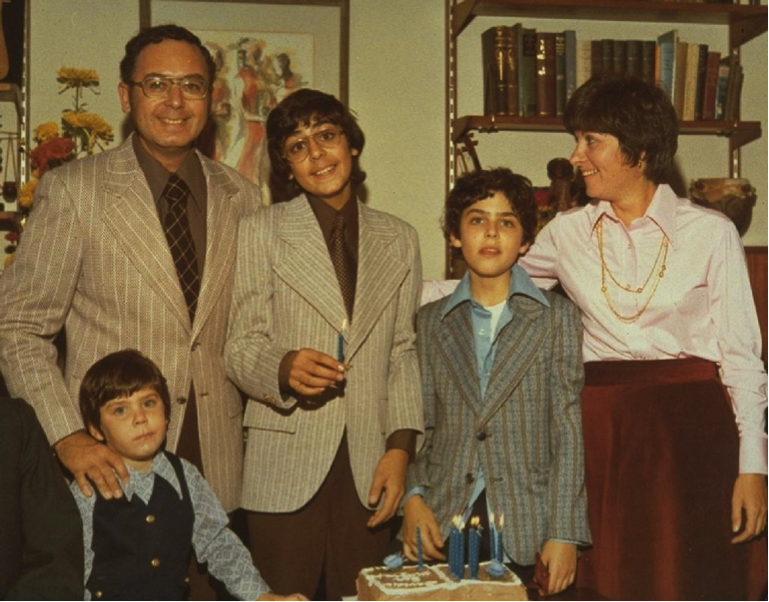
Capturing the Friedmans (Andrew Jarecki, 2003)
When Capturing the
Friedmans (Andrew Jarecki, 2003) first came out, it was a big hit, not only
on the festival circuit (it won the Grand Jury Prize at Sundance that year),
but theatrically as well. It was one among a string of documentaries in the
early 2000s to prove that documentary can have popular appeal. What I notice
nearly ten years later, upon rewatching it, is that it is a rare ‘popular’
documentary that neither dumbs down its presentation, nor capitulates to the
over-simplifying formulae of popular genre.
It is, most definitely, a genre film, a ‘who dunnit’ crime
mystery to be more specific. For those who haven’t seen it (and I highly
recommend that you do), the film is about a middle class suburban American
family in the 1980s, embroiled in a scandalous trial over paedophilic acts that
allegedly took place during afternoon computer classes for children. The late
1980s was a time of rampant hysteria about paedophilia in the US, a frantic
wave that seems to have spread to England shortly thereafter. This mass
obsession seems to have generated a spate of ‘cases’ rather than the other way
around. That is to say, it’s unclear that paedophilia was on the rise at all,
but instead, the agitated discourse around it seems to have conjured up a
collectively imagined epidemic, shored up by questionable police tactics and
legal procedures, not to mention frenetic media coverage.
What’s fascinating about the film is not so much the way it
conveys the zeitgeist of the times, but its way of managing the material.
Arguably, the last time a film had so destabilized the certainty and security
of the viewer, was in 1960, when Alfred Hitchcock knocked off his leading lady
less than ten minutes into Psycho, as
the character, Marion, with whom we identify as our narrator, dies a horrible,
screeching, death in the shower. That feeling of having nothing but the flimsy
shower curtain to cling to for guidance is hinted at in Capturing the Friedmans, where we are meant to simultaneously hold
in our minds the fact that the pater familias, Arnold Friedman, a seemingly
sweet and caring father, unassuming and unexceptional in every way, is an
admitted paedophile who, nonetheless, likely did not commit the crimes for which he was accused.
There have been many articles written since the film was
released, lamenting the fact that Jarecki was not more emphatic in his support
of Arnold’s innocence and the clear manipulation of facts and evidence by the
police, not to mention the bias of the judge, who declares in the film that she
was convinced of the accused’s guilt right from the start, a shocking admission
from a jurist who is sworn to uphold the principle of ‘innocence until proven
guilty’. And while there are clear cases of documentaries that have served to
redress injustice within the legal system—the most famous is Errol Morris’ Thin Blue Line (1989) which was credited
with reopening a capital punishment murder case that had the wrong man on death
row — I believe Capturing the Friedmans
does something equally impressive, by refusing to settle on simple fairy tale
truths of ‘guilt’ or ‘innocence’. The law itself, the very system designed to
give unambiguous verdicts, in this film, is revealed to be nothing more than
compromised bargains reached in backroom negotiations with slippery lawyers.
While the squabbling family
unravels in front of the camera under the probing reach of search warrants and
the hostile treatment in the press, it is not just the individual members that
appear to be unbalanced, but the scales of justice as well. I think the
greatest achievement of this film is to turn the tables back onto the viewer,
who finds herself endlessly shifting positions, never knowing finally who is to
blame or where the truth lies. In that process, we can’t help but notice that
the role of judge and jury is one we play all too eagerly when watching a
documentary, despite the fact that films are not actually evidentiary of
anything other than the filmmaker’s point of view. If Capturing the Friedmans captures anything at all, it is the viewer,
who is caught in the act of trying to pronounce judgement based on what we’re
given in a film. If a spectator can leave that film realising how ill equipped
s/he is to play the role of moral arbiter, then Capturing the Friedmans will have succeeded in challenging the
unwarranted ‘superior’ position of documentary spectatorship better than any
other documentary I can think of. It is for this, and for its commitment to
ambiguity and complexity in the face of, not despite, the ‘facts’, that this
film deserves to be remembered.
London Dispatch #53 – June 2012
TURKISH ENglish
5 Broken Cameras (Emad Burnat and Guy Davidi, 2011)
I’ve been thinking about the boycott of Israel that has been
going on since 2005 but has gained momentum in the last few years. It is a
coordinated call for economic divestment and sanctions against Israel, which I
support, but as with the South African Apartheid model upon which this one is
based, the boycott is not only economic but also cultural. This is complicated,
of course, but the main aim is to raise awareness of the issues and to garner
enough international pressure, both economic and moral, to bring Israel in line
with international law with regard to the occupation of the West Bank, Gaza and
the Golan Heights. Because this boycott is in effect, when Madonna agrees to
perform in Israel, she sets off a negative PR campaign that allows activists to
further publicise their cause. Similarly, when the Israeli Habima theatre
company is invited to perform Shakespeare in Hebrew at the Globe Theatre in
London, again the call is loud and clear to boycott. Why boycott Habima
theatre? Not because they would perform Shakespeare in Hebrew, but because they
receive government funding and perform in the illegal Israeli settlements on
the West Bank. So far so good.
It’s only when I sit down to watch a gut-wrenching documentary
made jointly by a Palestinian and an Israeli, funded by many sources including
several Israeli funds, that I start to have my doubts. 5 Broken Cameras, by Emad Burnat and Guy Davidi (2011) has not been
boycotted that I know of, in fact it has won several prominent international
awards, and for good reason, I’d say. Despite it having been cultivated in the
Israeli-funded Greenhouse project, and receiving funds from both the New
Israeli Foundation for Cinema, and the Israeli Film Council, it is a film that
deserves to be seen. Not only does it document 5 long years of resistance
against the building of the separation wall near the village of Bil’in, but it
does so from a Palestinian perspective that evocatively communicates the
relentless brutality and injustices perpetrated by the Israeli military in the
process.
Some might say this only serves as positive press for Israel,
demonstrating its catholic tolerance of different perspectives in a truly
democratic gesture, but I don’t see how allowing the wanton attacks against
innocent Palestinian civilians to be seen, as they attempt to protect their
livelihood and families, could ever be spun to show them in a positive light.
True, the film has not been censored by the Israelis, but rather than that
being a feather in their cap, it should merely serve the function of free
speech (intermittently practiced at the best of times), which is to present
dissenting opinions to those who should most be exposed to them. I watched the
film trying to imagine an Israeli audience being confronted with its
government’s blatant double standards and outrageous flouting of international
law, and thought, good, let them see. The fact that it is a co-production can
only serve to make its message more effective for that audience.
It’s not that the film is without problems. The
filmmaker/protagonist is avowedly pacifist and his political positions are in
some sense beyond reproach. He is portrayed as Mr. Clean and one wonders if
this film would have ever been made if he had, for instance, even for a moment,
entertained the idea of violent retaliation or ever expressed a single
prejudiced thought. He is, in a sense, a model Palestinian, and that is in and
of itself offensive. Still, as the actions he videotapes attest, the movement in
Bil’in was avowedly non-violent, despite the overt violence and prejudice they
faced, and that too deserves to be shown.
My question here has to do
with the boycott though. If I wouldn’t want this film to be boycotted, and if I
feel it has important cultural and political work to do, then how can I support
the boycott otherwise? A boycott needs to be consistent and uncompromising. If
I protest one project for taking Israeli government funds, then I have to
protest them all. Yet a film like Five
Broken Cameras puts a dent in my certainty. I’m glad it was made and I’m
glad it is being seen. So much for categorical thinking.
London Dispatch #52 – May 2012
TURKISH ENglishA friend of mine recently left journalism to make documentaries
for a well-known news and information television channel. She confided in me
that she’d like to take one of my documentary classes, as although it’s now her
full time job, she actually knows very little about the form. Most of her
journalistic experience was in radio and print, and translating her ideas to
the audio-visual medium has proven a challenge. This confirmed my suspicions
that those who hire television documentary producers expect little more than
illustrated radio-plays, with no intention of either training their staff in
the craft of filmmaking or prioritizing the visual elements of good
storytelling. Having some experience years ago making short ‘documentaries’ for
television, I’ve often repeated to my MA students that if their greatest
aspiration is to make tv documentaries, they really didn’t need to be on our
course, as the training we give would be superfluous to the demands of the job.
If you have an idea, know how to research it, and can work with a camera crew
to get your interviews lit and in focus, then the rest is really just by rote.
In fact, most tv documentaries are so formulaic aesthetically (interview,
supporting archival footage plus other illustrative visual material, maybe
voice over narration) that if you’ve watched a few and understand the basic
principles, any semi-intelligent person could do it. Who needs to spend
thousands of pounds to study that which you could better learn ‘on the job’?
Not that there’s anything wrong with aspiring to make television
documentaries. They are, after all, the most familiar form of documentaries
known to audiences, not to mention one of the very few ways one can make a
living in the field. You can have an interesting life and feel that in some
sense you are contributing to the circulation of knowledge, informing possibly
millions of viewers at any one time. As jobs go, it’s pretty sweet. The problem
is, firstly, that these films are just content filler for television’s
insatiable programming needs, not for the most part, memorable or important
films. Secondly, there are fewer and fewer such jobs, as television tends to
‘outsource’ its documentary making to independent filmmakers, only buying the
projects once they’re finished, thus not taking any risks along the way. Most
stations and networks have only a few on-staff documentary producers, as it’s
much more cost-effective to buy the finished product. That means that
independent documentary production companies are often using their resources to
make films they believe television will buy, tying up potentially talented
independent filmmakers’ time producing middle-of-the-road television.
Ironically, I have many
students who come to do their MA in documentary practice with us precisely
because they’re tired of making television documentaries. They sense there’s
something more to the form, but haven’t had the opportunity to explore what
that might be. I wish I could offer classes, workshops, intensive sessions to
everyone who wants, on the aspects of documentary that people don’t otherwise
get exposed to—everything from observational, first person, essay, experimental
and lyrical docs, to the wonderful hybrids that integrate fiction in uncanny ways.
There are so many films I would want to show, so many techniques to talk about.
And maybe then people would understand the craft that goes into really great
documentary, and the art of it. Maybe then, we wouldn’t hear questions like I
heard at the world premier screening of Belmin Sonmez’s film Simdiki Zaman, at the Istanbul Film
Festival this year insinuating that a documentary filmmaker, naturally, wants
to ‘graduate’ to making fiction films. Maybe then, we might see more truly
innovative and challenging documentaries coming out of Turkey, rather than
people thinking they need to do their creative work in a different form. Why
can’t we take our lessons from masters like Kiarostami and Panahi in Iran,
Varda and Marker in France, or Herzog in Germany, who show us that the
documentary form has infinite potential to be great and inspiring art. Maybe
then we’d see fewer dull docs and more memorable films that we’d be proud to
call documentary.
London Dispatch #51 – April 2012
TURKISH ENglish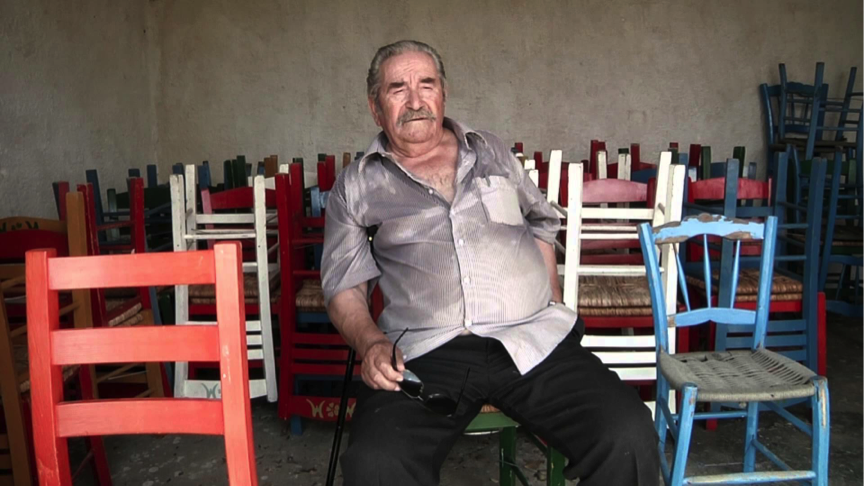
1+8 (Angelika Brudniak and Cynthia Madansky, 2012)
In this
world of global crossings, what does it mean to call a category of films ‘domestic documentaries’? Once upon a time one could
imagine it to have been a relatively clear-cut category, where if a citizen of
Turkey or someone of Turkish descent either produced or directed a film, then
it was ‘domestic’. But what if a film is
produced by someone from Turkey but directed and shot by a Nicaraguan, in
Nicaragua, about Nicaraguans, as happened with a spectacular film submitted
this year to the İstanbul
Film Festival domestic category (A Life
without Words, Adam Isenberg, produced by Senem Tüzen, 2011)? Can
we still consider that film domestic, due only to the presence of a producer
with a Turkish name? Or another film, which was not initially considered
domestic because the director/producer team, though both living in İstanbul for many years, were
not from Turkey, despite the fact that the film concerns itself with the
decidedly domestic concerns of Turkey's multiple borders? This singular film, 1+8 (Angelika Brudniak and Cynthia
Madansky, 2012) throws all such overly simplistic national categories of
belonging into long-overdue crisis.
As I
understand it, every middle school student in Turkey learns of the unique
geo-political location in which Turkey finds itself, surrounded on all sides by
enemies, 8 in all. Had a state-school educated child made the film, it would
have been called 1 against 8, but luckily for us the filmmakers who made this
impressive meditation on life at the borders were clearly inspired by this
octagonal regional positioning and all of its complex cultural, economic,
linguistic, and of course political, consequences. For Brudniak and Madansky,
the multiple points of crossing only add to the cultural weave of the land,
hence the 'plus' in the title.
The
border turns out to be an ambitious and fascinating subject—a visceral political history
lesson told on a human scale. Broken down into eight parts, each section of the
film visits both sides of a given border region. Brudniak and Madansky’s camera makes no attempt to
be at home in its surroundings, never pretending to blend in, nor does it ever
exoticize or 'other' those caught in its gaze. There is a steadiness, an
equanimity, to the way in which the filmmakers look upon their subjects, with
the camera fixed in its place, allowing life to unfold before it. While the
actual border checkpoints remain out of view, the effects are deeply felt,
whether with the overbearing military presence in Silopi or the memories of
impermeable cold war boundaries with Georgia and Bulgaria. At points, Turkey
seems the luckier side, the wealthier, freer, more liberal if not liberated
option, whereas in others it plays the role of police state all too
convincingly.
Turkey
finds itself reflected back by people within its borders who feel themselves to
be outsiders as much as people across the border who are in many senses
related. The arbitrariness of borders (such as the one set up by the French
between Nusaybin and Al Qamishli, Syria in 1923 dividing families from their
relatives and farmers from their land) and the nonetheless hard-line policing
of them (anonymous Iranian voices tell us the 'imams' will shoot anyone dead
who tries to smuggle anything across the border) is one key theme that drives
this film.
The list
of credited interviewees adds several minutes to the length of the film,
testifying to just how many voices contributed to this multi-faceted portrait.
Some seen on camera, always framed frontally and centred, some just voices, we
hear people's heartfelt laments as well as some clearly rehearsed boilerplate
propaganda, signalling the censorious presence of a 'minder'. In film school
one is taught that a good interview is one where the interviewee is made to
feel at ease and free to recount. 1+8
exposes the fatuousness of this unquestioned 'virtue': it is precisely in the
stiltedness, the awkward and unnatural performances, that we are made to see,
feel, experience, the heavy hand of the state as it exerts inordinate pressure
upon the inhabitants of its circumference.
Never
descending into pat ethnographic clichés
nor seduced by sectarian rhetoric and animosities, 1+8 traverses contentious terrain with an abiding respect and love
that is palpable. The viewer sees the extremes in landscape, poverty, political
repression, while at the same time there is the recognition that even at the
limits of the land, life clings to its most basic human values, like lichen
clings above tree line to an exposed rock. It's all laid bare to see, for those
with the patience and willingness to look. 1+8
will be screened in the Domestic section of the İstanbul
Film Festival this month. A Life without
Words, also a brave and beautifully crafted film that takes us to the
frontiers -- in this case of human communication -- will be included in the NTV
Documentary strand.
London Dispatch #50 – March 2012
TURKISH ENglish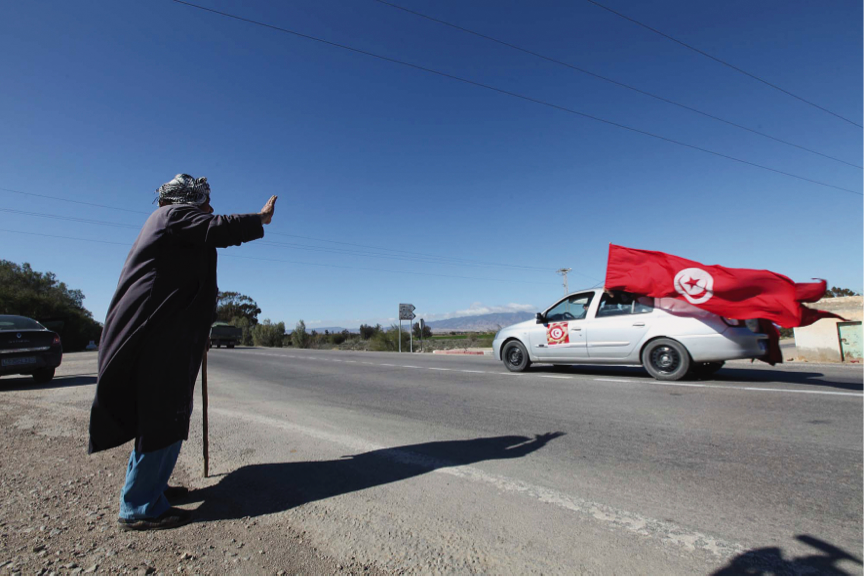
Rouge Parole (Elyes Baccar, 2011)
When the revolutionary spirit caught fire over a
year ago and started spreading wildly, I suppose I was not the only one glued
to the tv. But television news has its limitations, biases, investments, which
make it a less than satisfying way to hear the stories, learn of the struggles,
and indeed get a feel for the atmosphere of the events. Filmmakers and amateurs
alike grabbed their cameras in Tunis, in Cairo, all over, and some hastily
edited their footage into films. Others set up archives to gather all of the
materials, audiovisual and otherwise, of the revolution, to research, study,
edit, when the dust settles. Making sense of momentous events that transform so
quickly and have so many facets is no simple matter. Yet, international
festivals immediately began to request films to show. Imagine, Ben Ali flees
Tunisia in January 2011 and No More Fear (Mourad Ben Cheikh, Tunisia),
the first film about the Tunisian revolution, premieres at Cannes in May of the
same year. Mubarak resigns on the 25th of January, and Tahrir–Liberation Square (Stefano
Savona, Italy) premieres at Locarno Film Festival that August. Both of these
films will be shown in the upcoming Istanbul Film festival, in a program that
I’m curating under the auspices of docIstanbul, called ‘Filming Revolution’.
But we didn’t simply want to be one more
festival greedily demanding the impossible from filmmakers in this historical
moment. We wanted to create a program that could reflect on the question of how
one films revolution, what can be revealed in the moment, what needs time for
reflection, what is lost in the urge to produce quickly and what gained. I
began to look to the dynamic films of past revolutions, to bring them into
fruitful dialogue with those of the present moment. It seemed to me there is
much that can be learned. It is this conversation, these sets of questions,
that we will bring to the Istanbul Film Festival.
We’ve selected a handful of historical films
about revolutionary movements in the general vicinity of Turkey (Eastern Europe,
Asia Minor, North Africa) to screen up against films from the current
movements, especially in Egypt and Tunisia. Well known films like Battle of Algiers (Gillo Pontecorvo,
1966) will be screened as will lesser known gems from the region, such as the
Palestinian filmmaker Heiny Srour’s heady experimental docu-fiction feature
film about women’s participation in the Palestinian liberation struggle Leila and the Wolves (Lebanon/UK,
1984). A more recent film Orange Winter
(Andrei Zagdansky, 2007), tells the impressive and under-reported story
of the peaceful struggle that won a transition of power in the Ukraine in
2004-5. I thought it important to include a film from the Iranian ‘Green’
movement that emerged during and after the 2009 elections in Iran, yet in the
current political climate in Iran, finding a suitable film proved a challenge.
I found, however, an interesting film made by an anonymous Iranian filmmaker in
Paris, who is literally trying to piece together the puzzle of what happened based
on the clips s/he could find on YouTube. The result is the intriguing Fragments of a Revolution (2011), which we will screen.
The two films from Tunisia, Rouge Parole (Elyes Baccar, Tunisia/Switzerland/ Qatar, 2011) and No More Fear,
seen back to back, give a multidimensional view of the events leading up to and
following the fall of the Ben Ali regime. And the film we’ve chosen to depict
the events in Cairo, Tahrir-Liberation
Square, is a fascinating observational film by outsider Stefano Savona, the viewing of which makes one feel the force of Mubarak’s thugs and the
counterforce of ‘the people’ resisting with every means at hand, including
digging up sidewalk cobblestones as ammunition.
For this dynamic program, we are inviting
filmmakers, historians and film scholars from the region to give some
perspective to the program as a whole, and to discuss the pressing question
faced in these recent days, of how one films revolution.
London Dispatch #49 – February 2012
TURKISH ENglish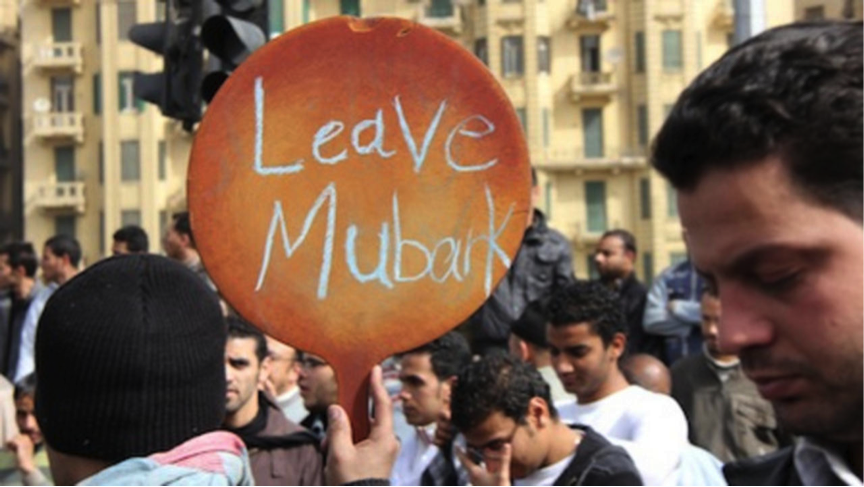
Tahrir 2011: the Good, the Bad, and the Politician (Tamer Ezzat, Ayten Amin, Amr Salama, 2011)
I wouldn't be the first or
last to note that 2011 was a year not only of unrest but of revolution. The
'Arab Spring' which looks increasingly misnamed, as if it would have better
been called the Arab Spring, Summer, Fall, and Winter or better yet, the
Regional Revolutionary Rollercoaster Ride, has inspired myriad filmmakers,
vloggers, and phone philmers to edit together clips into what sometimes amount
to roughly hewn documentaries, and other times, just fragmentary glimpses of
the times. With the technology that millions now have to hand, the impulse to
document becomes not only irresistible, but almost obligatory for those
present. Yet in the midst of the chaos that is political change, some
filmmakers have acknowledged the need to choose: Participate or film?
One Egyptian filmmaker has
gone on record to say he had to leave his camera at home in order to fully
participate as a citizen and activist for change. Wael Omar notes in a recent
issue of Dox that he knew countless
filmmakers who were shooting, and thus felt no need to add to the excess of
documentation, and despite his usual camera-ready stance, decided to put his
camera aside and be counted as one among the masses. It must have been a
difficult choice for him, but he rightly claims that making sense of events as
momentus as the overthrow of Mubarak and the shifting power dynamics that
ensued deserves time to reflect. He seems confident that he will be able to
access footage in the future and make a film that better represents the
complexity of events, with the benefit of hindsight.
Other filmmakers have had
exactly the opposite instinct and have whipped together films of the moment,
some of which truly give one the sense of 'being there', while clearly never
being able to step back to analyse the situation. There's one from Cairo called
I am in the Square (Olfat Osman,
2011), whose title tells it all. Another from Tunisia called Rouge Parole (Elyes Baccar, 2011), that
is more ambitious, giving the background to the events that the media was
unable to convey. A third, called No More
Fear (Mourad Ben Cheikh, 2011) also from Tunisia, manages to communicate
the extent of the repression at the hands of Ben Ali, and the elation of having
finally gotten rid of the repressive tyrant.
One
of the best films to come out of the 'Arab Spring' will be playing at IF this
month: Tahrir 2011: the Good, the Bad,
and the Politician (Tamer Ezzat, Ayten Amin, Amr
Salama, Egypt, 2011). Still a film made very much in the midst of
the revolutionary fervor, with little to say about the subsequent course of
events that certainly complicate its unvarnished enthusiasm, it is nonetheless
a cleverly crafted and provocative documentary. Made in one month, in the
immediate aftermath of the overthrow, it is the work of three filmmakers, who
each took up one of the subtitles of the film. ‘The Good’, made by Tamer Ezzat, is about the month of protests in Tahrir
Square leading to Mubarak's resignation. The footage is thrilling, as we see
the seeds of a new culture being sown, where ‘the people’ as an entity, really
do have power. ‘The Bad’, by Ayten Amin,
is about the secret police, several of whom uncharacteristically grant
interviews. This is perhaps the most controversial segment, where the filmmaker
rather than bludgeoning them with the blunt instrument of a crude edit,
delicately allows them to reveal their contradictions and deceitfulness with a
subtlety they perhaps don't deserve, but one that nonetheless shows a confident
and mature filmmaker at work. The final segment, by Amr Salama, is of course about Mubarak himself, and it
lampoons the leader with a piercing wit one might also not anticipate, coming
as it does in the heat of the moment. This film proves that craft needn't be
sacrificed for the sake of politics, even in the midst of revolution.
There
is undoubtedly more to come from this epoch, it feels like more comes each day,
in fact. Perhaps there will be no definitive film from any of these uprisings,
but surely the more we see, the more nuanced a view of the events we'll have.
To that aim, I am curating a program for the Istanbul Film Festival under the
rubric 'Filming Revolution', that will include several contemporary as well as
historical films documenting (or recreating in some cases) revolutionary
movements in the region. I'll write more about that program in my next month's
dispatch.
London Dispatch #48 – January 2012
TURKISH ENglish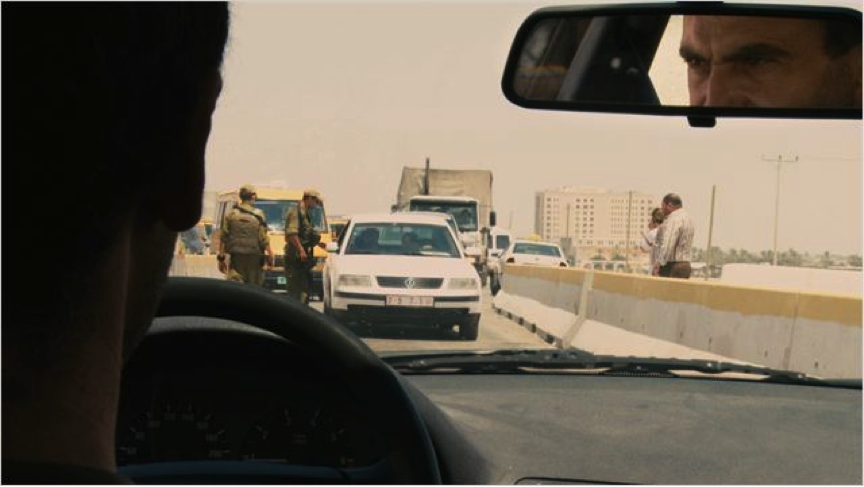
Fix Me (Raed Andoni, 2009)
It all boils down to this:
who has the right to a headache… As some of the readers of this column may have
realised, I often write about first person documentaries. I wouldn’t say I’m
obsessed with them, but I’m interested in the tensions between the personal
potential in documentary and the social or political dimensions seemingly
inherent in the form. It can all go terribly wrong, of course, with
self-absorbed people making uninteresting films that have no relevance to
anyone besides their mother. My focus has been, though, on films that manage to
be both personal and political; that succeed in drawing together the particular
and the universal. I have written, for instance, about a first person film
where the filmmaker pursues answers for himself and his family that perished in
the ‘killing fields’ of Cambodia, by ingratiating himself and then becoming
confidant to the second in command of the Khmer Rouge. The film (Enemies of the People by Thet Sambeth
and Rob Lemkin, Cambodia/UK, 2009) is both of significance to the filmmaker
personally, while also in the service of a larger social, political and
historical purpose, eliciting the long withheld truths about a painful and
still damaging period in Cambodian national history. I’ve found myself arguing
both here and elsewhere, that a first person film becomes meaningful
specifically when it brings into relief the relationship between the individual
and the collective, when it speaks not in the first person singular ‘I’, but in
the first person plural ‘we’.
Then along comes Raed
Andoni’s film Fix Me (2009,
Palestine). The premise is simple. The filmmaker goes to a psychologist to try
to unravel the reason for his headaches, which have been plaguing him since
1989. One might expect that he’d go to a doctor, but considering that 1989 was
the year of the first Intifada and the year Andoni was imprisoned by the
Israelis for taking part, one quickly understands that the headaches are very
likely psychosomatic. His mother, in the film, questions him about his
self-absorption, chiding him to be less involved with his own problems. Others
around him, such as the man he shared a prison cell with, cannot understand his
pre-occupation with himself when his people still need him. The film is part of
a struggle for individuation, a claim to one’s right to a headache, along with
the right to one’s dreams and hopes and individual satisfactions. Had it been articulated
by a spoiled American, one might not be so sympathetic, but for a Palestinian
who has given years to the dream of a nation, at the expense of his own
personal aspirations, one is compelled to see it differently. He should,
indeed, have the right to express himself not in the collective ‘we’ of first
person, but really, just as ‘me’, a guy with a headache.
I delighted in this film’s subversion of my earlier
certainties, reminding me that while generalisations may apply, the exceptions
will prove more interesting than the rule. Quite the opposite of naval gazing
self-absorption, I found this film wryly challenging in its demand for a
filmmaker’s right to focus on something so simple, personal and downright
apolitical as his headache. In contrast to my impatience with the indulgent use
of psychoanalysis in Waltz with Bashir
(Ari Folman, Israel, 2008), where Israeli soldiers try to come to grips with
their feelings of guilt at having participated –unwittingly-- in the massacres
of Sabra and Shatila, all the while without taking any real responsibility for
it, I found Fix Me a welcome
antidote, where a filmmaker, rather than hiding behind a collective, is willing
to stand up before it. I had little patience for Folman’s headaches as it were,
but had all the time in the world for Andoni’s. It all depends on who one
believes is entitled to complain, the perpetrator of state violence or its
recipient.
London Dispatch #47 – December 2011
TURKISH ENglish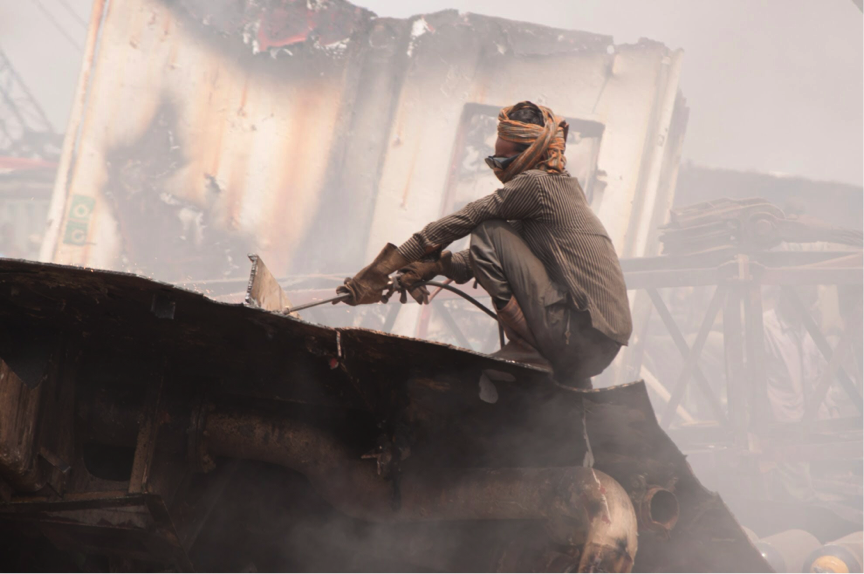
The Last Rites (Yasmine Kabir, 2008)
How can we characterize an
aesthetics of hell and how can we distinguish it from other forms of
aestheticization? This question came to me while watching the short film The Last Rites (Yasmine Kabir,
Bangladesh, 2008) at a recent 8 day festival of Indian documentary film in
London. It was a 17 minute film
about the infamous ship breaking yards in Chittagong Bangladesh, the subject
several other films that I’ve seen over the past few years. In all of the other
representations of the yard, the filmmakers seem utterly smitten with the
irresistibly photogenic site, the huge hulking tankers, half in, half out of
the water, dwarfing the ragtag army of workers who will dismantle the ships
practically with their bare hands. The breathtakingly beautiful barefoot
Bangladeshis heave steel rope over their naked shoulders singing rhythmic work
songs against the silhouette of the sun, as the mamouth ships stare back
impassively in their statuesque state of decay. This is the visual poetry of
the place, conveyed by the likes of photographer Edward Burtynsky in the film Manufactured Landscapes (Jennifer
Baichwal, Canada, 2006), which can also be described as obscene. Reviewers wax
lyrical: ‘beautiful in its depiction of ugliness,’ ‘a magisterial tour of the
world's most devastating and devastated industrial zones’. The attentive reader
of this column will remember that I excoriorated this film several months back,
precisely for its privileging aesthetics over politics.
More recently I saw
another impressively beautiful film depicting Chittagong and felt similarly. Iron Crows (Bong-Nam Park, South Korea,
2009) delves more deeply into the lives of the workers and gives a better sense
of the working conditions than Manufactured
Landscapes, but it too seems to get lost in the sheer magnitude of the
scale, the broken ships serving as too irresistible a metaphor for late
capitalism, to really focus on the hell of the place. It really is magnificent.
These films and others
sent me into a spin, fretting that aestheticization per se was the problem in
representing, well, hell. Beautification makes such scenes not only attractive,
but somehow inevitable, naturalizing their place on this planet as if they rightfully
belonged and could be justified, precisely on aesthetic grounds. I had begun to
despair, wondering if the cranky anti-aesthetes of the 1970s and 80s really did
have a point, and that if aesthetics were to ever have an oppositional rather
than affirmative politics, they could at best be an aesthetics of garbage—a
term used in Latin America in the 1970s to denote an unadorned depiction of
poverty and destitution, while recycling the detritus of life into art. Yet, in
this new shiny century of surface as depth, images of poverty and recycling end
up being the sign of high art, with films like Wasteland (Lucy Walker, US, 2010) making heroes out of top grossing
artists like Vik Muniz as he dares to dirty his hands working with garbage
recyclers in Brazil. So much for the politics of the aesthetics of garbage.
Luckily, I was able to see Kabir’s short film that
while aesthetically as complex and accomplished as any mentioned above, manages
to convey the visceral truth of Chittagong—it is a hell on earth; a labor camp
no less cruel than Buchenwald or Dachau. With her images, one feels the
impossible weight of the ropes, as shoeless feet are submerged ankle deep in
toxic petroleum; the palpable hunger driving bodies of skin and bone to repeat
arduous physical feats that would make a strong man groan. The film brought me
straight back to Night and Fog (Alain
Resnais, France, 1955) to remind me that aesthetics per se are not the problem,
it is merely the ideological purposes which aesthetics are made to serve that
must be questioned. I am grateful for Kabir’s film for reminding me of this
fact.
London Dispatch #46 – November 2011
TURKISH ENglish
The Green Wave (Ali Samadi Ahadi, 2010)
I
had been hearing about The Green Wave
(Ali Samadi Ahadi, 2010, Germany) since it came out in 2010. Friends had
reported back from IDFA that it was a ‘must see’ film. Combining animation and
interviews with archival material ranging from blogs and tweets to cell phone
video, the film reportedly vividly captured the extreme highs and lows of the
Iranian activist movement from 2009. I have been doing some research on films
of revolutionary movements and this film was high on my list to see. So I
rushed to the Institute for Contemporary Arts in London as soon as the film
opened there.
In
addition to unearthing several interesting films, my research has taught me two
things: The first is that only successful revolutions get to be called by the name
of the country (the French Revolution, the Russian Revolution, the Egyptian
Revolution). Unsuccessful attempts get a colour: the Saffron Revolution (Burma
2007), the Green Revolution (Iran 2009). An exception, though this leads me to
my second point, is the Orange Revolution (Ukraine, 2005). The second thing is
that not everything that is called a revolution should really be considered as
such. This would seem to be true about the movement in Iran, which while having
all of the signature events of a revolution – protests, government crackdowns,
arrests, martyrs, even (and this is a bit old fashioned) a leader — would be
better understood as a corrective to the revolution, not an overthrow. What the
protestors were demanding was fair elections, freedom of speech, and civil
rights for minorities, women, and others, within
the rubric of the 1979 Iranian revolution, not instead of it.
The Green Wave doesn’t explain all this,
perhaps because it tries hard not to alienate its intended audience: young
Western viewers. The film is not particularly informative but is instead an
emotional appeal by a dissident Iranian filmmaker calling on Western viewers to
support the freedom struggles of young Iranians. The film leaves you deeply
moved by a sense of injustice and the bravery of the activists, even if it is
never entirely clear what the actual politics of the movement or the political
platform of its main leader might be. One leaves the theatre with a strong
sense of outrage of the illegitimacy of the Ahmadinejad government, whose
repressive power grab was expressly backed by the Supreme Leader, Ayatollah
Khamenei, but to say the film manipulates viewer’s emotions in favour of the
opposition without indicating its political platform, is simply to state a
fact.
The
film does attest to a brutal period in contemporary Iranian history, one that
is by all accounts still on-going. There is no doubt that power is being abused
and that people are being arrested, tortured, and murdered all because they
dared to speak out in favour of a more democratic future. The film itself was
clearly a labour of love, made in a lightening fast 10 months and juggling
multiple elements, stories, and events, creatively contending with obvious gaps
in coverage. Initially seeded with funding from the Heinrich Böll foundation
and finished with co-production funds from Arte and several other Western
broadcasters, this well-intended film bears the imprints of its intended
audience rather than its subject. The film is scant in substance and heavy in
affect, giving it more pathos than political pull. Still, as a film driven by
passion and commitment, with a strong sense of urgency about it, it certainly
does not fail to leave its intended audience moved.
London Dispatch #45 – October 2011
TURKISH ENglish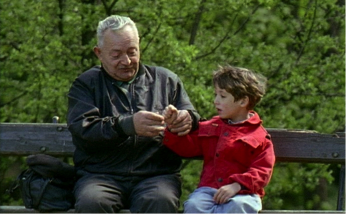
Anything Can Happen (Marcel Lozinsky, 1995)
Having just last month
praised a new documentary film festival in London, I’m a bit self conscious now
to be talking about yet another one to crop up in the area. This year
inaugurated not only the Open City documentary film festival in London, but
also the Quadrangle Film Festival, set in
the bucolic English countryside, about 40 minutes outside of London. Some of
the same people were involved in both festivals, which seems remarkable
considering they were held only a few months apart, but the festivals were
quite different at the end of the day. One obvious difference was location.
Whereas the Open City festival did attempt to create a community atmosphere, it
was nonetheless held in a semi-institutional setting on the University College
London (UCL) campus. The setting of the Quadrangle was an 18th
century farm, with a large barn and several outbuildings all retro-fitted for
screenings. Participants camped on the land as if going to a music festival,
but of course, the events were screenings and workshops and the participants
all film enthusiasts and filmmakers rather than your usual festival-revellers.
I was invited there to
give a workshop on first person film and ‘the political’ so I was ‘working.
That didn’t keep me from enjoying the grounds and the atmosphere though. The
sun was miraculously shining, the place was gorgeous, and at least a few of the
films I saw were good. Who wouldn’t love to go to documentary sleep-away camp
for a weekend? Don’t answer that. For me, it seemed like a great idea. This
being the first year, the programming was a bit uneven, with far too many of
the organizers’ friends (local, available, cheap) showing their films. Several
of the films screened were television documentaries (many already screened in
the UK on Channel 4, some still in rough cut form, soon to be broadcast), which
gave the programme too much of an ‘industry’ feel. There was very little in the
way of really inspiring and innovative documentaries, with the exception
perhaps of two ‘lost gems’, the charming Polish doc Anything Can Happen (Marcel Lozinsky, 1995) and a film from the
ever-rewarding Werner Herzog, Bells from
the Deep: Faith and Superstition in Russia (1993). With the exception of
four or five films, every other film screened at the festival this year was
made in the UK, giving the festival an unnecessarily provincial feel. And as
nearly all of the films showcased had already had television screenings, there
was something a bit stale about the selections as well.
I admit, I found this
disappointing, as I had hoped to see films that revealed a much more expansive
idea of documentary as well as of the world. I can only hope that the
programmers realise that they missed an opportunity to bring more innovative
work to their screens and next year I expect to see films from other regions
and other aesthetic inclinations. Another idea for the festival would be to
have it guest curated by people from elsewhere, to bring in fresh ideas and
films that could surprise. I still have faith, despite a slightly flat start,
that this festival will be something to put on my calendar again next year.
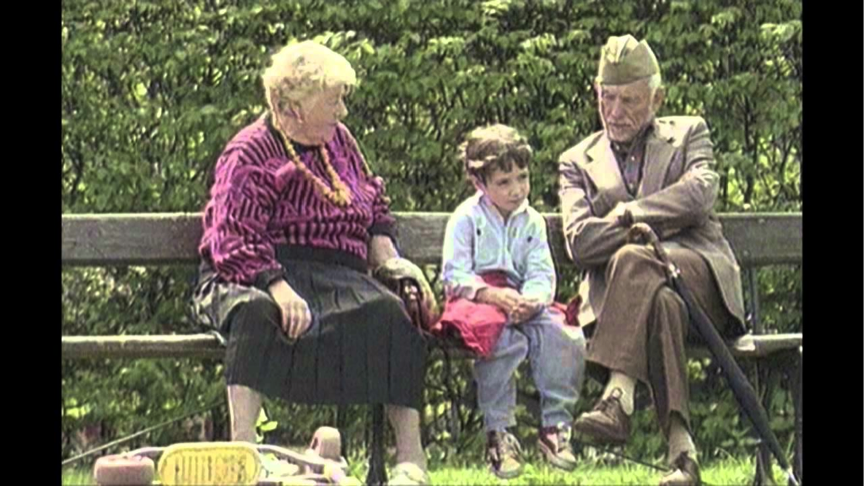
Anything Can Happen (Marcel Lozinsky, 1995)
London Dispatch #44 – September 2011
TURKISH ENglish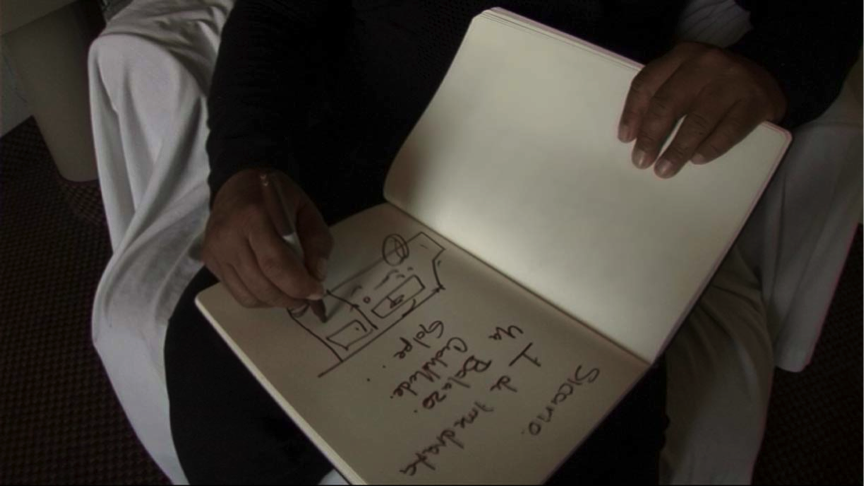
El Sicario: Room 164 (Gianfranco Rosi, 2010)
After a four-year false
start with the London International Documentary Festival (LIDF), a festival
that in my estimation has never really taken off, London has finally gotten a
documentary film festival it can be proud of. The Open City London Documentary
Film Festival, that had its inaugural run in June, seemed to hit all the right
notes with a strong selection of international documentaries, several
interesting strands (such as, ‘Crime and Punishment’, ‘Obsessions’, ‘Field and
Factory’, and ‘Science Fictions’), affordable ticket prices, and a centralised
location at University College London that allowed for an electric festival
atmosphere to develop (despite the relentless rain). The organisers behind the
festival have experience running the RAI (Royal Anthropological Institute)
International Festival of Ethnographic Films, but decided that London deserved
a documentary festival that went beyond strictly ethnographic concerns and that
was neither set up to serve the industry (Sheffield Documentary Film Festival
does that perfectly well), nor held hostage to the whims of a programmer who
seems out of step with documentary and audiences alike (a problem that plagues
the LIDF).
Open City is modelled on
the Jilahva International Documentary Festival in the Czech Republic, a
festival that according to the Open City festival director, Michael Stewart,
who knows the festival well, manages to balance aesthetic and political
concerns in contemporary documentary, offering audiences some of the best of
what documentary can offer. The connection with Jilahava meant that there was a
strong showing of Eastern European documentaries, which while not necessarily
my favourite aspect of this year’s selections, were nonetheless very
interesting.
Despite the fact that
the promised pedal-powered open-air screenings (with volunteer’s pedalling
their bikes attached to Magnificent Revolution’s bicycle powered generators) were rained out every night for the duration of
the festival, the rest of the screenings that I attended (thankfully all
indoors) were quite well attended. Several prizes, some of which I had my
doubts about, were handed out at the end by an eclectic jury, but the top
prize-winner was a film called El
Sicario: Room 164 (Gianfranco Rosi, 2010, US), one of the best documentaries I’ve seen all year. You wouldn’t
think that a film based on a single interview with a retired hit-man for the
Mexican narco-traffickers, sitting in a bland motel room with a black sheet
over his head, would make for riveting drama, let alone a confrontation with
one’s own moral code, but this powerful encounter with this animated and
articulate trained assassin is absolutely unforgettable.
Had El Sicario been the only
memorable film I had seen, I’d still be singing the festival’s praises for
bringing it to my attention. But I saw many other excellent films as well. Some
films screened are making the documentary festival circuit all around, like
Lisa Poitra’s The Oath (2010, US),
about Bin Laden’s driver, or Erasing
David (David Bond, Melinda McDougall, 2010, UK) about one man’s effort to
evade the surveillance society, but others were less predictable and in a sense
even more rewarding, such as the observational film about asylum seekers, The Arrivals (Claudine Bories, Patrice
Chagnard,
2010, France) or the surprisingly humourous Donor Unknown (Jerry Rothwall, 2010, UK)
about all of the children born from the same anonymous donor’s sperm. I’d be
happy to see the festival diversify further with inclusion of more films from
the Middle East, Asia, and Africa, but all in all, I think we’re off to a great
start.
London Dispatch #43 – July 2011
TURKISH ENglish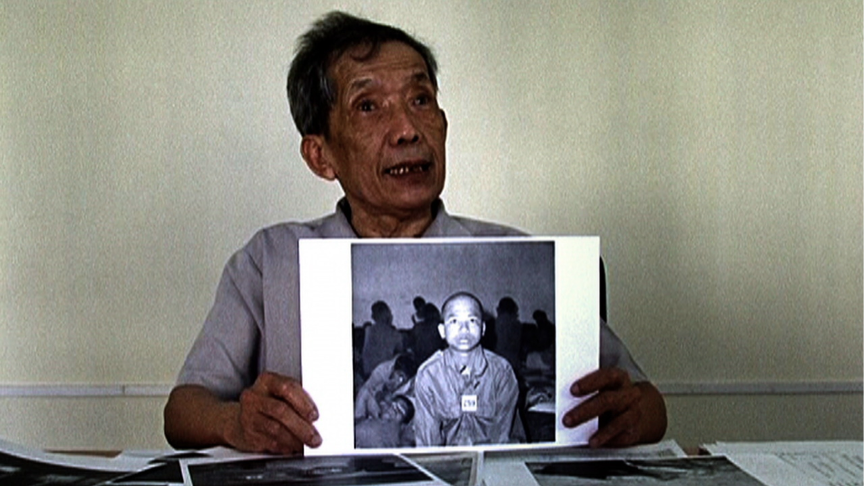
Duch: Master of the Forges of Hell (Rithy Panh, 2011)
Only one film that I saw
in Cannes this year really made an impression on me, and it was an extremely
unlikely Cannes film. I suppose Cannes is known for its sophistication in film
selection, with its competition films setting the international standards for
art house cinema, yet one realizes fairly quickly when one is actually
attending the festival that the ‘real’ Cannes is the ‘Marché’ or the market
(pazar), where the next Pixar classic or Pirates
of the Caribbean is being sold for worldwide domination, I mean,
distribution. Essentially it’s really a schlock-fest dressed up in formal
attire. Shocking but true. So, it was that much more surprising to see the very
serious Paris-based, Cambodian director Rithy Panh’s new documentary, Duch: Master of the Forges of Hell,
among the sidebar films. Rithy Panh, a French film school graduate, has made
both fiction films and documentaries, mostly to do with the effects of the
Khmer Rouge’s bloody reign from 1975 to 1979.
Duch is
a follow up to his previous documentary, S21:
The Khmer Rouge Killing Machine (2003), which stands in my estimation as
one of the most powerful documentaries of all time. S21 was the unofficial name
of the notorious Tuol Sleng prison where 17,000 Cambodians lost their lives.
The film brings together 2 of the 7 known survivors of S21 with their captors,
confronting them with the mindless cruelty of their treatment. Rather than
turning into a shrill confrontation, or worse an unconvincing reconciliation,
the film performs a feat of historical re-enactment whereby the guards retrace
their movements in the now dilapidated prison cum museum re-performing their
sadistic tasks almost via body-memory for the camera. As they mime callously
beating the already broken imaginary prisoners and refuse requests for water,
these men, who were youngsters when the Khmer Rouge forced them to do its
bidding, bring back the misery of the moment in ways that mere interviews could
never do. Yet the new film, Duch, is
made up almost entirely of a single interview.
The question that hovers
around nearly all films about the Khmer Rouge’s extreme measures against its
own people is: who was really in charge? This is a question that the film I
wrote about a few months back, Enemies of
the People, is taken up with, and Rithy Panh’s new film attempts to get the
innevitably elusive answers from Duch (real name: Kaing Guek Eav) who ran the death
prison during its entire 5 years of operation. The film’s interview takes place
a few weeks before Duch became the first Khmer Rouge operative to be tried
before the UN-backed tribunal in Phnom Penh. Duch’s appeal was just being heard
when the film was screened in Cannes, and the ever-conscientious Panh refused
to comment on the trial so as not to unduly influence its outcome. The film’s interview
with Duch, who is framed behind a desk piled high with photos of his victims,
is dizzying in its moral prevarications, much like other interview films with
historically suspect characters (think of the ambivalence of Traudl Junge in Blindspot: Hitler’s Secretary, Leni
Reifenstahl’s unlikely protestations in The
Wonderful, Horrible Life of Leni Reifenstahl, or indeed the circumspection
of the wily defence attorney Jacques Vergés in Terror’s Advocate). It would take more than one viewing to unravel
Duch’s twisted relationship to the truth, yet witnessing his struggle to
justify his actions to himself and his unsettling slippage between contrition
and self-righteousness is a study in human psychology. Duch is a fascinating film that I hope we all have the chance to
see in the theatres. If it made it to Cannes, maybe it will make it to a cinema
near you.
London Dispatch #42 – June 2011
TURKISH ENglish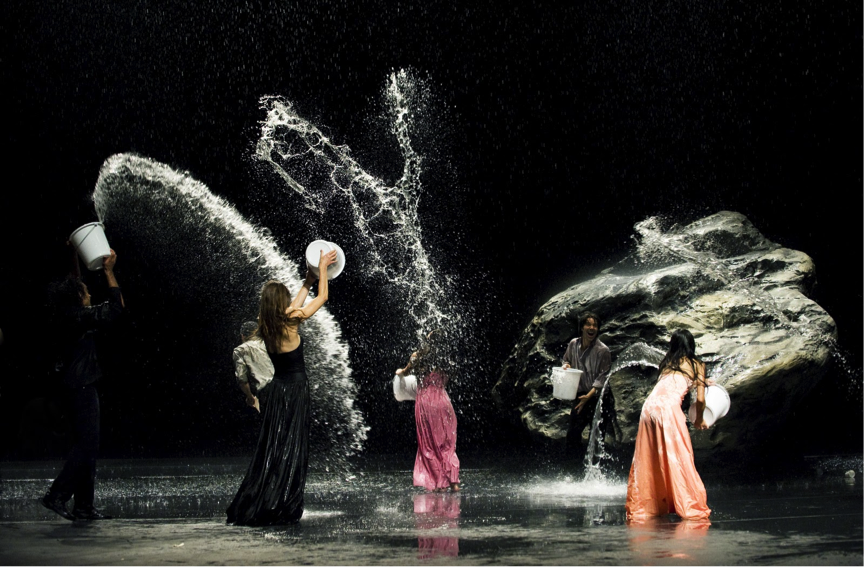
Pina (Wim Wenders, 2011)
When I heard about Wim
Wenders 3D documentary about Pina Bausch, I had my doubts. To start with, what
documentary project has the kind of money it takes to shoot in 3D? Prior to
this film, the only 3D documentaries I had ever heard of were about extreme
sports, or plumbing the depths of the sea. You know the type I mean: X Games 3D or Under the Sea in 3D. It was always the technology that was being
celebrated and a suitably dynamic subject that would draw in big audiences needed
to be found. Who had ever heard about 3D technology being made available for a
documentary on the arts?
And then, I have to
admit, that as much as I liked the music in Wenders’ Buena Vista Social Club, and the sweeping crane shots in abandoned
buildings and train stations were certainly seductive, I nonetheless had my
serious reservations about the film. With American musician Ry Cooder having to
give his imprimatur at every turn, ‘translating’ as it were, the genius of
these aging Cuban musicians so that Western audiences could appreciate their
music, making stars of them despite their economic and political circumstances,
and most likely profiting wildly off of those very circumstances, all
distracted me from the beauty of the film. It resembled too closely the
European/American colonialist gaze with a huge profit margin attached to it for
me to settle comfortably into the exquisite music, and I wondered if this new
endeavour was also simply a calculated money maker like the last. Add to this
that I’ve never been a huge Pina Bausch fan and we had the makings of a
disaster for me, so when I donned the heavy plastic 3D glasses at the Barbican
Cinema, I can say my expectations were very low: A gimmick wielded by a showman
about a sadistic taskmaster of a choreographer. Let the show begin!
Actually, when it did
begin I saw everything in double and thought perhaps Wenders was making a
self-reflexive joke, highlighting the excess of the technology by ‘misusing’
it. But it turned out my glasses were faulty and when I swapped them out with
the attendant who was luckily on hand, everything suddenly came to life. As the
curtains in the film were drawn it felt as if the dancers were coming into the
audience, practically dancing with me. The spatial relations were highlighted
and one’s senses heightened. The delight of the visual experience was only made
more sensuous by the precise yet unpredictable movements of the dancers. I was
completely entranced.
It occurred to me
afterwards that it was not a particularly good documentary about Pina Bausch,
who had died unexpectedly only 5 days after being diagnosed with cancer and
just 2 days before the initial shooting was scheduled to begin. This is not the
film they had intended to make. That film was cancelled, and Pina is Wenders’ tribute to his friend.
But as a result, the dancers reveal very little about Bausch and are generally
interviewed only to add to her mystique. It is a hagiographic eulogy to be
sure, with not a step out of place. We are never even treated to a rehearsal.
Every performance is picture perfect, in glorious Technicolor and, of course,
in 3 dimensions. The only thing that remains flat, is our impression of Pina
herself, never allowed the full dimensionality of a complex person, but rather
glorified and sanctified like a god. Still, the rendering of her dances in 3D
made me appreciate her artistry more than I ever had and certainly this is a
worthy tribute. I now cannot wait to see next 3D documentary (it seems to be a
trend), by someone I consider to be a far superior director, incapable of
cliche, and in whose hands 3D will no doubt become a spellbinding myth spinning
apparatus: Herzog’s Cave of Forgotten
Dreams.
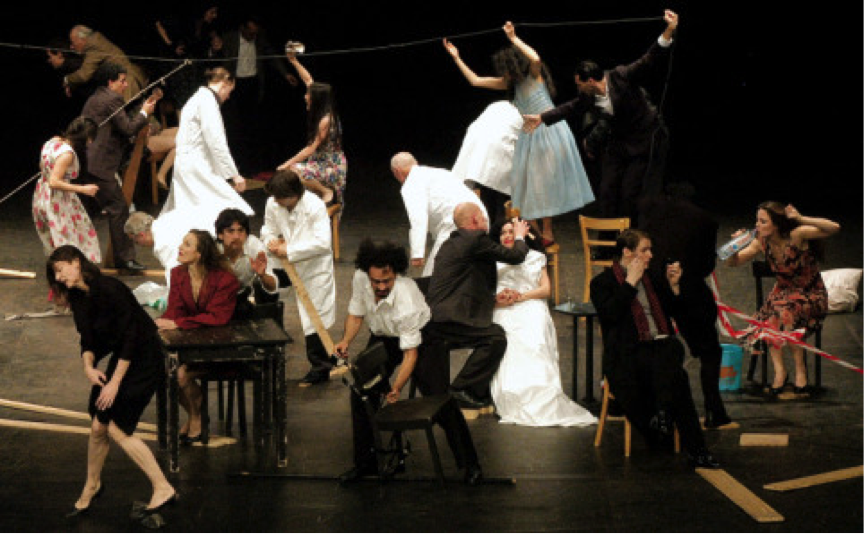
Pina (Wim Wenders, 2011)
London Dispatch #41 – May 2011
TURKISH ENglish
Marxism Today (Prologue) (Phil Collins 2010)
Usually at this time of year I’m writing about
festival overload. The Human Rights Watch film festival has just ended, as has
the London Lesbian and Gay Film Festival, and only a few weeks earlier, we had
the Birds Eye View Film Festival, one of the few festivals left which
highlights women’s filmmaking. This year though, I took time off from
festivals, seeing very little of what was on offer, and thus having little to
report on this theme. What I did manage to catch was the BFI’s last ever
exhibition in its soon to be closed gallery space, an exhibition called
‘Marxism Today’, by artist Phil Collins. Despite his name, he is not to be
confused with the wistful, mournful, and to me totally uninteresting, pop star
from the 1980s. This Phil Collins is an artist and a filmmaker, once nominated
for the much esteemed Turner Prize here in England.
The exhibition consists of two short
documentaries: Marxism Today (prologue) (2010), first
shown at the 6th Berlin Biennale, and a new companion video, Use! Value! Exchange! (2010). The first, Marxism Today, interviews three teachers
from the former GDR, all of whom taught Marxist Leninism, a compulsory subject
for all students in East Germany prior to the fall of the wall in 1989. While
the teachers are not nostalgic per se, of the time when their expertise was
valued, or indeed, of a time when they could find employment within it, their
stories do indicate a trauma not previously perceived (by me at least), caused
by that momentus historical moment. 1989 marks something of a tragedy,
especially for the first teacher interviewed, Petra Mgoza-Zeckay, who along with losing her job and livelihood, also lost
her African-born husband who committed suicide upon learning that the systemic
transition meant that he would lose his visa. For her, 1989 was less about the falling of a wall than
it was about the total collapse of a life.
The
interviews are interspersed with archival footage of precisely the type of
lesson that these teachers would have given, made for the purposes of teacher
training. The class is comprised of engaged teenagers who seem surprisingly
(again, to me) free to ask challenging questions and even to posit that their
West German relatives don’t seem to be exploited in the way the teacher
asserts. Although the teacher patiently guides them to use rational logic to
assess the ‘objective circumstances’ of exploitation, and we know in the end
that their ideas will ultimately have to conform to the aims of the lesson,
nonetheless, the degree of debate as well as the impassioned engagement of the
students impressed me. I tried to imagine such a lesson during the cold war in
my high school in New York, and could think of no equivalent. In the US we
didn’t debate the merits of the economic and ideological system under which we
lived as much as simply assuming its inevitability. There really is something
to be said for exposing the mechanisms of ideology rather than simply existing
within it.
The
second film had one of the interviewees from the first go back to the school in
which she once taught, which has since turned into a business school, to give
the exact lesson on Marx’s theory of capital to contemporary students. The
students within the film are in essence the film audience’s proxy, standing in
for us, the products of some form of post-Soviet era capitalism. Though the
films were clearly conceived of and made prior to both the mass activism in
Collins’ native UK against the government’s draconian budget cuts, as well as
the revolutionary movements sweeping the Middle East, dubbed the ‘Arab Spring’
by the press, they nonetheless provide audiences with perfectly timed
information about how to think ‘otherwise’ in this moment of possibility and
change: a welcome dose of much needed ideas.
London Dispatch #40 – April 2011
TURKISH ENglish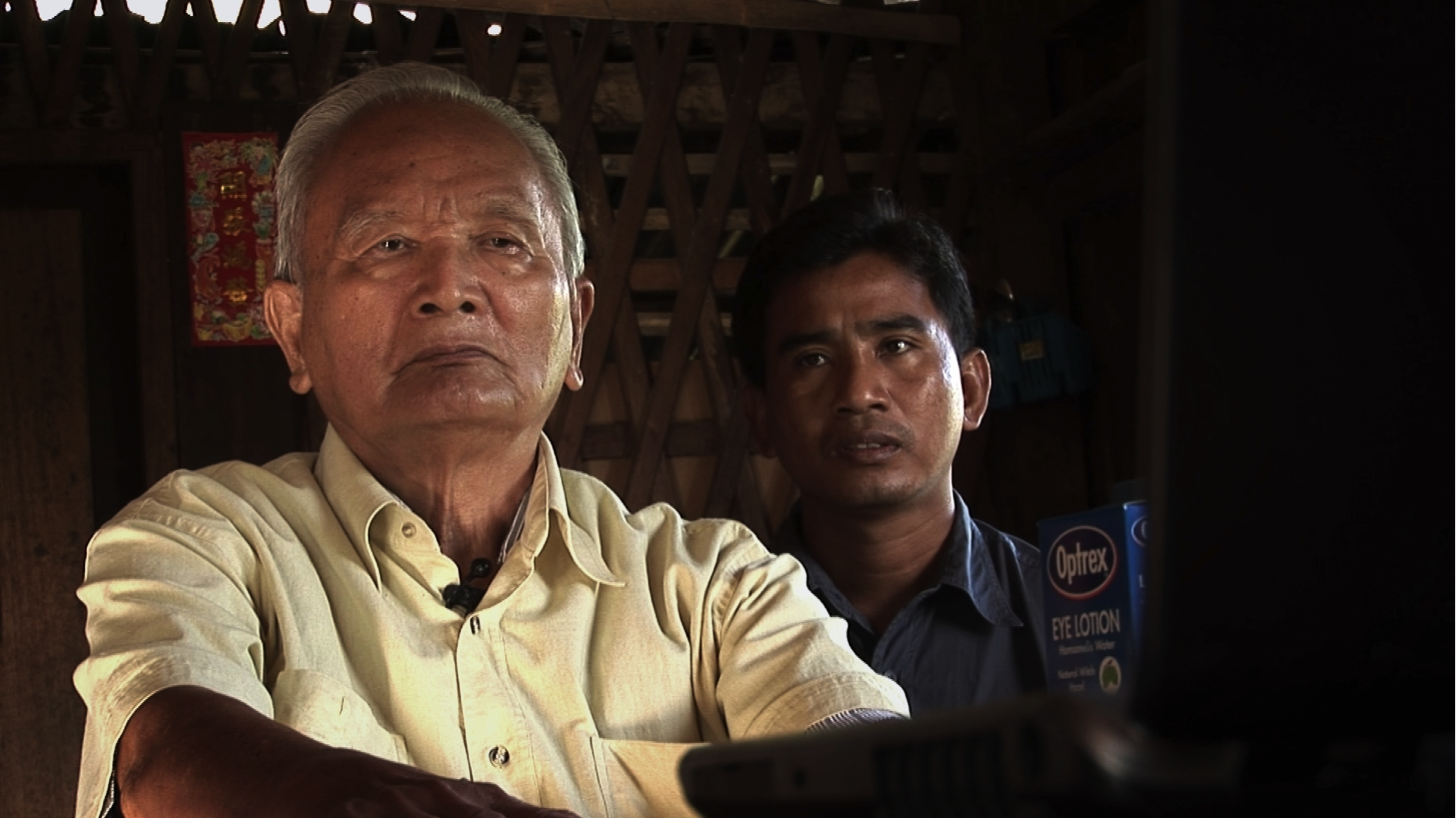
Enemies of the People (Thet Sambath and Rob Lemkin, 2010)
I have been thinking a lot recently about the
politics of first person film. The question that has been gnawing at me is: are
first person films merely extensions of a weak identity politics and a soft,
even neo-liberal, form of humanism, or do they have the potential to operate in
the service of a more radical political agenda? In other words, and to be
utterly reductive, are they self-absorbed and individualistic or is it possible
for them to comprise an important political intervention, via the use of personal
narrative.
I recently attended the Brighton SEE
Documentary Film Festival where this question was answered in the form of a
revealing contrast. In the afternoon of the last day, I watched a well-made
film called My Kidnapper, by a
British television producer named Mark Henderson, who spent 101 days held
hostage in the Columbian rainforest, kidnapped by the Marxist rebel faction, the
ELN. In the film, he and some of his fellow hostages (a German and two
Israelis) go back to the site of their abduction to work through their trauma.
As Mark and his German fellow abductee confront two of their former kidnappers (who
had initiated contact not long after Mark’s repatriation) with stories of
personal distress, essentially wrangling an apology out of the now repentant
former guerilleros, they evoke the discourse of individual human rights,
arguing that there was a gross contradiction between the guerilleros’ fight for
freedom while depriving these individuals of theirs.
This is a prime example of the way in which
individualist ideology is utterly uncomprehending in the face of collective
revolutionary struggles, and shows precisely how first person film, even when
dealing directly with a political subject, can tend toward political
regressiveness. The film itself attempts to return the hegemonic power
relations back to their global order, with the Europeans and Israelis taking
ther ‘rightful’ place as moral arbiters while holding all of the economic (not
to mention cultural) power in their hands. At the same time it neatly
transforms characters from former colonial and/or perpetrator cultures,
infamous for their human rights infringements, into the victims at the hands of
their brutal, inhumane, hosts.
On the opposite end of the spectrum, the last
screening of the festival was the awe-inspiring Enemies of the People (Rob Lemkin and Thet Sambath, 2009) where
Cambodian journalist, Thet Sambath, is compelled by personal reasons (the death
of his father, brother and eventually his mother at the hands of the Khmer
Rouge) to uncover the policies behind the notorious ‘Killing Fields’. Sambath spends
years, slowly, patiently, building trust and developing relationships not only
with village level functionaries who turned into cold-blooded killers during
the merciless campaign, but also with the second-in-command under Pol Pot, Nuon Chea, who eventually and for the
first time in history, admits the orders to kill came from the top.
Astonishingly, there is a recognition of mutual humanity and a shared history
in these face-to-face encounters enabled by Sambath’s gentle, never accusatory,
approach, which is eventually rewarded with the perpetrators’ deep reckoning
with their own actions. This film makes us register on all levels the magnitude
of the national trauma and the power of film in the processes of mourning,
healing, and witnessing for the future, all indispensible elements in the
process of cultural and political change.
To come back to the question with which I began,
it became undeniably evident, seeing these films virtually back to back, that a
film like My Kidnapper is motivated
by a liberal-humanist political logic of individual rights and liberties, that
fulfils only the most self-serving ends of making the West feel righteous in
the face of the barbarous rest, while Enemies
of the People is a potent vehicle towards national reconciliation, which
attempts a much more ambitious collective project with far reaching social and
political aims. If My Kidnapper
confirmed my worst fears of first person filmmaking, Enemies of the People renewed my confidence in the power and
potential of the first person mode of address.
London Dispatch #39 – March 2011
TURKISH ENglish
48 (Susana de Sousa Dias, 2009)
The fourth annual Documentary Now! was held at
Westminster University in London, during the last weekend in January.
Documentary Now! is a documentary studies conference that I organise with my
colleague Professor Michael Chanan. It is the only documentary film studies
conference in the UK and it brings together people working in this field from
all over Europe and beyond, to share their latest research and ideas and to
benefit from a concentration of a passionate community of scholars, students,
and makers all focussed for that weekend at least, on the subject of
documentary. It may sound idealistic, but I really enjoy being able to create a
context for such encounters.
This year’s Documentary Now! conference took as
its main theme the subject of sound and music in documentary. The tendency to
overemphasize the visual over the aural in film studies generally, and
certainly in the study of documentary, is undeniable. And we ignore sound in
documentary at our peril. It’s not just the powerful effects of musical scores
and soundracks we must be more attentive to, it is the way in which voice is
used to anchor not only meaning but truth, the choices to leave in or cut out
extraneous sounds such as sighs, coughs, stutters, slips of the tongue, the
uses of silence, and much more. While theorists have written about body
language and the ways in which humans communicate beyond the spoken word, not
nearly enough good thinking has been brought to bear on extra-linguistic sound
in documentary. As we saw over the weekend of Documentary Now! with papers on
just this sort of thing, there is a tremendous amount to be learned from these
aural appendages to communication.
The
film we chose to screen for the opening night was one that I’ve written about
before in this column: Susana de Sousa Dias’ award winning film on the
Portugese dictatorship, 48. A film
with no musical score and a minimal visual track comprised of still photographs
–– mug shots of political prisoners taken in jail –– might seem a strange
choice for the theme of sound and music in documentary. And while it was by no
means an obvious one, the attention to detail on the soundtrack, where the
person in the photograph reflects back in an audio interview on the moment that
photo was taken, has a potent effect on the viewer. The interviews themselves
are edited in a way that audio affect is highlighted, perhaps even more than
the actual words spoken. The film begins silently, with white text about the
Salazar dictatorship on a black screen. Ever so slowly, after the words fade
out, an image begins to appear as if being developed before our eyes and we
hear a deep sigh. As the face becomes clearer, the voice begins to speak. We
learn little of the facts. We never know when or where the photograph was
taken. We don’t learn what the charges might have been nor if the person was
ever found guilty. The reflections upon the photographs range from the actual
moment recalled (whether one had been deprived of sleep, why one might have
chosen to smile or stare defiantly, what had just happened before the shutter
clicked) to personal, social and/or political reflections about the era in
which it was taken. But the cause of the audience’s rapt attention at Friday
night’s screening, was the powerfully evocative attention to audio extrania—to the
awkward laugh, the unintended snort, the heavy sigh—that conveys more than any
words can tell. People, for the most part, know how to make sense of their
experiences, no matter how traumatic, but they cannot suppress those
extra-linguistic expressions that tell us that the effects of that time remain
with them –– and us–– in the present. It is not solely the words that make
their testimonies effective, it is their sounds and silences as well. The more
we attune ourselves to these nuances, the more these films have to ‘say’.
London Dispatch #38 – February 2011
TURKISH ENglish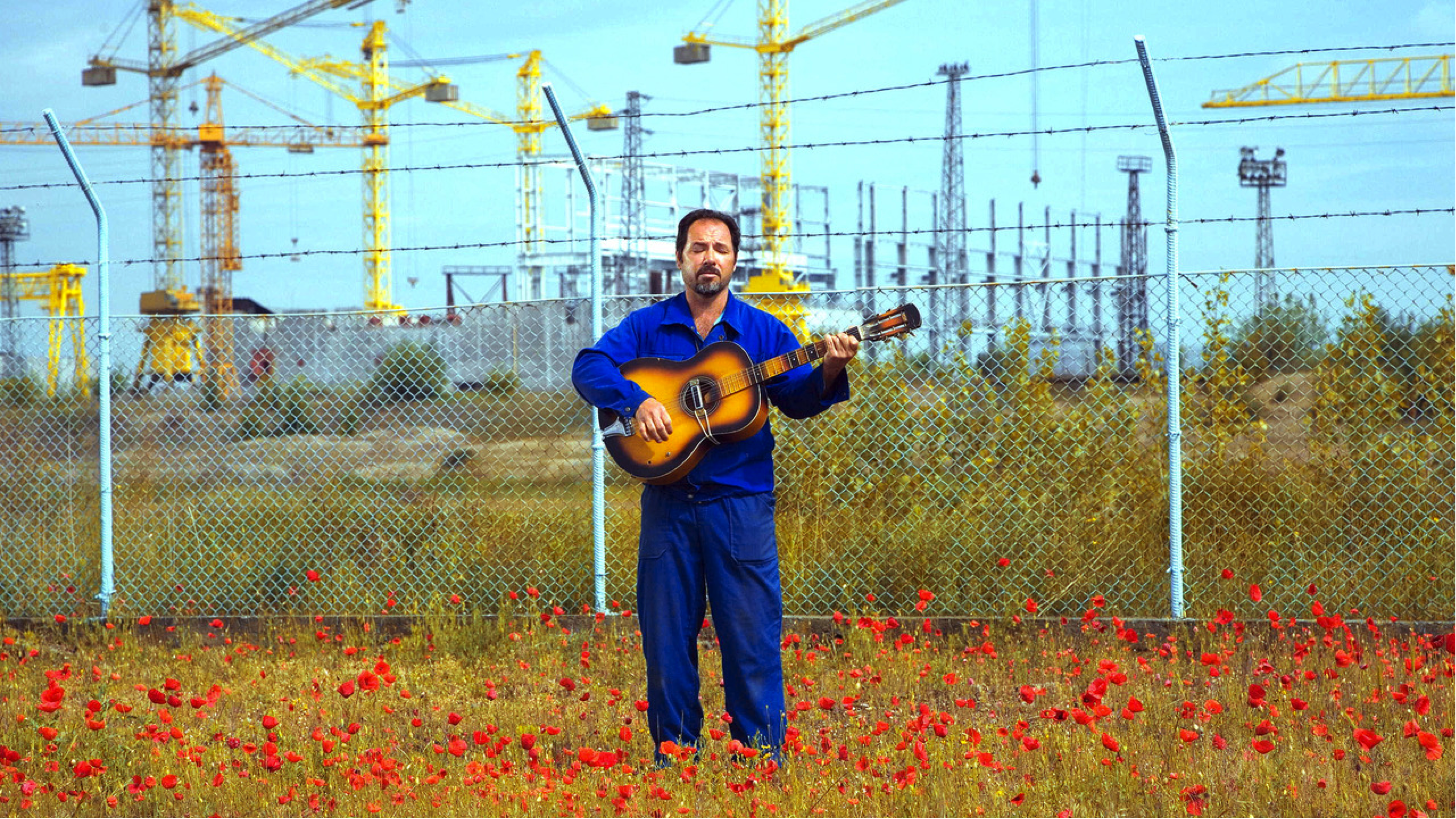
The Mosquito Problem and Other Stories (Andrey Paounov, Bulgaria, 2007)
Last month I finally managed to be in Istanbul for one of the SaturDox
events at Depo. I had heard they were popular and that there were usually
people sitting in the aisles and crowding the exits, crammed in to see the
documentaries that Necati Sonmez and Emel Celebi, along with their
Documentarist team, select for these bi-monthly screenings. I know Istanbul is
film crazy, and that the city has no trouble supporting several film festivals,
with audiences packing the house repeatedly, but I have never really known Istanbul
to be ‘documentary crazy’. In fact, up until recently, I have often felt that I
was peddling my not entirely welcome wares when always talking about
documentary developments and documentary related news. I can remember
conversations with Turkish film scholars, with us scratching our heads trying
to think of one single person writing about film in Turkey who focussed on
documentary as their main subject. And this just a year ago. We might still
struggle to find very many, but at least now we know there are some. In the
Visible Evidence documentary studies conference we organized at Bogazici last
August, there were at least 10 Turkish presenters. And at the SaturDox event, I
realized, that the rumor was true: Istanbul seems to be discovering documentary!
I couldn’t be happier.
The film that was screened, The Mosquito Problem and Other Stories
(Andrey Paounov, Bulgaria, 2007), was a tragic-comic reckoning of a post-soviet
town situated bucolically yet miserably on the banks of the Danube, with, as
the name of the film suggests, a serious mosquito problem. The film was
projected from a computer, with the wrong aspect ratio, cutting off the sides
and some of the titles, with digital noise in the frame, and yet none of this
seemed to matter at all to the gathered audience on this rainy winter night.
People packed in to see the film and mostly stayed for the discussion,
moderated by Sonmez, with two representatives of new documentary directions in
Turkey (Zeynep Dadak and Özgür Doğan) and one somewhat more old-school
contributor (Yüksel Aksu). Through the haze of my fluish head, and the muddle
of my Turkish comprehension, I could still decipher that the level of
discussion about directions in documentary was incredibly sophisticated and
bode well for its future. Dadak talked about the use of humor in the
film—something of a new trend in Eastern European documentaries (she cited last
year’s Cooking History, Peter Kerekes
2009, Czech Republic,as another example, and I might add the Polish short Szcesciarze (The Lucky Ones, Tomasz Wolski, Poland 2009) to back up her claim).
Doğan discussed the strategic truth-value in documentary, that he and
collaborator Orhan Keskinsöy, felt was absolutely crucial for their film Iki Dil Bir Bavul (2008). He claimed, I
think rightly, that had they approached the same topic in a fiction film, they
would have been dismissed as ‘too fantastical or alternatively ‘too
ideological’, yet with documentary, despite the fact that it too has its
fabrications and slavish concessions to narrative, it is harder to dismiss or
deny. This idea of the strategic use of documentary for its ‘truth value’ is
indeed a very advanced and impressive understanding of its function in the
world of images, nothing naïve or underdeveloped about it.
This
made Aksu’s contribution all the more surprising and out of date, as he claimed
that Turkish documentary was not as developed as it could be and he decried the
‘mentality’ that made this so. It seemed to me that his assertions were missing
the very apparent fact that things are indeed changing in Turkey for
documentary, and the change was happening right under his nose. Even with my
stuffed up schnaz, I could smell the winds of change—and they did me a world of
good.
London Dispatch #37 – January 2011
TURKISH ENglish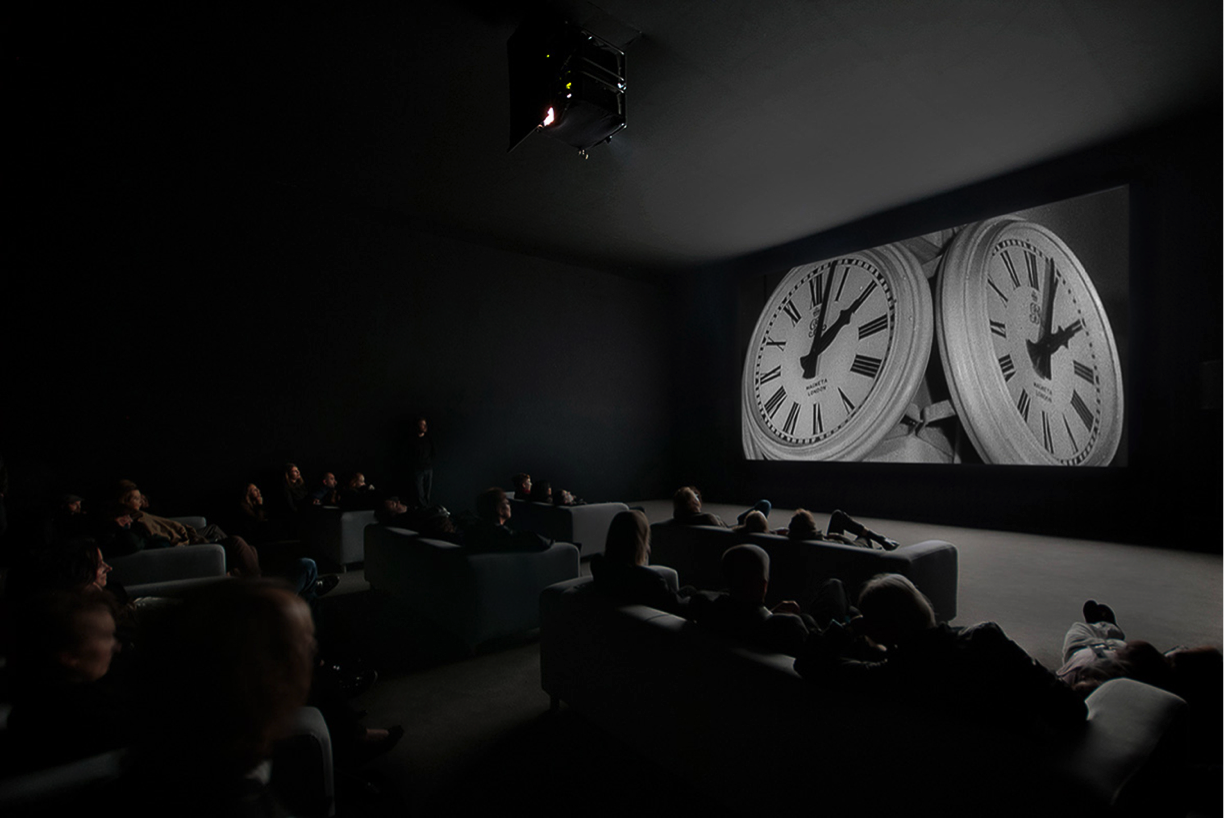
Christian Marclay’s The Clock (2010)
Documentary
theorist Bill Nichols once argued that one of the main features that made
documentary distinctive was its ‘indexicality’. What does this mean? Well,
according to the dictionary, an index is an indicator, sign or measure of
something. So, if a barometer is an index of atmospheric pressure, and a
thermometer is an index of temperature, then presumably, a documentary would be
an index of reality. I have always had a problem with this notion. I mean, of
course all photography can in some sense be seen as an indexical measure of the
pro-filmic (that which is in front of the camera lens), in that the
photographic image bears some sign of the world it has recorded. Light makes
its impression on the photo-sensitive material and the effect is a sign or indicator
of what was before the lens. But beyond the scientific explanation of
photography, of which I obviously have only the vaguest grasp, how can we
assume that a documentary, with all of its manipulation of time, space and
meaning itself, is a measure or sign of reality any more than any other
creative art? We can’t. At least that’s what I maintained up until the moment I
saw Christian Marclay’s The Clock
(2010).
The Clock screened at the White Cube Gallery in London. It was
on for a month, but for some reason I waited until the very last day of the
show to go. I waited for three hours to get in, which in a sense began to
prepare me for the alternative sense of time that I was about to experience. I
had heard about the show but didn’t expect much. It sounded gimmicky: a 24 hour
video collage made of thousands of film clips all referring to time, organized
in a manner that ‘keeps the time’. All of the clips are edited in chronology
(literally), so that when it is 4:25 on your watch, it is 4:25 ‘in the movies’
on screen. And while there is not a single documentary image in the entire 24
hours (to the best of my knowledge), I can think of no better example of an
indexical documentary.
Every moment of
every minute in every hour for 24 hours, is tied to the time referent of the
world in which the spectator exists. The film is a literal index of time, a
time piece made up entirely of film clips projected on a screen. If I could
(and if it weren’t such a colossal waste of electricity), I’d have the film
running in my house as my wall clock.
As an art piece,
it’s nothing short of epic. Despite the fact that Marclay’s filmic references
are what you’d expect of an American-born artist who was raised in Switzerland,
that is to say, most of the films are drawn from Hollywood, European Art House
Cinema, and a sprinkling of ‘world cinema’, the sheer magnitude of material is
breathtaking. My companion (who went on to write a column in Radikal about the exhibition shortly
after we saw it) was tempted to make generalizations about Hollywood’s
obsession with time and time pieces, to which I had to respond that had
Marclay’s references been broader, we’d likely find such obsessions were not
Hollywood’s alone, but shared by Bollywood, Nollywood, Egyptian cinema, and
much beyond.
I
sat for three and a half hours, mesmerised and unable to budge. Time contracted
and expanded before my eyes, and I found myself checking my watch regularly,
without understanding its meaning except in reference to the time in the film.
In some sense, the world and its referent dropped away and all there was, was
time: time in film, which is arguably even better than an index of the world,
as the film absorbs the viewers, becoming a world of time unto itself.
London Dispatch #36 – December 2010
TURKISH ENglish
Robinson in Ruins (Patrick Keiller, 2010)
How should one choose which films to go to at the London
Film Festival? Perhaps I’m not the one to answer this question. With such a
commercial festival, I tend to opt for the films without distributors, which
are usually the artist’s films, experimental films, and of course, the
documentaries. This year I decided to limit my attendance to 10, so I had to
choose carefully. Anything that I believed I would be able to see in the
theatres or buy on dvd was immediately eliminated. Love stories, of which there
were a seemingly endless number, mostly French, were also out.
There were several new films by veteran documentarians like
Errol Morris, Patrick Keiller, and Kim Longinotto, that I felt I should see
(though why I didn’t go to Frederick Wiseman’s new documentary, we’ll never
know), along with John Akomfrah’s return to the cinema (he became well known in
Britain in the 1980s for his work with the Black Audio Collective) and Turner
Prize winning artist-turned-filmmaker, Gillian Wearing’s debut film, Self Made. So these, for the most part,
comprised my selection.
While Errol Morris’ new film, Tabloid, was entertaining enough, it was so feather-light that it
failed to make much of an impression. One had the feeling that he popped this
one out while working on something much more challenging. Patrick Keiller,
known for his ‘Robinson’ series (London
1994, and Robinson in Space 1997), revived his made-up protagonist for a
third film, Robinson in Ruins, after
thirteen dormant years. Admittedly, the Robinson trilogy is best appreciated by
a well-educated English audience, since most of the arcane references are lost
on imposters like me, who live here but are not ‘of’ the place. Knowing and
accepting that I was at a distinct cultural disadvantage with the earlier films,
I could still marvel at their sardonic yet erudite wit, and the cultural
critique always embedded in the meandering narrative. His visuals were also
always arresting. The visual style of his new film is similarly captivating, as
Keiller is a consummate landscape filmmaker and his eye for poetic visual
ironies is very sharp. However the narrative rambled, as did his Q+A session
afterwards, and one had the distinct impression that he had perhaps finally
lost the plot.
Kim Longinotto, a feminist documentarian who has made some
truly memorable films in the past (Dream
Girls 1994, Shinjuki Boys 1995, Divorce Iranian Style 1998, Runaway 2001) screened her new film
about the extraordinary leader of the ‘pink saris’ gang in Uttar Pradesh,
India, yet in her post-screening Q+A session, she managed to be so
condescending toward her subject that I had to reflect back on the film to
realize that indeed, the film was quite conventional, attempting to fit the
central protagonist, Sampat (devlet gibi bir kadin) into a traditional heroic
narrative, and as she fit the mould too imperfectly, it inevitably fails to
deliver the kind of hero such films demand. I suppose I had thought of that
very failure as the film’s strength, but then I realized that Longinotto had
actually been looking for one, and her disappointment was like that of a
disciple who realizes her saviour is merely human, and cannot forgive her for
it. The dynamic that emerged was a very troubled one, and although I can’t say
for sure whether it is apparent in the film itself, the experience of the Q+A
afterwards had a very unsettling effect.
It
went from bad to worse upon seeing Gillian Wearing’s human experiment, Self-Made, where the artist placed ads
asking people if they wanted to be in a film, and subjected 7 unlucky winners
to ‘method acting’ sessions to bring out their emotional expressiveness. It was
a bit like reality television meets pop-psychology, as the 7 reveal their
loneliness, their troubled relationships with parents or themselves, and one by
one the film attempts to resolve their traumas through ‘acting’. The
superficiality of the endeavour was unmistakable, though again, the Q+A session
emphasized the weakest points of the film. I suppose there are two morals to
this column, the first is: don’t let me pick the films; and the second is: it’s
not always a good idea to have filmmakers speak after their screenings.
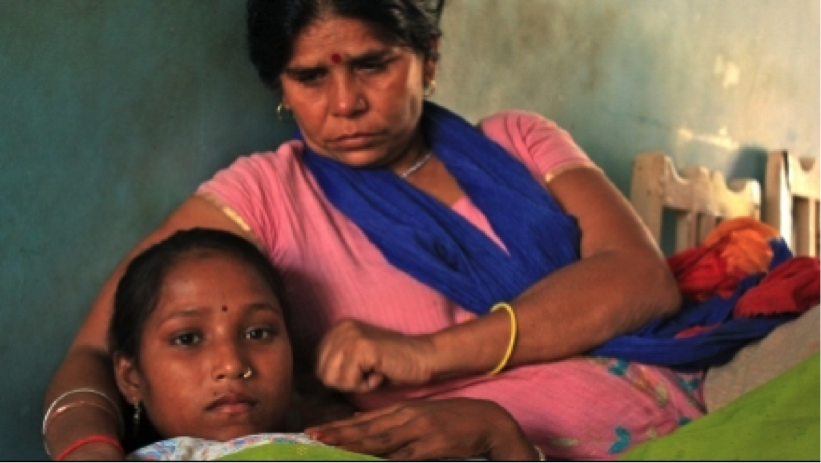
Pink Saris (Kim Longinotto, 2010)
London Dispatch #35 – November 2010
TURKISH ENglishWhen I was in Istanbul this past summer, I caught the tail
end of Documentarist’s Istanbul Belgesel Günleri, an ambitious gift to the
Istanbul ‘community’ put on by a small but dedicated team headed by Emel Çelebi
and Necati Sönmez. I attended the impressive master class of Eyal Sivan, whose
venue was switched at the last minute From Aksanat to Depo, because Akbank
deemed him to be ‘too political’! I also managed to see a few films I hadn’t
seen elsewhere, but the films I really wanted to see, all of the Turkish
documentaries released this year, were inexplicably all clustered at the
beginning of the festival, before I arrived. Of course, being self-centered and
self-obsessed, I had no other choice but to see it as a conspiracy against me:
obviously Emel and Necati were keeping those films from me!
Slowly but surely I’ve tapping every contact I have to get
my hands on some of the titles I missed. I recently watched one that really
surprised me. It was called Babam Tarih
Yapıyor
(Haydar Demirtaş, 2010) and I
thought I should watch it because it was a first person film, which is one of
my areas of real interest, and it had an important sounding theme. But both of
those reasons sound a lot like obligation, precisely what would normally keep
me from popping the dvd into the player to actually watch the film. But watch
it I did. The first surprise was the language. I had made sure to get a
subtitled version but the subtitles were in Turkish. It didn’t take me long to
realize that the spoken language in the film was not. Almost the entire film is
in Kurdish, with some Assyrian thrown in for good measure. This small detail is
not included in any of the synopses I could find about the film. What is
highlighted in the descriptions is the cooperation between Muslim and Christian
neighbors in the renovation of an historically significant Assyrian Church near
Marden. No mention at all is made of the fact that it is two minority
communities who manage this small feat of co-existence, a detail that strikes
me as quite relevant.
The other pleasant surprise was the mode of filmmaking
employed. Demirtaş, so the story goes, is a film
student. Arguably, not a documentary film student. I say this as a compliment,
in fact, since I believe that those trained in filmmaking more broadly, tend to
approach documentary topics with a filmic eye. I expected a dry, earnest,
family portrait that went at its subject head on, trying to get the various
participants to tell us, via craftless interviews, how important their work is,
not only for themselves, but for posterity. Thankfully, this young filmmaker
instead imagined both the visual potential of the piece and the need for some
dramatic structure. He reflexively highlights his filmmaking in the first
scenes at home with his family, with the tripod or camera visible in the shot.
He soon makes it clear that he is asking his father to perform for the camera,
by having his father do a retake of a shot, telling him from behind the camera,
not to look at the lens as he walks by. The father dutifully performs take 2,
and the filmmaker intentionally keeps both scenes in the film to draw our
attention to the artifice.
In a brief panning shot of the interior
of the Demirtaş home, we see the typical furniture and decoration of an Eastern
Anatolian home, with the unexpected, and meaningful, addition of posters and
postcards of favorite films, including Bahman Ghobadi’s Turtles Can Fly, signalling a reverance for a Kurdish filmmaker who
specializes in what we may call ‘docudrama’ or ‘staged documentary’—precisely
the style that this short film aspires to.
I can’t say all of the scenes were
entirely convincing—it’s not easy to get good performances from non-actors—but
overall, the film was reaching for its style, not just trying to clumsily
deliver its message, and this I found very refreshing.
London Dispatch #34 – October 2010
TURKISH ENglish
Sky on Location (Babette Mangolte, 1982)
Sometimes you go to a screening of a film that is not
particularly great but that nonetheless inspires you to new thought. That was
the case when I went to a screening of a film by renowned cinematographer,
Babette Mangolte, known predominantly to me as Chantal Akerman’s
cinematographer, but also known in her own right as a documentary filmmaker,
mostly of performance art. This film, however, was called Sky on Location (1982) and was in part a filmic study of landscape,
and in part a meditation on the cultural histories that are grafted onto
landscapes, like a palimpsest. The idea is of course a good one, even if this
particular film was not a stellar example. But as I say, the screening got me
thinking.
Firstly, there was the fact that we were in the attic loft
of an ‘alternative’ screening space in East London called ‘no.where’ and we
were watching the film projected on 16 mm film. The noise of the projector was
a presence in the room, reminding me that it had been years, literally, since I
had seen a 16mm film projected on anything but a video screen. Mangolte even
pointed out the fact that the film was made just as video was gaining
prominence and she realized that viewing habits were beginning to change.
Attention spans began to grow shorter. The singularity of the screening as an
‘event’ had begun to wane. The loud purr of the projector was a sound I had
almost forgotten, and it reminded me that I was actually watching a film on
celluloid, the play of light and shadow flickering in intervals across the room
onto a broad white screen. I suddenly became nostalgic for film in a way I had
never been before. There was a fragile but undeniable presence of the film and
a unique ephemerality that is simply not part of the experience when watching a
film on dvd. I had the sense that I may never be able to see this film again,
which made it somehow precious.
And then there was the idea of landscape as the central
organizing principle of a documentary: the sky as the set of the film; the sun
as the main actor; the land in all of its fascinating formations, the
mise-en-scene. Mangolte told us that when she first saw the impressive views of
the American West, it was out of a bus window, which can, in effect, mimic the
frame and even the motion of a camera. With the sun changing the lighting so
dramatically, and the landscape changing form over time, she thought, “well,
there’s a movie”, for what after all is a movie if not “change in time”?
There are others who have taken the idea of the unfolding
landscape as cinema much further than Mangolte does in this film. In fact, the
filmmaker with whom Mangolte has collaborated most closely, Chantal Akerman, is
a master at evoking meaning and narrative through extended pans of landscape. Her
film D’Est (1993), not, incidentally,
shot by Mangolte, manages to reveal whole complex histories of Soviet and
post-Soviet eras in her deceptively simple drive-by shots of the terrain.
One of my companions at the screening reminded me of James
Benning’s work, which takes many of the same themes as Sky on Location (nature, landscape, the environment, the American
West, native American culture, colonialism, racism, etc.) but in his films,
such as Deseret (1995) or El Valley Centro (2000), all of the central themes are made
manifest through a simple, spare sound montage overlaid onto extended landscape
shots that allow us to meditate on the ways that culture imprints itself on the
land, like an indelible stain. Although Sky
on Location, with its chaotic editing and excessively didactic voice over
text, was not in itself a great revelation, the experience of seeing it
screened on film at no.where, was something I’m glad I didn’t miss.
London Dispatch #33 – September 2010
TURKISH ENglish
Still Life (Natureza Morta, 2005)
Can a filmmaker ever hope to adequately represent torture? I
found myself wondering about this during Susana de Sousa Dias’ recent
presentation at this year’s Visible Evidence conference, which docIstanbul
organized at Bogazici University last month. If any filmmaker could, I felt
certain de Sousa Dias would be a likely candidate. In the first film she spoke
about, Still Life (Natureza Morta, 2005), a film
commissioned by French television, she mined the archives of Portugal’s 48 year
dictatorship, looking at hundreds of hours of film footage of everything
related to their reign, including military parades, colonial exploits and wars,
as well as actual footage of police ‘interrogations’. For this film she chose a
mere 12 minutes of material to work with, and of that 12 minutes, only one
scene of actual torture. In the second film discussed, 48 (2009) she refrains even from this much direct representation
and chooses instead to show stills, mug shots, taken while in police custody,
while the audio track features the actual prisoner’s recounting their memories
of the time in which the particular photo was taken.
De Sousa Dias scrutinizes her material so closely, it is
more like a process of dissection than editing, slowing down images so
drastically that every twitch of the face, every moment of struggle, every
advancing step of the army becomes an eternity, suggesting the pace in which
life unfolded and hope unravelled during the time of the Salazar dictatorship.
At moments one can even imagine that her distension of time approximates, if
not the experience of torture itself, then the experience of time during
torture—an elastic duration stretching beyond ones capacity to endure.
I could go on about de Sousa Dias’ filmmaking strategies and
indeed about her impressive ability to reflect critically upon them, something
most filmmakers seem unable to do convincingly, but it was her presence in
Istanbul that I wanted to foreground here. I understand this is not de Sousa
Dias’ first time showing her work in Istanbul and I can see why. Portugal and
Turkey share more than their geographical mirror image as the brackets of
Europe. If I may be so bold as to say so, they are both also haunted by a
legacy of political repression and state sponsored torture that remains
unreconciled in the popular memory. I wondered, as the Chair and principle
programmer of this years’ Visible Evidence, how her work would be received here
and whether it would leave its mark on scholars and filmmakers here as it had
on me.
As
I was leaving the panel in which de Sousa Dias presented along with the
esteemed documentary theorist, Michael Renov, who had first brought de Sousa
Dias to my attention, I found myself speaking with a Turkish filmmaker and
ex-political prisoner, who was currently involved in a film project reworking
archival material to do with torture. I knew her to use quite conventional
documentary techniques so although I could see she was impressed I wondered how
much she would be influenced by the avant-garde techniques she saw in de Sousa
Dias’ work. When I asked her directly about this, she said she was absolutely
going to review her filmic strategies in light of this presentation. This
conversation confirmed my greatest hope that bringing the Visible Evidence
conference to Istanbul would do more than just give 125 presenters from abroad
(along with the 12 or so Turkish presenters) a chance to visit this incredible
city and learn about the Turkish documentary scene, but it would also provide
some inspiration and fresh approaches to filmmakers and scholars here. I was so
gratified by this knowledge that I could finally say that it was worth the huge
effort expended to organize this conference, as it was able to create a truly
enlightening moment of cultural and creative affinity such as this.
London Dispatch #32 – July 2010
TURKISH ENglish
*
I have never been a
great fan of National Geographic style ‘human nature’ films and I have my
suspicions about ‘salvage ethnographies’, which presume to record the last days
or last rites, really, of what some filmmaker believes to be a dying practice
or culture. So it was with some trepidation that I recently watched Son Mevsim: Şavaklar (2008),
Kazim Öz’s paean to a tribe of shepherds as they migrate seasonally with their
herds from their stone house villages which provide winter shelter, to their
summer mountaintop yurts, where the grazing fields are plentiful. Needless to
say, the scenery is picturesque, the lifestyle depicted is simple but hard, and
the people themselves seem almost perfectly attuned to their environment, a
fantasy that only urban dwellers can afford to maintain.
However, despite my
skepticism, I found the film surprising, in that while it indulged in some of
the clichés of such representations, it worked in tension with the protagonists
themselves, who at once seem to be the spinners of their own mythology (as the
film begins and ends with parents telling bedtime tales to their children, and
even to one another) while at the same time debunking some of those very myths
(as when a shepherd tells the camera dejectedly that “this is no life at all”
or when we see the dengbej not only singing while working, but also to an
audience in a concert, revealing her life beyond this image of rural
isolation). These moments, in effect, deromanticize the struggles we see on
screen in one quick stroke. The film is beautifully shot, predominantly by Öz
himself, and while we would expect sweeping landscapes and photogenic children,
we may not expect to see the slow and thoughtful observational footage from the
sheep’s eye point of view, and even less the humorous repetitions of images of
labor (such as the women making the flat bread), that playfully but insistently
suggest the arduousness of the tasks.
This is no ‘heroic
narrative’, nor a nostalgic portrayal. It is an unflinching look at a migratory
pattern that while still practiced, reflects a harsh reality that indeed should
not necessarily be mourned if and when it passes. This approach is quite
different from another recent observational film about sheep herding, this one
in the Western United States, called Sweetgrass
(Ilisa Barbash and Lucien Taylor, 2009). Sweetgrass
is also impressive in its visual style and indeed reminds one of nothing so
much as a typical Hollywood Western, but these modern day shepherds complain to
their mothers on cell phones that they can’t take the hardships anymore, and
despite their hi-tech walkie talkies, often fail at their task of herding the
sheep to their pastures. In other words, they are no longer cut out for the
job.
While Sweetgrass is a classic salvage
documentary depicting the final season of this particular sheep herding
practice in Montana, Son Mevsim
(which translates in English as ‘the last season’) simply refers to an ongoing
cycle of seasons, and the cyclical structure of the film itself, which begins
and ends in the stone houses of the winter retreat. The American counterpart
really wallows in nostalgia, while Son
Mevsim: Savaklar manages not to fall prey to generic conventions and cowboy
fantasies, I was happy to see.
For more in depth
discussions of Son Mevsim: Şavaklar and other recent Turkish and Kurdish documentaries, I hope
you will join us for the upcoming documentary film studies conference, Visible
Evidence, which will be convening at Bogazici University from 9 through 12
August 2010. There will be panels focusing on Turkish and Kurdish documentaries
as well as much else. For more information about the conference, please go to
our website: http://docistanbul.org/visibleevidence2010/eng/
London Dispatch #31 – June 2010
TURKISH ENglish
The Beaches of Agnes (2008)
May in London is
documentary season. The London International Documentary Festival (LIDF) vies
for attention with the always documentary-intensive Palestine Film festival,
and the BFI Southbank seems to have more documentaries on offer in May than any
other month. In past years I have tried tirelessly to attend everything, but
ending up remembering almost nothing. This year I took an unusual approach. The
BFI retrospective of Agnés Varda’s films, a full half of the programme
featuring her documentaries, proved too strong a lure for me to resist. I
missed all of the LIDF and saw but two films at the Palestine Film Festival,
all for love of Agnés.
Varda is not, of
course, known primarily as a documentarian. The films that brought her to
international attention, Cleo from 5-7 (1961),
One Sings the Other Doesn’t (1976), Vagabond
(1985), were feature films, which
all, nonetheless, have something in common with the documentary impulse. And
one finds in her lesser known feature films, such as the surprisingly fresh Lions Love (and Lies...) (1969) and the
semi-fictional Documenteur (1981)
there is a strong pull towards documentary verites, whether featuring real
people playing themselves on film (Shirley Clarke in Lion’s Love and Varda’s own son Mathieu Demy in Documenteur), or having her actors
improvise in the midst of actual historical events.
Varda has always had
a fascination with the unusual in the every day. Ginette Vincendeau, giving a
talk about Varda’s ouvre as part of this BFI retrospective, suggested that
Varda has an ‘ethnographic’ tendency, always drawn to the environment in which
she shoots, interested in what goes on. This, in and of itself, does not make
her a documentarian. But in fact, she has always made documentaries alongside
her fictional work, beginning with her second film, Ô saisons, ô châteaux (1957), commissioned by a regional tourist
office. One can see Varda’s playful, untraditional approach to the documentary
even in this modest little gem of a film. To begin with, the voice-over is done
by a woman, a rare enough event today, but in 1957, practically unimaginable.
Her fondness for tableaux and real life sets, is articulated in shots such as
the one of an elderly widow hobbling with a cane down a quaint village lane
past a street sign marked ’14 Homme’.
This eye for the
surreal and humorous juxtapositions in our daily life, finds its way into all
of Varda’s films, as does her irrepressible urge to include fanciful touches.
In this early film, there are striking scenes of castles and fortresses,
peopled not with sentries and cavalries but with colorfully clad fashion models
strolling with hatboxes and shopping bags as if down the Champes Elysées.
Such flights of fancy can be found in all her films
but are most arresting, arguably, in her documentaries. Remember the scene in
her much more recent The Gleaners and I
(2001) with the barrister, dressed in wig and gown, standing in the middle of a
potato patch, reading the text from a 1554 French law that allows “the poor,
the wretched, the deprived” to enter a field and take the remains of the
harvest? Or in her equally masterful last film, The Beaches of Agnes (2008), an autobiographical opus tracing an
illustrious career of more than 50 years of filmmaking, where she encounters
herself in a series of framed mirrors on the beach? In another, less capable,
filmmaker’s hands, these scenes might appear cloying or cliché, but in Varda’s
hands, they seer into the memory becoming instantaneously unforgettable. Her
utter lack of pretention matched with an unjaded imagination allows her to
strike a chord in the viewer rarely touched by cinema, and certainly not
associated with documentary. Varda has been treading the line between fiction
and documentary for half a century, and her step has only gotten lighter as the
years go by.
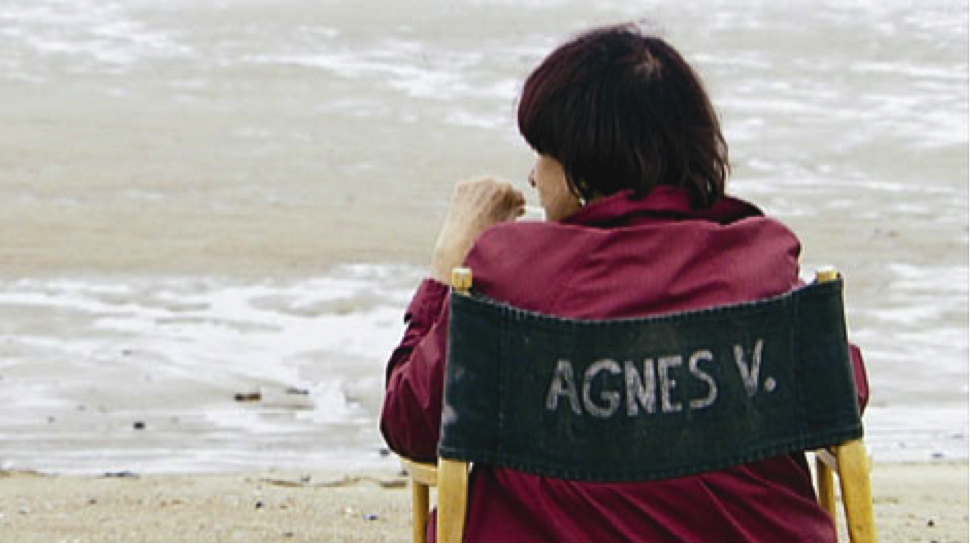
The Beaches of Agnes (2008)
London Dispatch #30 – May 2010
TURKISH ENglish
*
I
recently saw the Austrian made documentary, Muezzin
(Sebastian Brameshuber, 2008) at the Istanbul Film Festival. The film is about
the annual Turkey-wide competition for the best ezan chanter in the country, a
competition that I might never have known existed, if not for this engaging
documentary. It occurs to me that no matter how many of this type of
documentary I’ve seen, I don’t seem to tire of them.
The
‘competition film’, as I’ve come to call it, should be considered a subgenre of
the documentary, though till now I don't know that anyone has identified them
as such. If film genre can be defined in terms of structure and formula, then I
think we’ve got clear evidence that this is indeed a genre. In the romantic
comedy, for instance, we know that the intended couple will begin by hating
each other, come together near the middle, pull apart three quarters of the way
through the film, only to be ultimately united in the end. In an action film we
can expect a certain number of chase scenes, building up in intensity,
casualties, and hopefully exciting special effects, as we draw near to the
conclusion. In the 'competition documentary' there are always a certain number
of contestants whom we track from preparation through to competition, the
penultimate scene being the competition itself and then a final coda to
conclude, talking to the contestants, or at least the winner, after the event
is over. In Muezzin, actually there
are two competitions, the regional championship and the national championship.
In
this genre, it is crucial that the director choose the contestants carefully,
both in terms of the range of 'types' and in terms of the likely winner(s). So
in a film like Spellbound (Jeffrey
Blitz, 2002) it was important that the director show a mix of class backgrounds
and skill level so as to create a range of sympathies (who, for instance could
root for the over-privileged, heavily tutored, pampered white girl, when there
is a self-taught, motivated and talented African American girl who inspires our 'underdog' sympathies?). In Muezzin, we see five contestants from
Istanbul, only one of whom goes on to compete in the countrywide finals. Part
of the fun is trying to guess (in my case, completely erroneously), who might
end up the winner.
There
is also a built in event-driven structure which is somehow very reassuring
especially since documentaries can seem to be quite arbitrarily structured
otherwise. The viewer knows that in the end there will be a winner and several
losers and we hope that the director was prescient enough to anticipate who might
be the likely winners. In fact, this could be part of the thrill of this type
of documentary, since unlike a scripted fiction film, we know it's a gamble
with no preordained outcome. In another recent Turkish ‘competition
documentary’, Uç Saat (Can Candan, 2008), the director’s choices did not involve
any clear ‘winners’, but within the context of the grueling college entrance
examination, that said quite a lot about how few are meant to succeed in the
competitive educational system in Turkey.
At its best, the competition documentary can
reveal important social and cultural dimensions without appearing to have an
obvious ‘message’ or axe to grind. The director of Muezzin judiciously avoids both exoticizing and overemphasizing the
religious aspects of Turkish culture, while unearthing unexpected surprises,
such as the leading judge and Imam’s early training at music conservatory with
Bülent Ersoy. Such details go a long way to dispel myths of divided cultures
and alien worlds, even while keeping the audience’s attention focused on the
prize.
London Dispatch #29 – April 2010
TURKISH ENglish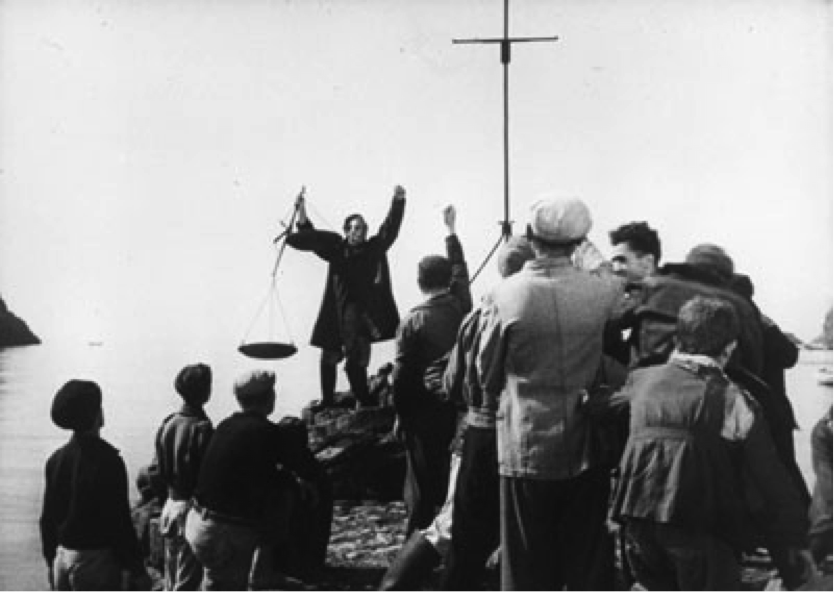
La Terra Trema (1948)
A
filmmaker who brought a proposal to me recently has raised an interesting and
difficult ethical dilemma. He intends to go to the jungle of Colombia to film
two brothers who are some of the last people to make handmade traditional
marimbas. These brothers, who live a very simple existence with no electricity
or running water, have a prized possession of a marimba made by their father, a
master marimba maker. This filmmaker has met with these brothers and filmed
them before, so they know each other fairly well. What he wants to do now is go
back to film them making their instruments and going about their daily lives,
but with a twist. He wants to introduce a fictional phone call, making an offer
on the prized marimba that could lift these brothers out of their poverty, if
only they were willing to sell it. The filmmaker sees this as introducing a
universal dilemma, played out by these real life brothers, much in the way
Visconti used real herring fishermen in La
Terra Trema (1948) to play out the drama of the exploitation of the
workers.
The
trouble is, these brothers in the Colombian rainforest have already indicated
to him that they would not sell the marimba at any price. It is a false
predicament for them, but one that this young filmmaker wants to impose upon
them for the sake of drama. My advice was to speak with these two brothers to
find out what indeed did constitute an ethical dilemma or a true temptation for
them, and to have them act that out for him instead. In other words, while I
have no problem with the introduction of the fictional element per se, I
recommended working with them rather
than having them work for him. It
seemed to me an imposition of the filmmaker’s will onto his actors, which may
not be that unusual in fiction film, but somehow goes against the grain of what
I perceive to be a central tenet in documentary ethics: cooperation with your
willing subjects.
There
is a back story to this. This same filmmaker had recently gone out to film a
story about a man who lived in a public park in London. He first tried to
befriend the man. In subsequent visits he recorded the man’s voice
surreptitiously. By the fourth visit, he told the man he was a filmmaker and
the man decided he wanted nothing to do with this stranger. Then he made a
fifth visit to the man in the park, this time with a hidden camera, and filmed
while the man threatened to call the police, all the while pressing this man as
to why he didn’t want to be filmed. It was a flagrant violation of the man’s
right to privacy and by sneaking the camera, he essentially ‘stole’ his image
(much the way the state does in the UK everyday). Now, granted, he was never
seen on camera, only heard, but the invasion felt downright abusive. When this
filmmaker shared this material with a group, people were aghast. It reminded me
of Vivian Sobchack’s claim that direct cinema techniques can be tantamount to
rape, invasive as they are.
So this same filmmaker comes up with a film that
has non-actors acting out a scenario that they themselves believe to be
irrelevant to their circumstances and he fails to understand that people are
not necessarily in this world to bend to his (creative) will, but rather to be
approached with sensitivity, taking into account their circumstances and
concerns. I was asked by this very filmmaker if I believe this would be an
ethical dilemma for a fiction film and at first I thought he may have hit a
limit case that distinguishes fiction from documentary. But now I believe that
very likely a good fiction film, working with non-actors in quasi-documentary
style, also needs to be in harmony with its subjects. I think of Abbas
Kiarostami’s Through the Olive Trees
or Michael Winterbottom’s In this World
and try to imagine them forcing a subject upon their characters. Imagine
Winterbottom saying to his young and vulnerable Afghani protagonist: ‘hey, I
know, why don’t you act out being seduced by a prostitute for the film, for the
sake of dramatizing universal temptations.’ I think we all know what would have
been said of the director then. Exploitation, anyone?

In This World (2002)
London Dispatch #28 – March 2010
TURKISH ENglish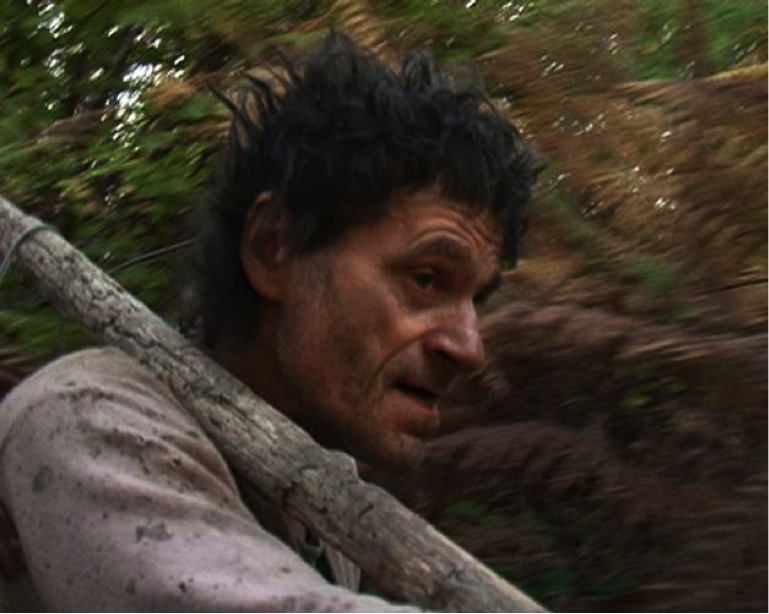
*
I write this dispatch from Pamplona,
Spain, right in the middle of my stint as a juror for the documentary film
festival called ‘Punto de Vista’ (Point of View).
To be a jury member on a film festival is a great honour that I feel I hardly
deserve, but it provides an excellent opportunity to ‘take the temperature’ of
the field. Of course the selections are somewhat determined (or at least
influenced) by region, so there is a high proportion of European and Spanish
documentaries in particular, but even so, it’s interesting to see the trends.
Out of over 700 films submitted, a selection committee chose 21 films (feature
length and shorts) to show in competition and there are three awards plus two
special mentions that we as a jury can bestow. By the time this dispatch has
gone to print, the prizes will all be awarded, but as I write this, I have only
viewed approximately half of the selected entries and it would be very
difficult to predict which ones will win.
What
I have noticed so far though, and I think it’s not too early to say so, is a
distinct return to the observational documentary form. I don’t know if this has
to do with the collective ‘proclivities’ of the selection committee for this
particular festival or whether there is indeed a return to this style of
filmmaking that for so many years had fallen out of fashion. As I have written
in these pages before, specifically in reference to my column about Iki Dil Bir Bavul (Orhan Eskiköy and
Özgür Doğan, 2008), observational filmmaking requires dedication and craft, and
is not for the faint-hearted. The shooting ratio tends to be high, the
recording of the material takes real care and skill, and the story can only
really be found (or crafted, rather) in the editing room. Television producers
have tended not to like the form because it isn’t economically efficient
(taking too long to shoot, with no guaranteed coherent film at the end of the
process), and theorists have tended to dislike it because of the
sleight-of-hand required that forces the people in front of the camera to
pretend they don’t see or interact with those behind the camera.
Two
of the observational films in this festival break with the ‘fly on the wall’
convention though. One, a French documentary called Le Plein Pays (Antoine Boutet, 2009) the protagonist, a reclusive
tunnel digger in the south of France, is so oddly asocial that he babbles
mostly incoherently to the camera, fully acknowledging the camera person’s
presence, while never entirely allowing us to be certain he knows what a camera
is. And another, a film shot in Surinam by an American filmmaker called Let Each One Go Where He May (Ben
Russell, 2009), is so tightly choreographed that although there is almost no
dialogue and never a rupture of the ‘fourth wall’, the shots are so elaborate
that there is absolutely no way that shots weren’t selected, if not directed, with
the camera in mind.
Both
films break with earlier conventions of observational cinema
(non-interventionist, invisible, fly on the wall filmmaking) in very obvious
ways. However, I’m not absolutely convinced that this apparent return to
observational filmmaking is such a good thing, if it is indeed a trend. After
all, both films most certainly partake of the voyeuristic tradition of the
observational ‘mode’, the first one attracted because of the oddity of the
character, the second with a more ethnographic gaze, neither of which are signs
of documentary’s most salutary tendencies.
London Dispatch #27 – February 2010
TURKISH ENglish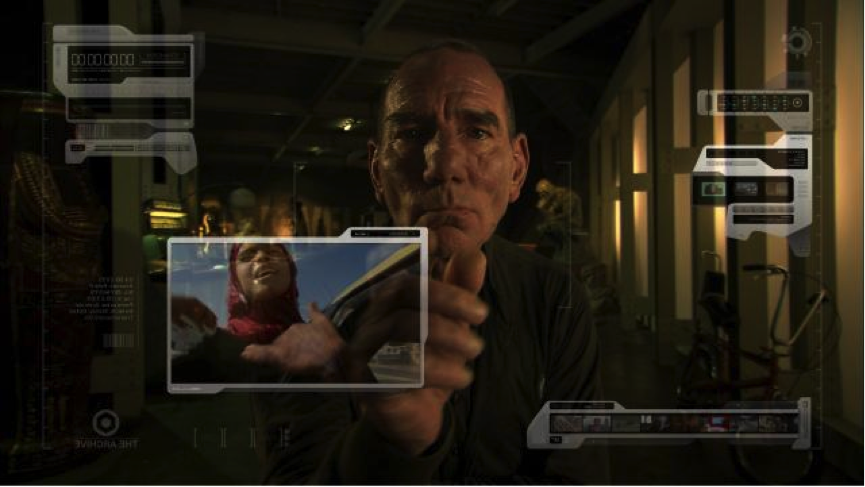
*
Not long ago
the BBC aired a powerful and controversial documentary about global warming
called The Age of Stupid (Franny
Armstrong, 2009). They also scheduled a slot for the next evening, at the same
time, to debate the issues raised by the film. I thought this seemed an
excellent idea and one I had rarely seen before. We documentary filmmakers feel
lucky if our documentaries are broadcast at all, but a second primetime slot to
discuss the film at length is a privilege reserved for precious few films, no
matter how important or provocative.
The film was
quite impressive, if at times a bit emotionally overwrought, visualizing as it
does the apocalypse that might ensue if the world proceeds to emit CO2 at the
present rate. The premise of the film is that a sole survivor (played
compellingly by actor Pete Postlethwaite), living all alone in a vast Arctic
archive in the year 2055, has access to comprehensive computer database of the
past, showing us examples of our current folly, when we ignored all the signs
and refused to alter our behavior in order to save the planet.
This is the
framing device that allows the film to randomly access a range of real life
stories that illustrate the point. Filmmaker Armstrong follows seven
individuals, some working indefatiguably albeit unsuccessfully to halt climate
change, like the British engineer and environmental activist who attempts to
get planning permission to build a small windfarm, but faces shortsighted local
opposition as residents fear declining property prices if the windmills are
allowed to litter the landscape and ruin the view. We also meet an Indian
entrepeneur attempting to set up a low-cost airline in India, which from his
vantage point would give Indians the same advantages that Europeans and North
Americans enjoy, while from a climate change perspective, the prospects of
millions more air travelers is clearly cataclysmic.
The
Age of Stupid is
a cautionary tale, attempting to awaken us out of our current climate stupor,
the one where we spend our time debating whether it is or isn’t happening, even
as natural (and unnatural) disasters wreak havoc around us and we mindlessly
accept 22 degree weather in December as ‘strangely pleasant’. So when the BBC
discussion failed to include even one participant who supported the film’s main
thesis and instead included a member of the British government who grugingly
accepted that climate change might be a problem, joined by two climate change
deniers who claimed it flatly was not, I quickly realized that the BBC intended
to discredit the film rather than engage in an informative session. Their
reasoning was classic BBC: if a filim takes one position, we must show the
‘other side’ so as not to seem biased. It was a clear example of how the
attempt to remain ‘balanced’ is absolutely half-cocked. They wasted the
precious half hour literally arguing over whether there was any scientific
evidence to back the views of the film, rather than taking the opportunity to
educate and inform the vast television audience as to what steps they might
take to reduce their carbon footprint and lobby their governments to do more.
It seems that the BBC wanted to demonstrate beyond a shadow of a doubt how
incredibly stupid this age has indeed proven to be.
London Dispatch #26 – January 2010
TURKISH ENglish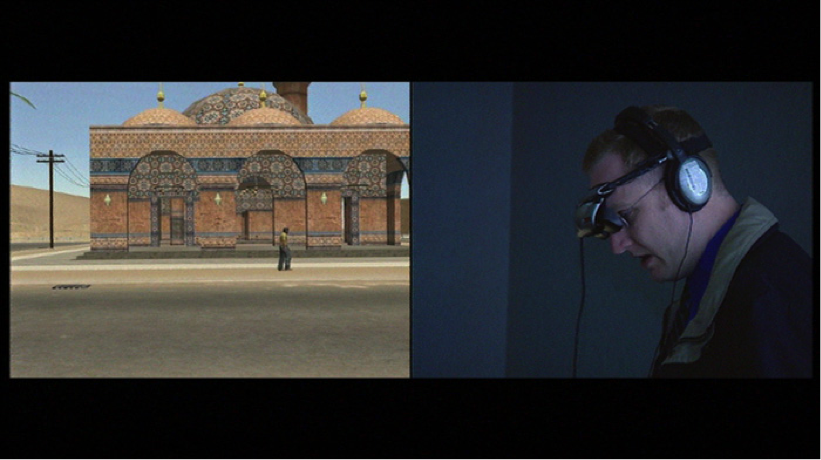
Immersion (2009) [Note: no German title for this one]
The last two months could have been dubbed ‘Harun
Farocki Season’ in London. Not only were 22 of his films screened at the Tate
Modern, but there was a retrospective of his video installation work held
simultaneously, and for the first time in this city, at a remarkable non-profit
gallery recently opened by an heir to the Sainsbury’s supermarket fortune,
called Raven Row.
For those unfamiliar with Farocki’s work,
he’s a German filmmaker who began his career in the 1960s, making radical,
anti-narrative, ‘engaged’ films created with the aim of disrupting complacency
and disturbing the status quo. He was kicked out of film school in 1968 for his
political activism, along with Holger Meins (a member of the Red Army Fraction,
who died in prison the following year). Farocki has always been something of a
rebel, famously excoriating his fellow New German Cinema compatriots, such as
Werner Herzog and Wim Wenders, for capitulating to bourgeois narrative
techniques. His methods may have mellowed since he burned his own flesh with a
cigarette in his 1969 anti-war film, Nicht löschbares Feuer (Indistinguishable Fire),
but his message continues to be jarringly acute and painfully astute about the
operations of power in Western society.
In Farocki’s films the sinister side of capitalism and
consumerism quietly emerges. In Die Schöpfer
der Einkaufswelten (The Creators of Shopping Worlds, 2001), Farocki observes shopping mall
planners as they chart and then choreograph our consumption patterns. Ein Tag im Leben der Endverbraucher (A Day in the Life of the Consumer, 1993) is a compilation film comprised of 40
years of advertisements to present 24 hours in the life of a consumer, and it
isn’t pretty.
I know of no filmmaker that comes close to
Farocki’s ability to reveal the intimate, at times symbiotic, relationship
between the cinematic ‘eye’ and the watchful eye of the state. With Farocki’s
films, one is always impressed by the correspondence between the camera and
aggression, the image and control, whether seen in the surveillance footage of
prison yard shootings by guards (I
Thought I was Seeing Convicts, 2000), or in the footage taken from a
‘suicide’ camera mounted on a missile in Eye/Machine
III (2003).
Farocki tends to be less concerned with the
excesses of cinema per se, than with the excesses of those in power, who harness
the camera as a weapon of aggression against civilians. He points our attention
to the ways in which we are all caught in the crosshairs of surveillance, and
that imaging itself, with the full range of techniques that his videos document
(precision guided missiles, simulated warfare, electronic panopticons on roads
and in prisons, shopping mall surveillance, etc.) now sets the conditions of
daily life both during war and peace time.
Harun
Farocki is easily one of the most interesting and certainly one of the most
prolific filmmakers working today. His dialectical montage can be quite
challenging and it’s no great surprise that he hasn’t found commercial success
with his work, but in the last decade when his work has found its way into art
galleries and museums, it is finally getting the attention it deserves. I
believe he’s overdue for a retrospective in Istanbul.
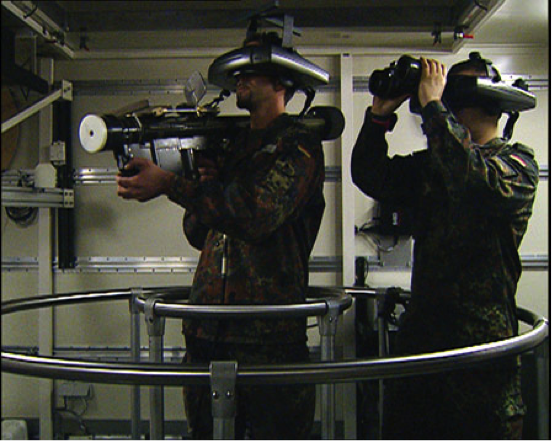
Auge / Maschine (Eye/Machine, 2000)

Nicht löschbares Feuer (Inextinguishable Fire, 1969)
London Dispatch #25 – December 2009
TURKISH ENglish
Fake documentaries are a very rare phenomenon within
Turkish cinema. The tradition of documentary filmmaking in Turkey is, for the
most part, a somber affair, with a few new filmmakers coming onto the scene to
shake things up with a fresh approach and a lighter hand. But it is the artists
and those either working within the art world or trained in fine arts who seem
to be really pushing the boundaries of documentary, where they merge almost
seamlessly with fiction. I encountered two examples just in the last week.
World renown artist, Kutluğ Ataman recently screened
his film Journey to the Moon (2009) at the London Film Festival.
The film ‘investigates’ a made up event as if it were historical fact, of
villagers from deep within Anatolia who planned a mission to the moon sometime
in the 1950s, using the village mosque's minaret as their spaceship. Complete
with 'documentary evidence' in the form of black and white still photographs of
the events, and interviews with internationally renowned experts commenting on
the story as if it were real, the film apparently caught Turkish audiences
off-guard at the Istanbul Film Festival, unaccustomed as they were to seeing
their own stories 'faked'. Although Ataman did not intend to fool anyone, the
best mockumentaries draw so deeply on accepted or projected cultural norms and
truisms, that it is no surprise that at times they succeed in 'passing' for
documentaries of events. And they tend to borrow bery heavily from documentary
conventions, which in turn authorize their content, albeit false.
The same may well be said of Merve Kayan's new film, Bu
Sahilde (On this Coast,
2009), co-directed with Zeynep Dadak, and recently accepted to be screened in
the Rotterdam Film Festival. Made in partial fulfillment of Kayan’s MFA
degree at University of California, San Diego, and steeped in the traditions of
experimental documentary, the film appears, on the surface, to document an
average summer colony of the petit bourgeoisie of Western Turkey. The faces,
the clothing, the setting, the entire mise-en-scene inclines one to believe the
film is a straight forward documentary. The public announcements from the
township, warning of illegal parking of boats or informing of the ‘Wonder
Trampoline’, available now in three new locations, are just this side of absurd
that they could easily be true.
And
that is the key to any good mockumentary. They have to acknowledge and embrace
the little absurdities of every day life and just exaggerate them enough that
the question of veracity impinges on the experience, but not enough to throw
off the facade. Life as we know it is full of moments that erupt as surreal and
impossible, yet we know them to be true. So when a talented filmmaker adds her
own layers of keen observation mixed with fantasy, they only serve to enhance
our perception of what is possible, without rupturing the illusion of the real.
Kayan and Dadak shot the film on 16mm without syncronized sound, so every sound
effect, every voice, each crowd scene, has an audio track (or many) laid upon
it that may well appear to be in sync, but has in fact been constructed for
effect. It takes an attentive viewer to understand the level of constructedness
involved here, but in truth, despite the 'artifice' of both sound and image
(many of the scenes were 'directed' and 'acted’), a film like Bu Sahilde serves
to point toward a profoundly relevant and true reality, both of life as it is
lived (which is itself a kind of surreal performance at times), and of the
fictions that inform our every day life. It takes an artist to reveal this
truth to us—it is the truth about fiction and the fiction of documentary that
we see.
London Dispatch #24 – November 2009
TURKISH ENglish
What
has the world come to when documentary comes to mimic mockumentary, not once but twice? Possibly
the most famous and certainly the most beloved mockumentary of all time has to
be Rob Reiner’s This is Spinal Tap!
(1984) about a fictional heavy metal band’s spectacular fall from the height of
their spandex success. This is Spinal
Tap! was so true to life and so close to the bone of American heavy metal
culture’s excesses and absurdities, that many people mistook it for an actual
documentary and assumed that Spinal Tap was a real band. So much so, that the
actors playing the band members (Christopher Guest and Harry Shearer among
them) decided to take this ‘band’ on tour, eventually even releasing albums
under that name. As if this was not ridiculous enough, many heavy metal stars,
such as Eddy Van Halen, and Aerosmith’s Steven Tyler, said they failed to see
the humor in the film, as it was so true to their experiences.
I
had always found it impossible to believe that anyone could be fooled by Spinal
Tap’s conceits. It really is hilariously over the top, so clearly making fun of
not only the music but the culture that surrounds it. Who could really believe
in an album (and tour) titled Sniff the
Glove, or a story about a drummer spontaneously combusting on stage? This
only shows how little I know of the heavy metal world, or maybe the world in
general. In fact, two contemporary documentaries have proven without a shadow
of a doubt, that This is Spinal Tap!
is actually social realist drama of the
most literal and unembellished kind. If Joe Berlinger and Bruce
Sinofsky’s 2004 documentary Metallica:
Some Kind of Monster, with lead singer James Hetfield’s infantile, alcohol
driven tantrums and the filmed group therapy sessions with the painfully
earnest psychologist did not prove this, then surely Anvil!: the Story of Anvil (Sacha Gervaisi, 2008) will not fail to
convince.
Opening
with a string of well known metal heads (Metallica’s Lars Ulrich, Slash from
Guns and Roses, Lemmy Kilmister from Motorhead) touting the greatness of the
now forgotten band that seems to have disappeared while its peers and rivals
went on to great fame, the film already appears to be a set up, like Woody
Allen’s fake documentary, Zelig
(1983), which employs the likes of
Susan Sontag and Saul Bellow to attest to the fictional lead character’s
historical fame and notoriety. Cut to a shot of ‘Lips’ Kudlow, the lead singer
of this ‘legendary’ band, driving a suburban car and describing the menu of the
school lunches he delivers to disabled youngsters. In the next scene he’s
actually wearing a hair net while packing the food. The aging band members
haven’t seen success since 1984 (the year Spinal
Tap! came out) and of course the film documents an Eastern European tour
that goes spectacularly wrong. Just like Spinal
Tap! Anvil ends with the band playing for thousands of screaming teens in
Japan, and again, just like Spinal Tap!
Anvil finally gets some gigs, due to the success of the film. When life
imitates art imitating life to this extent, one really has to wonder about this
eternally refracting mirrored existence we live. Is it really a coincidence
that Anvil’s long time drummer’s name is Robb Reiner? Is this someone’s idea of
a joke?
London Dispatch #23 – October 2009
TURKISH ENglish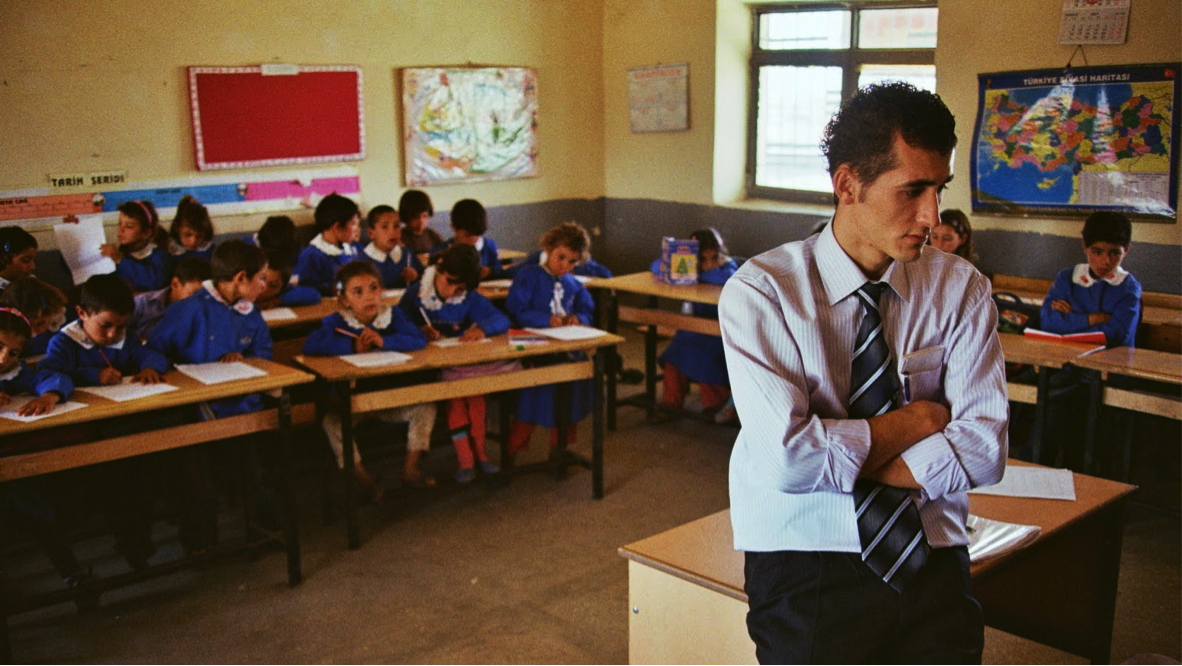
It’s
not every day that we get to see a contemporary observational documentary: that
is, a documentary with no interviews, no voice over narration, no archival
footage, just the steady impression that the viewer is seeing events unfold
before their eyes, unimpeded by the film crew and simply there to be seen. I
can think of only three prominent examples in the last 6 years: Our Daily Bread (Nikolaus Geyrhalter,
2005); Checkpoint (Yoav Shamir, 2003; and the excellent new Turkish documentary,
İki Dil, Bir Bavul.
Observational
filmmaking is a technique that requires incredible patience, extraordinary
skill, and endless amounts of film stock. When filmmakers were still mostly
shooting on celluloid, observational filming could get incredibly expensive
with shooting ratios of 100 hours of raw footage (or more) reducing down (after
months of arduous editing, sometimes with two or three editors working
simultaneously) to a 1 hour edited program. One can imagine that budget-minded
tv producers rarely approved of that type of expense, let alone the risk that
in all of those hours of material, there was no coherent story to be
found. Some of the most successful
practitioners of the style were self-financed. The Maysles brothers, for
instance, used to make television commercials for money, and make observational
films like Salesman (1968) and Grey Gardens (1975), for love.
The
‘fly on the wall’ technique, as it came to be known in North America and
England, had its heyday in the 1960s, when light weight, portable filming
equipment became available (along with faster film stock and sync sound
recording devices), making such free-form, fluid filmmaking techniques
possible. The camera was always handheld, crews were reduced to their essential
core (1 camera person, 1 sound person), and only available light was used. Don
Pennebaker, one of the best known practitioners of the approach, was known to
brag that he would never ask anyone to move an inch, even if it meant that he
could get a better shot. To ask a question of someone in front of the camera
was unthinkable.
As time went on, observational film lost favour
and its unsustainable pretense to non-intervention and objectivity was roundly
denounced by critics and theorists alike. There was a naïve quality to the
rhetoric surrounding the approach, that refused to admit that the presence of
the camera itself alters any given situation, not to mention the eventual
shaping of the material by the editor. Still, after all these years, and fewer
and fewer strictly observational films being made, it’s actually quite
refreshing to encounter one. One no longer has to believe that observational
film is more objective or ‘truer’ than any other style of filmmaking. Of course
it isn’t. We can now simply enjoy the virtuosity of filmmaking that it requires
and realize that the craft of telling a story visually, of knowing how to
capture the heart of a situation as it unfolds, has not been lost. With a
subject that requires delicacy and finesse such as that covered in İki Dil, Bir Bavul, the observational
approach was an excellent creative choice.
London Dispatch #22 – September 2009
TURKISH ENglish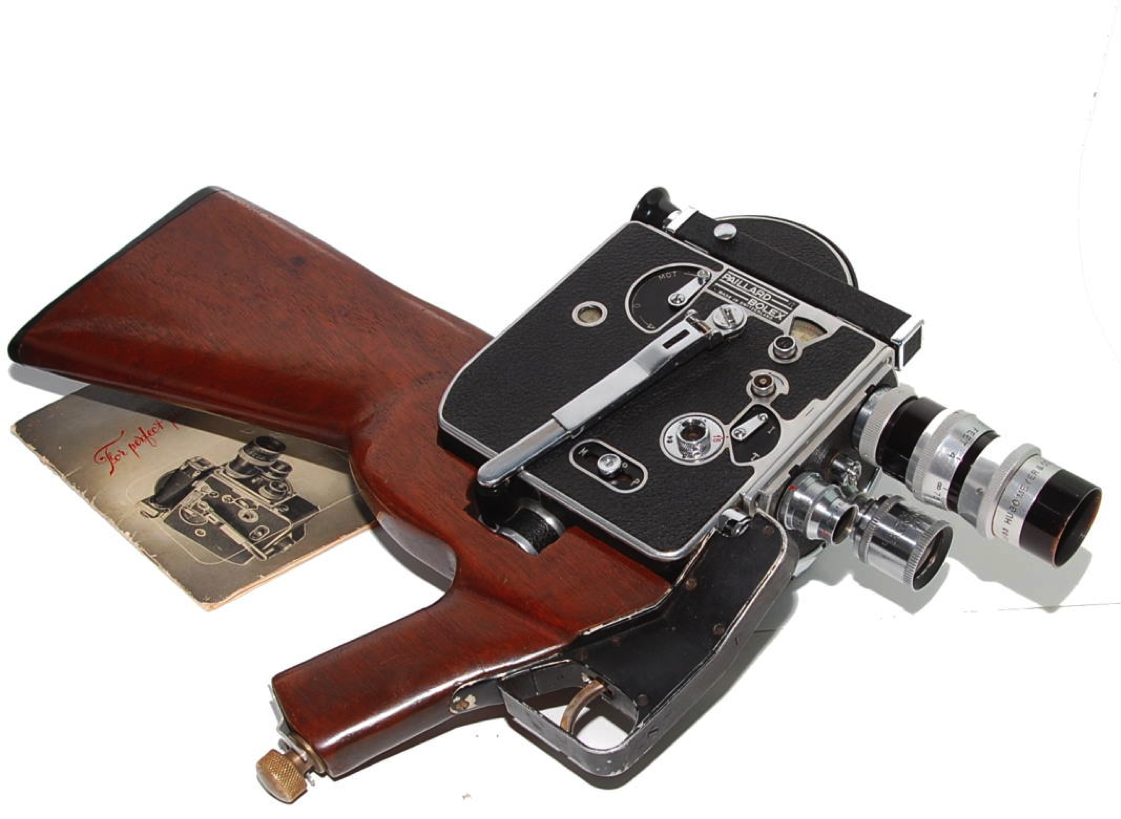
I
write this dispatch not from London but from Los Angeles. I’m on the University
of California Campus, the site of the 16th annual Visible Evidence
Conference. Visible Evidence is a documentary studies conference that has been
held all over the North America and Europe, venturing one year to Brazil and
another to Australia. Next year docIstanbul will be hosting Visible Evidence at
Bogazici in Istanbul. I have been participating in this conference since its
inception in 1993, at Duke University, and although I have not gone every year,
for me it is consistently the most stimulating event about documentary film
that I have had the privilege to be a part of.
Many
people have been coming up to me asking if the rumor of bringing the conference
to Istanbul are true and I am proud to be able to tell them, yes, it is.
Everyone is very excited to come. It is, of course, an academic event, so those
readers of my column who have an allergic reaction to ‘theoryspeak’ may not be
very interested, but my hope in giving an account of the types of presentations
that are given at this dynamic event is that maybe it will spark an interest in
someone to propose a presentation or a panel for next year’s event. My not so
hidden agenda, after all, is to be part of the development of a lively
documentary studies culture in Turkey—something that is already in the air and
that I’m hoping the conference next year will help to solidify further.
I’m
writing this only after the first day of the conference so I can make my
deadline, but we’ve already heard presentations about documentary video games
(imagine trying to solve a real life crime based on conflicting evidence
given), interactive documentaries (online sites where rather than having to
watch a linear story, you can pick and choose what aspects of the subject you
are interested in and construct your own experience of the story), pathos and
music in documentary (we rarely think of documentary genres, let alone
documentary’s emotional manipulations), and my favorite presentation so far
(call me morbid) ‘the Autoptic encounter’, which discussed the UK television
series Anatomy for Beginners and the
uncanny experience of looking at cadavers. In that talk, by a recent PhD named
Allison de Fren, I learned that the word ‘autopsy’ in English etymology refers
to the act of seeing with one’s own eyes (the title of experimental filmmaker
Stan Brakhage’s film about autopsies, in fact), but also ‘seeing oneself’,
which means that in effect, looking at a cadaver is a way of seeing ourselves
from the inside, so to speak, hence the vertiginous effect. The opportunity to
imagine the strange aptness of the term is just one of the many pleasures of
being here.
I
myself will be presenting a paper in a few days about the intimate relationship
between the camera and the gun in recent documentary and activist films.
Although this is a topic I have only just begun to research, it is incredibly
rich in implication and the history of the interpenetration between the camera
and the gun goes back to the very beginning of the motion picture, with
Etiene-Jules Marey’s ‘Fusil Photografique’, invented in 1882.
I
won’t burden this column with the details of my talk, but just to say that the
term ‘shooting with intent’ sometimes really does imply ‘intent to kill’. [alternative
line: …but just to say, that if the camera viewfinder is in line with the
gunsight, capturing an image becomes a lethal affair.] The power of the
documentary image and its socio-political implications become very clear to me
at this conference. It’s always a treat to share these ideas with and to hear
new ideas from people who are just as passionate about the form.
For more information about Visible Evidence and
to keep posted about the conference next year.
London Dispatch #21 – July 2009
TURKISH ENglish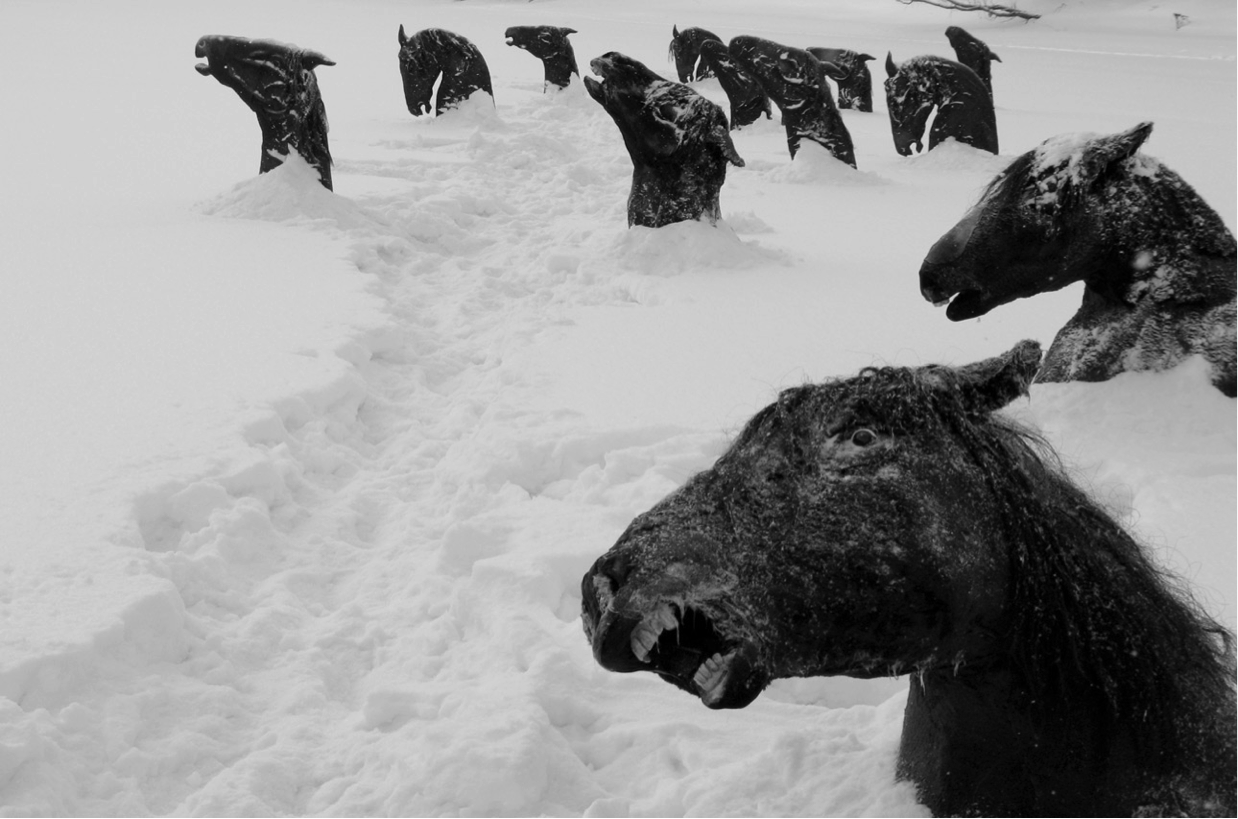
I once approached Adam
Curtis, famous in the UK for his BBC series The
Power of Nightmares (2004) to teach a voice-over session to my MA students.
He is renown for his voice over yet he seemed genuinely surprised at my
suggestion that he wrote excellent ‘commentary’ as they call it here, and told
me that for him it is by far the hardest (and by his estimation least
successful) part of filmmaking. Indeed, most filmmakers who have had to write
voice-over would agree.
Voice over fell out of
favour in documentary circles with the rise of observational filmmaking and
‘Direct Cinema’ in the 1960s and in the US at least, continued to be
unfashionable in documentary film circles for decades thereafter. I remember
one of the first Turkish documentaries I ever saw, about 7 years ago, I think it
was about Bergama, and I was quite shocked to hear the type of voice over still
in use. I’m sure you know what I mean: the bombastic TRT voice of god,
poetically but declaratively asserting the great history of the place. I
thought then, if this is what Turkish audiences see of documentary, no wonder
it’s so unpopular.
But it’s not the ‘voice
of god’ voice over that I’m concerned about really, as I think anyone with some
sense knows that should go the way of the dodo bird.
In particular, I am
stuck on the idea about voice over in essay films, a recently identified
subgenre, if you will, of documentary.
Voice-over for an essay
film can be quite personal and very idiosyncratic. One of the masters is Werner
Herzog, whom I wrote about in last month’s column. Another is Chris Marker,
whose underrated Case of the Grinning Cat
(2004) is a delight not to be missed. Both Herzog and Marker manage to convey a
sense of wonder while not coming across as too naïve or at all disingenuous.
They also both try to balance the personal with the universal, all the while
keeping a sense of humour. This is a great skill and something that is
decidedly missing in Terrence Davies’ last film, Of Time and the City (2008).
Hailed by critics as a
work of ‘pure genius’ and ‘filmic poetry’, I found Davies’ latest film
flat-footed and imbued with a sense of self-importance that only served to
undermine its effect. The voice-over seemed almost wholly disconnected from the
footage on screen, as if crafted in separate studios. A more successful and
considerably less ponderous voice over is delivered in My Winnipeg (2007), another contemporary “Cine-poem’ about the
filmmaker’s hometown, but here Madden’s voice over tries too hard to sound like
a hard-boiled detective in a film noir and comes across as a bit forced.
Essay films do tend to
invite a pedantic tone, like the one Jean Luc Godard strikes in his
supercilious Histoire(s) du Cinema (1988). But there is an occasional reprieve from
the heavy weight of the great cineaste’s (usually male) voice, such as Agnes
Varda manages in her two last first person essay films, The Gleaners and I (2001) and The
Beaches of Agnes (2008). Here you can find the levity of someone who has
the confidence of vision to not take herself too seriously. Perhaps that’s the key to
good voice-over in an essay film: confident humour with a splash of
self-effacement. We should keep it
in mind.
London Dispatch #20 – June 2009
TURKISH ENglish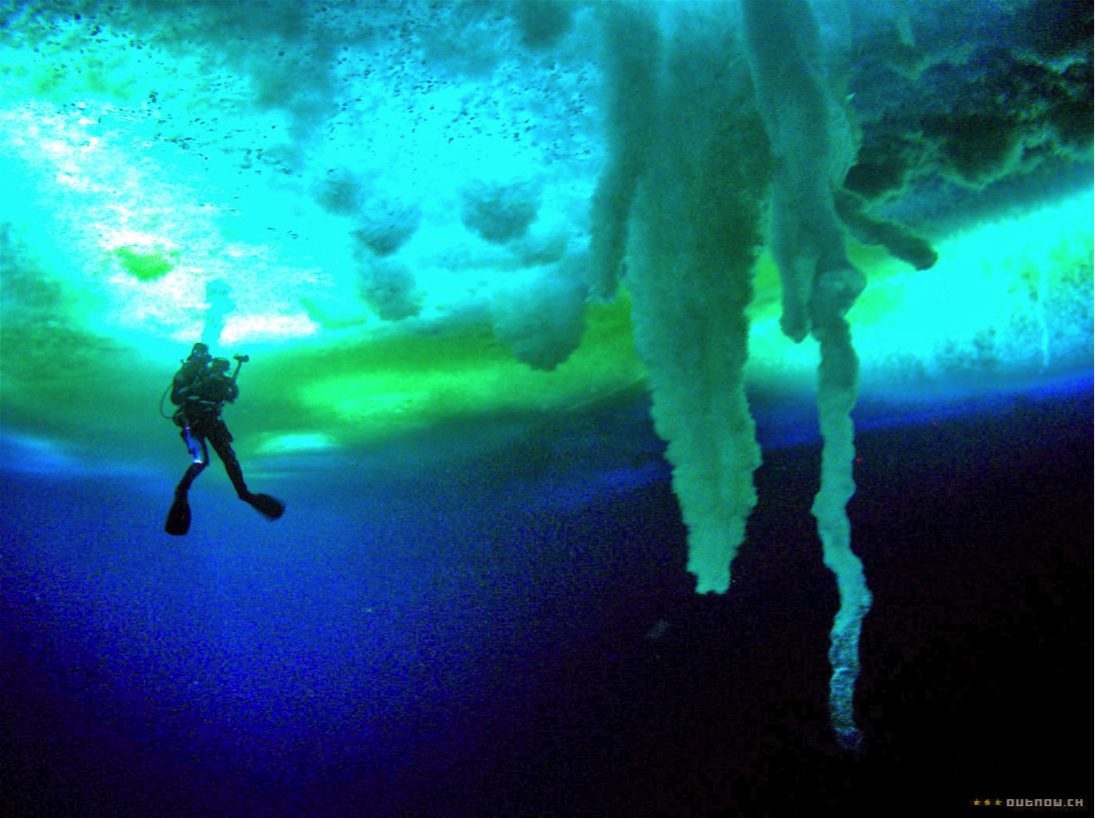
Werner Herzog is easily
one of the best and most imaginative documentary filmmakers working today. He
has a way of making the earthly seem sacred, and the profane profound. Remember
his Lessons of Darkness (1992), where
Saddam Hussein’s burning oil fields made an apocalyptic vision when coupled
with the soaring strains of Wagner and the sparse prose of Herzog’s narration.
He has made countless poignant documentaries that give us visions of our fellow
humans as simultaneously inspired and insane. In Herdsmen of the Sun (1989) he showed us Wodaabe tribesmen who
participate in elaborate beauty pageants competing for the attentions of the
women, in a welcome if surreal gender reversal. In How Much Wood Would a Woodchuck Chuck (1976) he chronicles the
incomprehensible, tongue-twisting argot of American cattle auctioneers. It is not uncommon to leave the cinema after
one of his documentaries, feeling disoriented, unable to fully assimilate the
material presented.
Herzog works in many
registers: operatic, mystical, elegiac, comedic, but more recently the one most
prevalent in his documentaries has been my least favourite. I call it the “Boy
Scout strain”.
I don’t know if Turkey
has something equivalent to the Boy Scouts, but in the US, where I was raised,
the Boy Scouts were very popular. In it, boys learned how to how to start a
fire with flint, how to pitch a tent, how to tie a diamond-hitch knot, all the
while wearing uniforms vaguely reminiscent of Hitler Youth. Admittedly, as a
tomboy, I was envious of my male friends who seemed to really enjoy their time
in the Scouts. But as an adult, it all seems eerily militaristic: training
young boys to be good soldiers and macho men.
So you’ll forgive me if,
despite his undeniable skill, I was hesitant to see Herzog’s latest
documentary, Encounters at the End of the
World, thinking it would be about yet another male adventurer or
survivalist, with idiosyncratic ideas about the world, living on the edge of
civilization. Think of his last few documentaries: Grizzly Man (2005), starring the man who lived with, and was
eventually eaten by, Grizzly bears; White
Diamond (2004), about an airship engineer who wants to explore the
rainforest in his helium filled flying machine. These are all good and engaging
subjects, but a bit too muscular for my taste.
Encounters does indeed have many of the elements of his Boy Scout strain,
filled with survivalists and dreamers, all in the midst of a (losing) battle
with nature. Yet, at the same time, it transcends these concerns and enters the
realm of the abject operatic, with visuals of tentacled deep-sea creatures
under the blue-grey ice-ceiling, and sinister red volcanic lakes burbling
before sending geysers of molten lava meters high. Its ‘reassuring’ message is
that mankind won’t survive to destroy the earth, but will go the way of the
dinosaurs, possibly in our lifetime. Pessimistic, you say? Not for Herzog, who
compares the hideous manmade outposts in the South Pole with the exquisite
beauty of the surrounding nature and makes us firmly believe that the earth
would do better without us. This surely goes well beyond the Boy Scout terrain,
and into the realm of the prophetic.
London Dispatch #19 – May 2009
TURKISH ENglish
My Neighbour, My Killer (Anne Aghion, 2009)
The mad
documentary festival season has come and gone here in London, I again had to
choose between the London International Documentary Festival, the Human Rights
Watch Film Festival, and the London Lesbian and Gay Film Festival. Last year I
favoured the LIDF, so this year I decided to immerse myself in the HRWFF. The
LLGFF is always my antidote, the place I go when the images of war and genocide
are finally too much. And indeed, I did overdose on genocide this year. I don’t
mean to be glib, and of course, had I actually to live through one of the many
torturous scenarios I only witnessed in the comfort of a nice cushioned cinema
seat, I would have been considerably more traumatised indeed. But I made the
mistake of going to 5 Human Rights Watch films in a row and by the end of it,
nothing but a rolicking evening at the LLGFF with a documentary about my once-favorite
women’s band, The Raincoats (The
Raincoats: Fairytales, work-in-progress, by Gina Birch), and a surprise
concert thrown in for the price of admission (along with a few stiff drinks)
could help to mend my shaken soul.
Three of the
films at the HRWFF were really extraordinary though. The first, Pray the Devil Back to Hell (Gini
Retiker and Abigail Disney, 2008) was about the Liberian women’s peace movement
and their central role in ending the civil war in that country. It is rare
enough to learn of the details of the Liberian conflict, which the world press
largely neglected, but to discover the absolutely inspired women who organized
the peace protests that led ultimately to the fall of Charles Taylor’s
dictatorship and the end of the senseless violence plaguing that country, was
truly enlightening.
The second
and perhaps even more exciting film that took the top prize at IDFA in
Amsterdam 2008 and Sundance 2009, was Burma
VJ (Anders Østergaard, 2008). Despite the fact that the title sounds as if
it is about club life in Rangoon, the film is comprised of footage gathered by
Burmese underground, amateur, video journalists, who shot illicit footage of
the Buddhist monk-led uprisings of 2007, protests that posed a fearsome challenge
to that country’s military regime. The risk these individual activists take is
enormous, risking literally life and limb to get images out of that closed
country and on to the television screens of the world. One loses all cynicism
in the face of such bravery, yet despite their best efforts, journalism could
not in the end save the day, and the military junta that ruthlessly rules that
country managed to crush the uprising.
The third
film, and the one that finally took me over the edge, was a film about the
Rwandan genocide, My Neighbour, My Killer
(Anne Aghion, 2009). This film was perhaps the least slick of them all, but the
hardest hitting. We witness Tutsi survivors watch and comment as their
children’s, husbands’, lovers’, mothers’ killers come home to be “reintegrated”
into the community. There is a Rwandan truth and reconciliation system called
Gacaca (ga-CHA-cha), consisting of open-air hearings where victims and
perpetrators air their grievances, and the resulting film which unflinchingly
captures the heightened emotions is absolutely devastating. To be honest, I
still haven’t quite recovered.
Keywords: London
International Documentary Festival, Human Rights Watch Film Festival, London Lesbian
and Gay Film Festival, My Neighbour, My
Killer, Anne Aghion, Pray the Devil
Back to Hell, Gini Retiker and Abigail Disney, Burma VJ, Anders Østergaard
London Dispatch #18 – April 2009
TURKISH ENglish
In a famous
interview given to Francoise Truffaut in the 1950s, Alfred Hitchcock endeavored
to explain the difference between letting the spectator know more than the
individual characters in a scene, or confining the spectator’s knowledge of a
scene to a character’s point of view. He described a scene in a café where a
bomb is ticking under a table where two people are having a mundane
conversation. The characters don’t know the bomb is there. If the spectator
remains ignorant of the bomb, in line with the characters, then they may be
bored during the conversation and then experience a moment of surprise, when
the bomb goes off. But if the spectator knows the bomb is there, suspense is
created and you’ve got the viewer at the edge of their seat through the whole
scene. Hitchcock uses this story to spuriously claim that it’s always best for
the public to know everything, as if he cared deeply about the public’s right
to know. In fact, all he really cared about was to make an entertaining,
suspense filled, movie.
It has been
asserted, by documentary film scholar Brian Winston, that documentary is indeed
premised upon such ideals (and legal claims) and that the “public’s right to
know” underpins the rationale of most documentary filmmaking. It is arguably
the ethical ground upon which a documentarist stands—sometimes even failing to
make entertaining and suspense filled movies as a result. But I believe their
success or failure to make good documentaries does not and never did ultimately
rest on such civic-minded good will. In fact, if anything, you could say that
prurient interest and sensationalism have always provided equally strong
motivations behind documentary filmmaking.
The ruse of
the legal or ethical principle –- that documentary is high minded and public
spirited—has been a documentary bogeyman since its inception. A documentary is
no more a public service than is a work of art, though both may indeed
ultimately “serve” society in some way. And just as documentary is not a public
service, a documentarist is not a public servant.
I’ve
always maintained that a documentarist is under no particular ethical contract,
no set standard of behavior or rules of engagement that must be followed by
all. Documentary making is not like medicine where one has to take the
hippocratic oath, or even like journalism (such as it is) where one is
allegedly bound by a duty to neutrality and objectivity. It is an art like any
other, to be pursued in line with the moral and ethical code of the individual
filmmaker in question. That means one can only hope the filmmaker has a deeply
engrained sense of right and wrong, but it does not assure that a film is
either ethically consistent or true. Nothing can guarantee that.
Keywords:
Documentary Ethics, Truth in Documentary, Alfred Hitchcock, Francoise Truffaut,
Brian Winston
London Dispatch #17 – March 2009
TURKISH ENglishI recently went to the cinema to see Milk
(Gus Van Sant, 2008) and came out with the strange feeling of having a
multi-layered de ja vu. Had I seen
this film before? Had I seen a film just like it? Indeed, many years before, I
had seen the documentary about the lead character, Harvey Milk, the first gay
elected official in the United States, who was assassinated in 1978 by a fellow
San Francisco politician. The Times of
Harvey Milk (Robert Friedman, 1984), made 6 years after Milk’s
assassination, included many elements that were to re-appear in fictionalized
form in the recent Sean Penn vehicle, hence the first layer of my deja vu.
The second dimension of this sense of repetition came in the realization
that several other recent biopics have clearly used documentaries as prototypes
or blueprints for their narrative. The original documentaries upon which the
fictional depictions depend so heavily were never made with the feature film in
mind. But without the documentaries, the features would have been at a great
disadvantage. Todd Haynes could never have made I’m Not There had D. A. Pennebaker not made Don’t Look Back (1967). The celebrated Kate Blanchet scenes owe
everything to Dylan’s performance in the phenomenal documentary of his 1966 UK
tour.
If you watch Barbet Schroeder’s Idi
Amin Dada you will see exactly where Forest Whitaker learned to mime the
gestures and phrasing of the somewhat unhinged Ugandan leader in The Last King of Scotland (Kevin
Macdonald, 2006). And although there was no moving footage of Brandon Teena in
Susan Muska and Greta Olafsdottir’s The
Brandon Teena Story, clearly Kimberly Pierce used that documentary as a
study for the portrayal of the brave, if wayward transsexual who was brutally
raped and murdered by his “friends” for not being what they believed him to be,
in her 199 feature film, Boys Don’t Cry.
To add another layer to my de ja vu, I
then remembered that film schools used to teach documentary film production the
way art school taught drawing: as the prelude to the full color, large scale,
work. Documentary was to filmmaking what drawing was to painting, the sketch,
the draft, the practice, the underlayer. Perhaps they still teach it that way.
I’m not sure. Maybe I’m biased, but I tend to prefer the documentaries to the
feature films, even if the feature films attract bigger audiences. And I
certainly don’t believe that a documentary is inferior to it’s bigger budget,
more extravagant fictional kin.
The Times of Harvey Milk won the Academy
Award for best documentary in 1985. It seems Milk is destined to follow in its footsteps.
Keywords:
Documentary and Fiction, The Times of
Harvey Milk, Robert Friedman, Milk,
Gus Van Sant, Barbet Schroeder, Idi Amin
Dada, Last King of Scotland, Kevin Macdonald, I’m Not There, Todd Haynes, Don’t
Look Back, D.A. Pennebaker, Susan Muska and Greta Olafsdottir,The Brandon Teena Story, Boys Don’t Cry,
Kimberly Pierce
London Dispatch #16 – February 2009
TURKISH ENglish
Otel Odaları (Hotel Rooms, Sevinç Yeşiltaş, 2007)
I’ve recently been reviewing my MA students’
proposals for their upcoming final documentary projects. It’s got me thinking
about exactly what makes for a really good 20-25 minute documentary. Of course
an unusual or dynamic topic is generally a good place to start, but that
shouldn’t be the only way to proceed. Most of the films are character driven,
which seems fair enough, given our general fascination with other human beings.
We are an endlessly intriguing subject to ourselves. But in 20-25 minutes, how many
characters can a film sustain? Is it best to focus on a single individual or
have multiple characters? Surely if the film is driven by a singular character,
say a musician or an artist, or as one of my students proposed, a gay,
Nigerian, Anglican priest, then, it will almost certainly have to revolve
around that one character and try to find enough dimension and detail to
warrant the 20-25 minute treatment.
However, if the film is attempting to portray
characters who are all affiliated with a single institution (a school, an
organization), or a community (one student has proposed a film about a small
village in her country that has, over time, developed an entire language
communicated through whistling!), then how many characters can such a time length
accommodate? The question really is not how many it can accommodate (though
surely not many more than 5 or 6, unless the attention to each character is
very scant), but rather how few. If you want to include more than one
character, then should you just jump to two? The answer, in my estimation, is
three or more always works out much better than two. A news-editor friend of
mine from New York told me many years ago that she edited to the ‘law of
threes’. Why would this be?
The issue came up again for me while watching an
otherwise excellent short Turkish documentary, entitled Otel Odaları (Hotel Rooms, Sevinç Yeşiltaş, 2007), which focuses on
two men who live in what we would call in English a “flop house”, a low budget,
bare bones “hotel” for indigents. The bulk of the video is spent on one lonely
character, an elderly musician who finds no peace with his wife, and
intermittently retreats to his solo life in this historical, crumbling hotel,
where rooms rent for 5 TL per night. The second character gets less screen time
and can be easily confused with the first in that he too is elderly, poor, and
lonely, eking out a living, in this case as a shoe shine. Both characters are
great, the trouble is, with only two of them in the film, there is a kind of
taut equilibrium that doesn’t allow either of them to emerge. They become
equivalences, almost canceling each other out. A third character would have
lent dimensionality to the piece, yes, perhaps precisely the way we live in 3
dimensions, not two. Otel Odaları is
beautifully shot and the characters are observed with such loving attention
that one wants the film to succeed fully. Yet without a third character, it
feels oddly lacking: flat, you might say.
Keywords: Character-driven Documentary, Otel Odaları, Sevinç Yeşiltaş
London Dispatch #15 – January 2009
TURKISH ENglish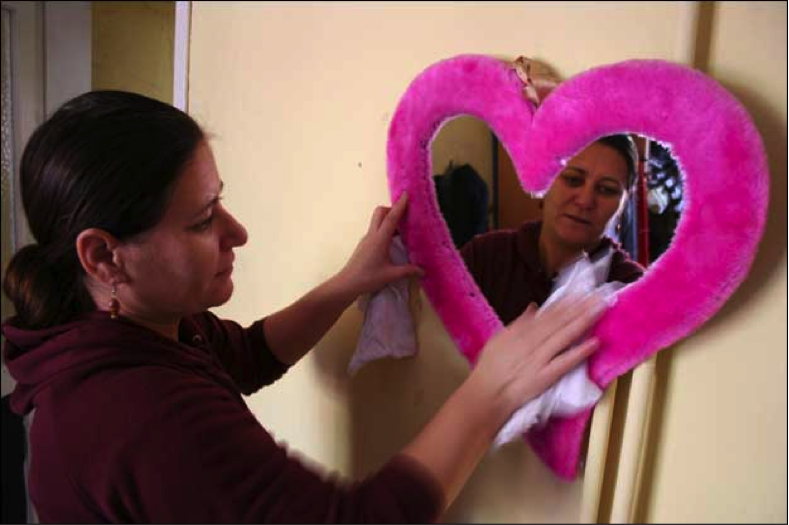
Gündelikçi (Emel Çelebi, 2006)
Last October, director Ismet Arasan won the award for best documentary at
Antalya’s Golden Orange Film Festival for his film Adakale Sözlerim Çoktur. He then issued a letter to
the Turkish documentary community calling for the better integration of
documentary into Turkish culture and education since he found in Antalya that
documentaries are still treated as a secondary form of filmmaking, despite
their obvious relevance to society. Documentarians are seated at the back of
the theater, he said, another way to say that they are not taken seriously as
filmmakers.
It seems that in the Turkish diasporic film festivals, like the one I
recently attended in London, the second class status of documentary is fervently
maintained. In fact, the London Turkish Film Festival’s feature film line up
this year looked remarkably similar to Altin Portakal’s. It introduced London
audiences to the latest Turkish films on offer, some of them truly masterful,
such as Niri Bilge Ceylan’s Uc Maymun,
and Özcan Alper’s Sonbahar. There was
very little crossover, however, with the documentaries. Several of the
documentaries selected to be screened were made two, three, even four years
ago. The programming choices were not entirely clear to me, to be honest. Some
of the films chosen were not particularly well made and I could certainly think
of others not included that would have drawn more of an audience, however all
of them, without exception, made powerful cultural and political interventions,
whether about the mistreatment of political refugees in Van, the of residents
in Bergama, or the continued tolerance of torture by the Turkish state.
My complaint is not with the films selected but with the lack of prominence
accorded to the form. All but two of the documentaries in the festival were
relegated to a single screening on weekday afternoon slots that virtually
ensured no audience for them. I was able to attend two out of the three
sessions and I could count fewer than ten people in the audience each time.
This says much less about audience interest in documentary than it does about
the lack of regard for it by the festival programmers. Who, besides a mad
documentary film professor like myself, is going to be able to go to a film screening
on a Tuesday at 2? Clearly, not very many others.
Surely Turkish audiences in London and many others as well would take an
interest in such engaging documentaries such as Gündelikçi by Emel Çelebi (2006, winner of that year’s Best
Documentary prize at Altın Portakal) about the ubiquitous yet overlooked
housecleaners of Istanbul, and Rüya Arzu Köksal’s Son Kumsal (2008), a well-made film about the fate of the Black Sea
Coast. This year’s LTFF made me wonder when, if ever, Turkish programmers,
critics, scholars, and even filmmakers themselves will begin to take
documentary seriously as an art form? As Ismet Arasan said in October of 2008,
it’s high time.
Keywords: Ismet Arasan, Adakale Sözlerim Çoktur, Gündelikçi, Emel Çelebi, Rüya
Arzu Köksal, Son Kumsal, Turkish Film Festivals
London Dispatch #14 – December 2008
TURKISH ENglish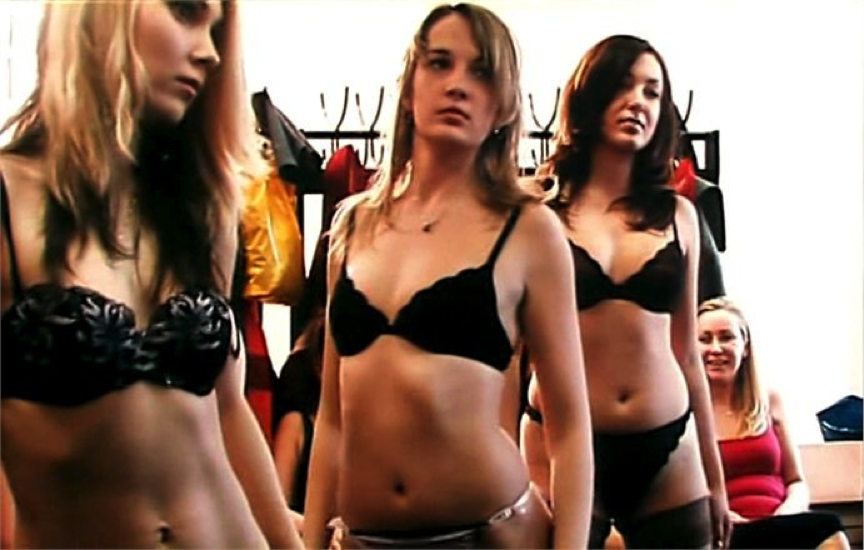
Bitch Academy (Alina Rudnitskaya, 2008)
One of the
great surprises of the London Film Festival this year was a program of three
short documentaries by a young Russian filmmaker named Alina Rudnitskaya.
Rudnitskaya works with the St. Petersburg (formerly Leningrad) Documentary Film
Studio, originally established in 1918, the year of the Russian Revolution. Of
course, Rudnitskaya has not been working there from the beginning. In fact, as
a young woman born in 1976, she would have just come of age in the
post-Communist era. And it is precisely this post-Soviet culture that she
documents so well, specifically ways in which the transition and transformation
has effected the lives of women.
The screening
was organized chronologically, beginning with Rudnitskaya’s twenty minute film Amazons (2003) about a group of women
equestrians who make their living riding horses through the streets of St.
Petersburg, giving pony rides to children in parks and at birthday parties. The
film follows the induction of a young woman as she aspires to join the fierce
clan of urban cowgirls.
The second
film, Besame Mucho (2006) reveals a
similarly dissonant scenario as we are introduced to a range of average, middle
aged, working class women from a small provincial Russian town, who in their
free time sing for an amateur choir that is preparing a performance of arias
from Verdi’s Aida. The hardships of
the daily life of a garbage collector, a nurse, and a cleaning woman are
juxtaposed with the soaring melodramatic score of the opera. The women emerge
as multi-dimensional characters with ambitions far beyond what their modest
daily lives would imply. This is not a particularly novel story, of course, yet
it is always somehow compelling to witness the extraordinary aspects of
ordinary people.
It was the
third film in the series (and her most recent), Bitch Academy (2008), which most baldly [can also say “bluntly”]
revealed the effects free market capitalism has had on women in this
post-Communist era. This film follows several women in the pursuit of skills to
attract a man, preferably one with disposable income. What we learn is that
there is an actual “school” in which these skills can be acquired, and the
sessions, which are an unholy mixture of group therapy, dominatrix training,
and charm school, are meant to teach women how to please, and ultimately
ensnare, a man.
Aspirations
to something different, something beyond what life offers on the face of it, is
the thread that runs through these films. Rudnitskaya’s strict (and some would
say old-fashioned) adherence to observational filmmaking techniques means she eschews
interviews, voice-over narration and even inter-titles, that might help to
clarify or contextualize the images that we see. What we lose in factual and
historical detail, we gain in sympathy of feeling, and we are left with a very
visceral impression of the lives of a range of extraordinary ordinary women in
post-Soviet Russia.
Keywords:
London Film Festival, St. Petersburg Documentary Film Studio, Alina
Rudnitskaya, Amazons, Besame Mucho, Bitch
Academy
London Dispatch #13 – November 2008
TURKISH ENglish
Fotografías (Andres Di Tella 2007)
I recently
organized a documentary studies conference, held at Birkbeck College in London,
called “Documentary Now!”. As documentary studies is not a particularly well
known area in Turkey, I thought it might be interesting to discuss some of the
issues that were raised at this event. My not-so-secret ulterior motive is to
perhaps inspire some intrepid film scholars in Turkey to begin to focus more of
their attention on documentary as a legitimate (even exciting) area of
research.
The event
opened with a keynote address from the Argentinian filmmaker, Andres Di Tella.
Di Tella is that rare species of filmmaker who speaks eloquently and relevantly
about his own work. He screened his most recent film Fotografías (2007), and discussed the importance of the accidental
and even the error in documentary filmmaking. He specializes in the essay film,
a subgenre of documentary filmmaking that lends itself particularly well to the
personal voice. In Spanish, as in Turkish (and unlike in English) the word
trial and error are two words that go together well. In Di Tella’s films the
failure to find the story he seems to be looking for, or the failure to catch a
shot is as vital to his film as any “success”. And the ability to evoke the
unsaid, to somehow comment upon what the camera cannot convey, has as much
place in his films as does the act of “showing” so central to any cinematic
project. It may be obvious to say that documentary depends on spontaneity and
luck, but here Di Tella was also suggesting that a good documentary knows how
to make a success of failure.
We
also had a plenary session with Maysoon Pachachi of the Independent Film and Television College, Baghdad (http://www.iftvc.org/) about whom I wrote in this column last February. It is always sobering
to hear about films being made in the midst of the instability and
uncertainties of war. Pachachi’s talk came just after a panel devoted to the
question of documentary and art. The art world has seen a tremendous increase
of documentary video projects in the past 10 years and there is a way in which
that world has helped to liberate documentary from its more rigid or
unimaginative aspects. One finds that for artists, documentary often becomes
something in need of “intervention”—and artists seem to feel it is their role
to destabilize documentary certainties. Many art documentaries attempt to
disrupt any linear conception of time and space, and may also want to disrupt
the authority that documentary brings with it—raising doubts about whether a
film is “telling the truth”. It all begins to sound very post-modern and
abstract, however, when faced with the prospect of film students attempting to
document places and lives that may be blown up the next day. The point then,
about reality being ephemeral and uncertain does not need to be asserted, it is
patently obvious. In war, such instability is no longer “conceptual” and rather
it is documentary images that may well be needed to help put things back in
their place. It was juxtapositions such as these that I was most pleased about
with this conference, and I’m hoping that others involved will have found it as
provocative as I did. In the next few years I intend to bring people like
Andres Di Tella and Maysoon Pachachi to Turkey, and I will also be organizing a
documentary studies conference in Istanbul in 2010. By then I sincerely hope
there will be a burgeoning documentary studies movement in Turkey.
Keywords:
Documentary Now!, Maysoon Pachachi, Independent Film and Television College
Baghdad, Andres Di Tella, Fotografias
London Dispatch #12 – October 2008
TURKISH ENglish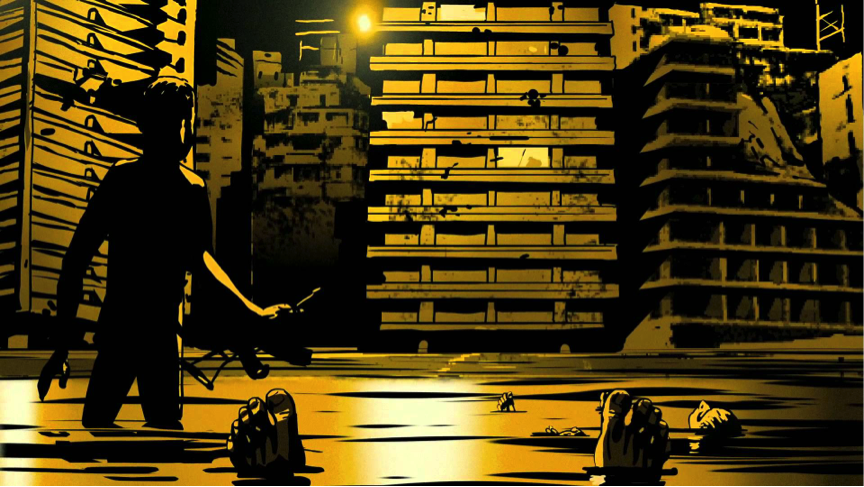
Waltz with Bashir (Ari Folman, 2008)
Have you
heard of the new trend: The animated documentary? And why not? some of the most
memorable graphic novels have been non-fiction. Think of Art Spiegelman’s Maus and Marjan Satrapi’s Persepolis. Very probably you’ve seen
the film Persepolis (2007), but as
with any other autobiographical feature film based loosely on the life of the
filmmaker, you weren’t thinking about documentary. It’s a matter of form. The
form that Persepolis took was akin to
a fiction film, using the codes and conventions of narrative cinema, not to
mention employing well known actors to perform the characters’ voices.
What I just
saw yesterday at a press screening in London is different. Waltz with Bashir (Ari Folman, Israel, 2008), which premiered at
Cannes this year, is a documentary about one soldier’s occluded memories of the
1982 Israeli invasion of Lebanon, and it is a film executed almost entirely in
animation. Imagine a documentary that incorporates re-enactments and
dramatizations, and then imagine those dramatizations portrayed in animated
illustration rather than live action video. I do an injustice to the film by
describing it thus, but I’m just trying to give an idea.
Of course,
the use of animation is not new in documentary. Elements such as maps of
military invasions and the like have been animated in documentaries for
decades. We have also seen an increase in the use of animation in documentaries
that aim to entertain as well as inform, such as Michael Moore’s animated
American history lesson in Bowling for
Columbine (2002), or the animated sequences of McNugget production that
made audiences squirm in Supersize Me
(Morgan Spurlock, 2004).
Perhaps it
was just a matter of time before documentary filmmakers got really serious
about animation and produced feature length work. The first feature length
animated documentary, Brett Morgen’s
Chicago 10 was released in 2007 in the US, about the famous trial of
American anti-war activist Abbie Hoffmann and his fellow Yippies. That film,
however, integrated animation with archival footage, relying heavily on the
actual film footage of the anti-war protests at the 1968 Democratic National
Convention in Chicago. The animation was used to re-construct the carnivalesque
courtroom scenes of the famous trial, for which written transcripts were the
only available document. Waltz with
Bashir, goes even further than this, relying almost entirely on animated
footage, even to depict conversations and interviews conducted by and with the
filmmaker.
Bella Honess
Roe, writing her doctoral dissertation on animation and documentary at the
University of Southern California, suggests that there are two general ways in
which animation has been used in documentary: substitutive and interpretive.
Substitutive, would account for any animated footage that fills in missing
imagery, for which perhaps there is no archival footage or material.
Interpretive animation sequences in documentary depict that which is
unrepresentable in photographic imagery, such as emotions, the imagination,
states of mind. Waltz with Bashir
uses both substitutive and interpretive animation, and it does so to very
powerful effect. The emotional power of this animated documentary is not to be
underestimated.
Keywords:
Animated Documentary, Persepolis, Marjan
Satrapi, Waltz with Bashir, Ari
Folman, Bowling for Columbine, Chicago 10, Bella Honess Roe
London Dispatch #11 – September 2008
TURKISH ENglish
Flying: Confessions of a Free Woman (Jennifer Fox, 2006)
I was asked recently to review a 6 part documentary series called Flying: Confessions of a Free Woman for the Feminist Media Studies Journal, made by an American filmmaker named Jennifer Fox, and funded predominantly by the Danish Film Institute in Copenhagen. As this series has gotten quite a lot of acclaim, practically single-handedly credited with reviving a popular feminist dialogue internationally, I decided to accept the offer. Comparisons are inevitable with popular post-feminist television shows like Sex and the City or Desperate Housewives, as Fox goes around the world with her camera, talking with old and new women friends from no less than 19 different cultures about sex and love. In fact, promotional materials for the series explicitly make the link, calling it “the real person’s Sex and the City.” Running at a total of 351 minutes, it rivals the likes of Shoah (Claude Lanzmann, 1985) or Michael Apted’s Seven Up series in marathon length documentaries.
In the review I wrote I bemoaned the sad fact that this film about many aspects of women’s lives refuses to call itself “feminist” and seems to perpetuate the illusion that questions such as gender inequality, sexual liberation, the right of a woman to control her own body and life-choices, have never been pondered, let alone organized around in women’s movements the world over for the past forty-odd years. It is as if the film wants to imagine itself the first to raise these questions, and it suffers terribly from the lack of informed analysis and participation of women not afraid to call themselves feminist.
But here I want to talk more about the question of form. Fox has chosen to pursue an intimate first person style of filmmaking, where she talks at great length about her own life and the lives of her friends, and introduces the idea of “passing the camera” where her interlocutors also shoot her, creating a two-way dialogue. One is tempted to argue that fox is feminizing an already established form of investigative first person filmmaking. Her frank explorations of her own emotional and psychological state could easily appear to be an innovation in the first person mode of address. Compared with the bumbling bravado of Michael Moore or Nick Broomfield, Fox is a welcome respite of introspection and honesty. But with a little reflection, we are reminded of prior first person filmic endeavours which tread on such personal and intimate territory, such as Ross McElwee’s Sherman’s March (1986), or Marlon Riggs’ Tongues Untied (1989). Indeed there have been numerous feminist first person films as well, most of which raise at least some aspects detailed in Fox’s project, having to do with gender roles of the “modern” woman. The very first film of this type was Joyce at 34 (Joyce Chopra and Claudia Weill, 1972), which attempted to reconcile the roles of mother, wife and filmmaker. It seems strange to me, that a full 35 years later, a film project can emerge as if such issues have never been considered before, and with the added delusion that it has invented a form in which to do so. I found the series derivative and disappointing, not least because of the claims it wants to make for originality. I believe filmmakers (and producers who back the projects) have a duty to know something about the field of cultural production from which they emerge. Otherwise, we risk continually attempting to re-invent the wheel, at great expense, and with little added insight.
Keywords: Flying: Confessions of a Free Woman, Jennifer Fox, Sherman’s March, Ross McElwee, Tongues Untied, Marlon Riggs, Joyce at 34, Joyce Chopra, Claudia Weill, Longitudinal documentary, Shoah, Claude Lanzmann, Sex and the City, First Person Film
London Dispatch #10 – July 2008
TURKISH ENglish
Jennifer Baichwal’s Manufactured Landscapes (2006)
The BFI Southbank is a reparatory cinema, which means it generally only shows a film two or three times before moving on to the next. This enables it to do broad ranging retrospectives and thematic programming. Every month, however, it features one or two films that are so beloved or so masterful, and so certain to draw a crowd, that it is screened repeatedly over the course of the month. This month, for instance, as part of their Jeanne Moreau retrospective, they’re screening Jules et Jim no less than 14 times. Very occasionally a documentary is programmed into this coveted slot. So when Jennifer Baichwal’s film Manufactured Landscapes (2006), about the work of photographer Edward Burtynsky was scheduled to be screened 10 times, I made sure to catch one of them.
The promotional materials for the film foreground the fact that the film would be in some sense about Burtynsky and his large-scale photographs of poisoned post-industrial, landscapes. But it also held out the promise that the film would be a truly powerful environmentalist indictment against the stunning waste and detritus of late capitalism. Certainly the opening dolly shot revealing rows and rows of anonymous factory workers, endlessly assembling mysterious objects that turn out to be everyday household appliances, such as fans and irons, inspires a mesmerizing and horrifying fascination. Burtynsky’s photography is itself always simultaneously mesmerizing and horrifying, but I have always found photography of that kind embodies an impossible, and ultimately quite unforgivable, paradox: aestheticizing that which must, in good conscience, be condemned.
I somehow believed that the film would go beyond Burtynsky’s paradox and expound further upon the profound devastation industrial waste is wreaking on the planet, and the human consequences of advanced technological assembly-line labour. I retain a naïve faith, despite my better judgement, that film can animate and enliven debates that still photography cannot. I believe, even though I should know better, that film can directly address what the static image can only point to. I expected this film to take a position, to boldly state that which Burtynsky’s imagery hints at: that these images, however perversely seductive they may be, are nonetheless harbingers of our demise. What I did not expect, and what I was dismayed to find, was that the film was committed to reproducing Burtynsky’s deceptively sublime vision in filmic form. Burtynsky claims, in a public talk recorded for the film, that “If I said ‘this is a terrible thing we’re doing to the planet,’ people would agree or disagree. By not saying what you should see, that may allow them to see their world a little differently.” This is precisely the line the film takes as well, refusing to commit to anything more than Burtynsky’s agnosticism on the subject of environmental and human degradation.
In some of the publicity material for the film, reproduced slavishly by reviewers, the film is favourably compared to Al Gore’s An Inconvenient Truth (Davis Guggenheim, 2006), suggesting that where Gore pontificates and “lectures”, Burtynsky and Baichwal leave the viewer free to come to their own conclusions. What could that possibly mean? How do you come to an independent conclusion about toxic sewage, mountains of e-waste, and miserable, even murderous working conditions in the ship cemeteries in Bengal or the sweatshops of China? What is the point of remaining agnostic about issues like these? How can one justify such an “even-handed” position as anything less than criminal? I left this well-lauded film, quite beside myself, disturbed by its sirenic beauty and utter lack of critique. The “ethical dilemma”––to like or dislike the film, to resist its allure––is of course my own and any viewers, but the fact that the filmmaker felt that to be a defensible position to leave us in, should weigh on her conscience. This film could have said so much more.
Keywords: Manufactured Landscapes,
Jennifer Baichwal, Edward Burtynsky, An Inconvenient Truth, Davis Guggenheim
London Dispatch #9 – June 2008
TURKISH ENglish
Mustafa Abu Ali’s They Do Not Exist (1974)
The two week long London Palestine Film Festival is the largest and most important showcase of Palestinian cinema in the world. The festival has been running continuously since 1999, and it seems to have grown in both proportion and prestige. This year, much as the last four, the first week was held at the stylish if labyrinthine Barbican, and the second week consisted of free screenings at SOAS (School of Oriental and African Studies), University of London. Considering that a national cinema usually requires the basic infrastructure of a nation, it is nothing short of remarkable that there is something we can call Palestinian cinema in the first place, a point not lost on Hamid Dabashi in the introduction to his edited collection, Dreams of a Nation: on Palestinian Cinema (Verso, 2006). That there has been a continuous film festival in London showcasing Palestinian films for the past 9 years is even more impressive.
As one might expect, the vast majority of the films in this festival are documentaries. Not all of them are made by Palestinian filmmakers, and there are even the occasional films by Jewish Israeli filmmakers who are sympathetic to the Palestinian cause. Considering how little known most Palestinian films are, the programme usually also includes some “classics” of Palestinian cinema, such as Mustafa Abu Ali’s They Do Not Exist (1974) or Tawfick Saleh’s The Dupes (1972). This year, the programme included two veteran French filmmakers, Jean Luc Godard’s poetic meditation on war, Notre Musique (2004) and Chris Marker’s three hour epic The Grin without a Cat: Scenes from the Third World War (1977).
The theme of the Nakba was prominent, considering it is the 60th anniversary of the Palestinian “Catastrophe”, celebrated with great fanfare in Israel as the anniversary of independence. The festival kicked off with a night of testimonial documentaries, the first called Collection of Testimonies from the Nakba Archive (Diana Allan & Mahmoud Zeidan, Lebanon, 2007) and the second, a short video called Women’s Testimonies of the Nakba (Raneen Geries, Israel, 2006). It is interesting to note is that both projects are affiliated with archival endeavors to record the events of the Palestinian Nakba, the first predominantly archived by Palestinians for their own historical record, the second one being part of an Israeli project Zochrot (memories), designed to engage the Israeli public in the process of recognizing and remembering the experiences of Palestians in 1948.
The question of recognition was taken up in at least two other films in the festival, but not necessarily in terms of the Nakba. One film in particular, Nada El Yassir’s All that Remains (2005), powerfully evokes the no-win situation of Bedouins inside Israel’s borders as the Israeli state seeks to evict them off of their traditional lands and force them into concrete block houses in dead-end towns. The encampments in which the Bedouins live are officially “unrecognized” by Israel, which means they are neither on the electrical grid nor can they obtain basic services such as running water, sanitation, health care or education. They continue to tend their animals and crops despite the fact that they risk eviction at any moment and have had their crops and homes repeatedly destroyed by the authorities.
The London Palestine Film Festival naturally features some heart breaking films, but there are also beautiful ones. It relies on documentaries to “testify” to the plight of Palestinians, be it their daily humiliations and the arbitrary and oppressive restrictions placed on their lives and livelihoods, their right to return to their homelands, their resistance fighters and movements, and indeed their artists and poets. One can see the great cultural power and relevance of documentary in festivals such as this one.
Keywords: London Palestine Film Festival, They Do Not Exist, Mustafa Abu Ali, Collection of Testimonies from the Nakba Archive, Diana Allan & Mahmoud Zeidan, Women’s Testimonies of the Nakba, Raneen Geries, All that Remains, Nada El Yassir
London Dispatch #8 – May 2008
TURKISH ENglish
Ironeaters (Shaheen Dill-Riaz, 2007)
Spring was
the season for documentary film festivals in London. Or rather, it was the
season for film festivals that featured and even highlighted documentaries. In
March, London hosted the Human Rights Watch Film Festival (HRWFF), which
although not documentary specific, tends to include a large number of
documentaries in its line up. April saw two more festivals in town: the
relatively new London International Documentary Film Festival (LIDF), in its
second year, screening in 8 different locations around the city; and the much
more well established and less peripatetic London Lesbian and Gay Film Festival
(celebrating its 22nd year) held at the BFI Southbank. If I didn’t
have other things to do (like my job, for instance), I’d have been going to
several films a day, every day, for a month solid. As it is, I’ve done little
else besides eat, sleep, work, and go to film screenings. Feel sorry for me.
The HRWFF
showed strong films from Brazil (Behave, Maria
Ramos, 2006); Chile (Calle Santa Fe,
Carmen Castillo, 2007), Estonia (Kalinovsky
Square, Yury Khashchavatski, 2007), the US (Everything’s Cool, Daniel B. Gold and Judith Helfand, 2007), and
many other countries. One particularly memorable film was the Japanese/US
co-production, White Light/Black Rain
(Steven Okazaki, 2007), about the US nuclear attacks on Hiroshima and
Nagasaki. The filmmaker found the few
remaining survivors of the blasts who tell in chilling detail of their memories
not only of the day itself but of the aftermath. Shockingly, he also interviews
young people on the streets of the two cities (according to the film 75% of
Japan’s population was born after 1945) who seem to have absolutely no idea
about what happened. The film is one of the most potent anti-war films I have
ever seen.
The London
International Documentary Film Festival was very ambitious for a festival in
its second year, showing 80 films in 8 days, spread out all over the city. It
does make the festival a bit hard to keep track of, but they kept the ticket
prices down and the multiple venues meant that people from different parts of
the city might be more likely to come. The festival as a whole was quite
refreshing; less focused on “industry” than most doc festivals and more on
“conversation.” In fact it was subtitled, “A Conversation in Film” and they
meant it. Many screenings had a panel discussion afterwards so that audiences
could learn more about the topic or issues raised by the film. One screening I
went to, of a phenomenal film called Ironeaters
(Shaheen
Dill-Riaz, 2007, Bangladesh/Germany) about the workers who break down ships for
iron in Chitagong, Bangladesh, had a panel that included the filmmaker, a
Bangladeshi writer, and a representative from the International Trade Union
Congress. Moving the focus away from the film itself or the conditions of its
production, the discussion could encompassed questions of workers rights,
unionization and international efforts to improve working conditions for the
“ironeaters’”.
Of course,
not all documentaries are oriented around “topics” or “issues” but for those
that were, this was an opportunity for people to discuss with one another and
ask questions of experts, rather than just going off on their own without any
further illumination. It seemed to be an attempt to revive the notion of the
public sphere, which although a bit idealistic, is still a worthy aim. Film screenings,
in fact, are one of the few places left where such a public sphere could
possibly be reconstituted. Good for the LIDF for trying.
It’s great to
live in a city that has so many film festivals, or that’s what I keep telling
myself as a consolation for missing the Istanbul Film Festival. If only I could
be in both places at once.
Keywords:
Human Rights Watch Film Festival, London International Documentary Film, White Light/Black Rain, Steven Okazaki,
Festival, Ironeaters, Shaheen
Dill-Riaz
London Dispatch #7 – April 2008
TURKISH ENglish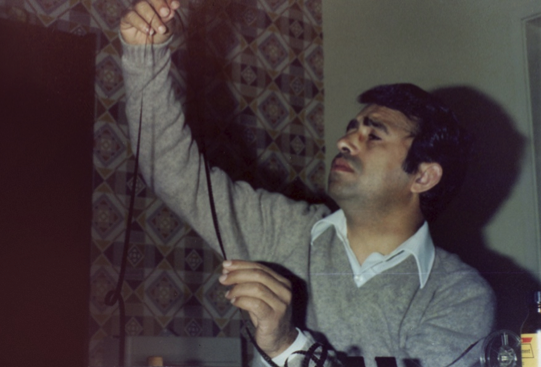
I for India (Sandhya Suri, 2006)
When making an autobiographical film, many filmmakers turn to their personal family "archive" for inspiration or verification. When the footage corroborates one's childhood memory then it serves as a Cartesian affirmation: "I was filmed therefore I am". When it deviates from memory it serves well as a critique of the family mythology, as if to say, the family camera lies, mine tells the truth. Paradoxical as this may be, both approaches are widespread and neither particularly challenging to filmic conventions.
Occasionally, a first person film appears that goes beyond such shortsightedness. Sandhya Suri's film, I for India (2006), just out on dvd, and a hit on the festival circuit, is one such exception. Suri takes a goldmine of a family archive and weaves it into a film that goes beyond the confines of the family to comment upon the socio-historical phenomena of diasporic Indian experience in England. Suri's family emigrated to England in the 1960s, at the height of the so called "brain drain" where Indian professionals, especially doctors, scientists, and engineers, left India for "further training" in England with the intention, often not realized, of returning. In the case of the Suri family, one belated return 17 years after their initial departure, was attempted but then quickly aborted when it became clear that they could not maintain the same standard of living in Northern India as they could in Northern England, where they had settled and where Yash Suri, the filmmaker's father had a good job at a hospital.
Yash Suri, an amateur filmmaker himself, preferred to make Super 8 films and record audio letters for his family back home, not unlike what many Turkish migrant workers have done. The difference was that he bought a second set of equipment (Super 8mm camera, projector, reel to reel audio recorder, and microphone) to send to Meerut so that his family could return the gesture and there is a satisfying reciprocity found in this unusual family film archive.
The family in Darlington, England sent films about the strange and exotic customs and attractions they encounter in England and the family back in India felt no need similar to self-ethnographise at home. This, in and of itself, is a beautiful reversal of the customary colonial gaze. But the film goes further, revealing in the aural register what the conventions of the visuals (and after all, Super 8mm usage was nothing if not conventional, with birthday parties and family holidays) failed to register: the longings, ambivalences, ambitions, and regrets of their diasporic existence. These tensions are coupled with strategically edited footage from BBC shows of the 60s, 70s, and 80's that reveal the hostile cultural milieu in which these migrant stories are staged.
I can imagine a similarly moving representation of Turkish diasporic experience, especially in Germany or the Gulf, assuming such a rich family archive can be found. If anyone knows of one, do let me know!
Keywords: first person film, Sandhya Suri, I for India, home movies, auto-ethnography
London Dispatch #6 – March 2008
TURKISH ENglish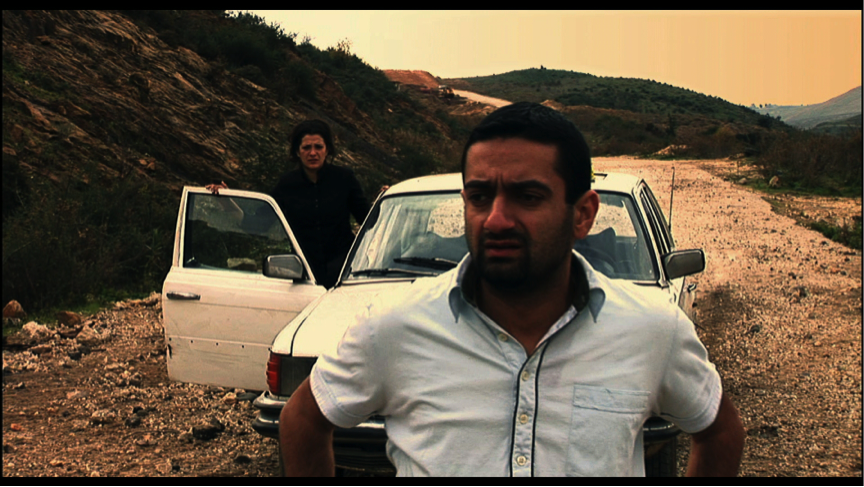
Under the Bombs (Philippe Aractingi, 2007)
Take this personality test:
When the ground starts trembling or the bombs start falling, what do you do?:
a) run for cover
b) lend a hand
c) grab your camera
The answer for Lebanese director, Philippe Aractingi, is unquestionably: c) grab your camera. Aractingi is not a documentary filmmaker per se (he did begin as one) but he is someone with quick reflexes and a keen sense of the dramatic. His film, Under the Bombs (Philippe Aractingi, 2007), was shot in Lebanon in the summer of 2006, during and immediately after the Israeli bombardment. Under the Bombs features two professional actors improvising a loose script centered around Zeina, a wealthy mother returning from abroad in search of her sister and young son in the South of Lebanon, and Tony, the Christian taxi driver who agrees to take her on her quest. Their “backdrop” is the recently devastated landscape and destroyed roads and bridges of Beirut and South Lebanon. The “supporting cast” is comprised of actual Lebanese people, who were experiencing the full effects of the attacks as Aractingi’s cameras rolled. Needless to say, the tension is high, and emotions raw. The film is undeniably engaging, yet there is something contrived about it. One is left with an uneasy feeling that real suffering was used to showcase a compelling drama.
The Lebanon summer war was arguably the most video-documented in the history of the region, in non-fiction and fiction. It almost seems as if anyone in the region with a video camera, or even a mobile phone, chose option “c”. Documentarians, from Lebanon and abroad, assigned themselves the noble task of witnessing the brutal consequences of aggression, but I would argue that many are just as prone to the tendency of opportunism as Aractingi, as they went about proving their metal as intrepid filmmakers in a war zone.
Aractingi’s is not the first film to set up a fictional narrative with the backdrop of actual historical events. Abbas Kiarostami and Michael Winterbottom excel in this terrain. One of the earliest instances of this type of hybrid filmmaking is Haskell Wexler’s Medium Cool shot in Chicago in 1968 during the anti-Vietnam War protests at the American democratic national convention. Wexler’s fictional characters wind their way through scenes of hippies, activists, and flower children chanting and waving banners. The tension rises when the US National Guard’s tanks roll into downtown Chicago and fire live bullets into the crowd. There is a famous moment in the film where the fictional bubble is burst as a frightened camera assistant yells out to the director, “Watch out Haskell, they’re real.” Medium Cool opens with a scene of a news crew at the scene of a car accident where they coolly film the severely injured driver as she moans in agony, making sure to “get the shot” before calling an ambulance.
The great difference between Wexler’s groundbreaking film and Aractingi’s is that Wexler’s intent in Medium Cool is to highlight the ethical dubiousness of the filmmaking impulse in the face of human tragedy whereas Aractingi’s intent would seem to be to merely to exploit it.
Under the Bombs won the Human Rights Award at the Venice Film Festival, and first prize as well as best actress (Nada Abou Farhat) at the Dubai Film Festival. It is premiering in the UK at the Human Rights Watch film festival in March.
Keywords: Under
the Bombs, Philippe Aractingi, Medium
Cool, Haskell Wexler, documentary ethics
London Dispatch #5 – February 2008
TURKISH ENglish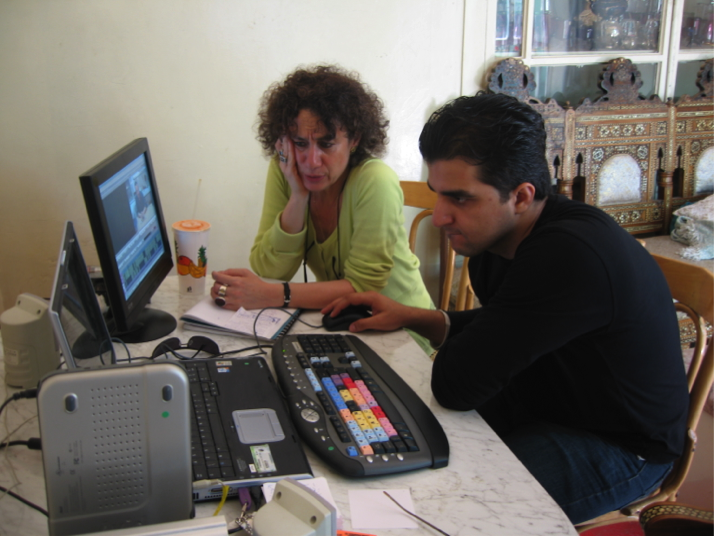
Independent Film and Television School, Baghdad
Imagine
trying to run a film school with only two and a half working cameras,
intermittent electricity, no permanent address, and students who don’t show up
for weeks at a time because it is too dangerous for them to leave their house.
These are the conditions under which Maysoon Pachachi and her colleague Kasim
Abid have attempted to set up the first film school in Baghdad. Running since
2004, the Independent Film and Television College has had more than its share
of difficulties. They’ve had students whose cameras have been stolen by street
gangs, locations bombed, and even one student who in attempting to escape from
kidnappers, was shot in the leg and chest. Though the student survived, the
attack came only weeks after his house was bombed killing his wife and father.
Needless to
say, these are not the usual conditions under which a film school has to
operate, yet it seems to make the directors of the IFTC all the more determined
to try. With no fixed site, no insurance, and immanent danger everywhere, the
IFTC has had to be very creative in their provision. Rather than conducting
their camera exercises on the street, they do them on the roof of the building.
A four month course stretches to eight, as students encounter untold obstacles
to the completion of their task.
At the
moment, Baghdad has become so inhospitable, however, that the IFTC is setting
up in Damascus to train filmmakers there who can then continue their filmmaking
in Baghdad when conditions improve. So far funding has been minimal and they
still lack the minimum basic resources to conduct a comprehensive training
program for their 20-24 students, who come from all over Iraq, though mostly
from Baghdad to attend this intensive, tuition free, course. When operating in
Baghdad, they cannot publicize their call for students nor even their location,
for fear of attack, yet through word of mouth they have attracted some very
dedicated students, whose work has been shown in festivals around the world and
on Al Jazeera.
I asked
Maysoon Pachachi, when I met her at the CinemaEast film festival in NY, why she
felt students were still drawn to filmmaking despite the considerable dangers.
She suggested not only that people were very eager to tell their stories and
the story of how every day people experience the occupation, but also that
filmmaking, and documentary in particular, offers a way to make sense, however
temporary and finite, of a situation that otherwise feels completely out of
control. “It is, in a small way, a kind of repair work,” she said.
For her part,
she is an Iraqi who has lived abroad for many years and felt unable to sit back
and watch helplessly as Baghdad burns. She said her choice was either to sit
home and cry all day or to get out and do something. As a documentary filmmaker
trained at the London Film School, what she had to offer was her training and
access to the basic materials of filmmaking and she set out, with Kasim Abid,
to establish what is now a floating film school for Iraqi students.
As film
schools around the world move to HD, IFTC would be grateful for donations of
used DV cameras for their student’s use. For more information go to their
website.
Keywords: Maysoon Pachachi, Kasim Abid, Iraq, Independent
Film and Television School Baghdad
London Dispatch #4 – January 2008
TURKISH ENglish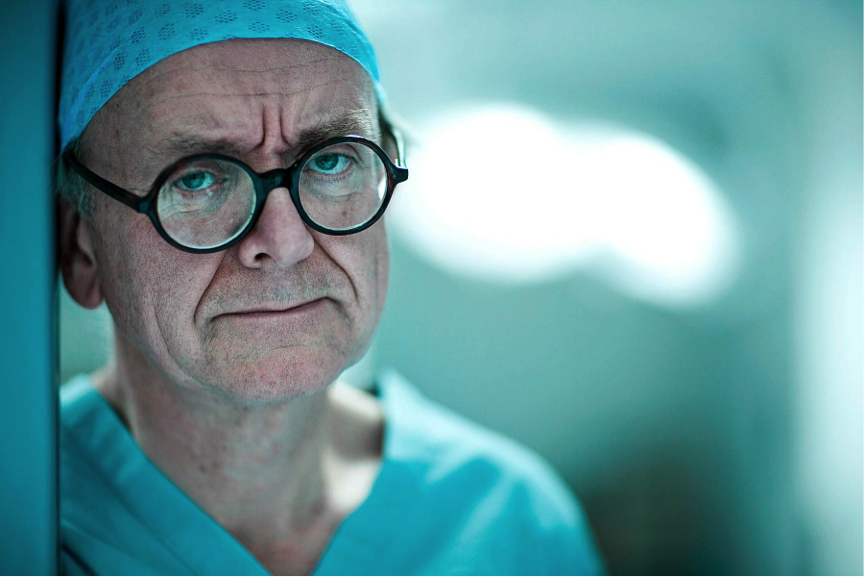
The English Surgeon (Geoffrey Smith, 2007)
Are feature
length documentaries becoming more like classical fiction features? Has the
recent, unprecedented success of documentaries, and their newfound theatrical
home, inclined documentarists to aspire to produce something more akin to the
familiar cinematic fare? If you think of recent blockbuster documentaries like
Davis Guggenheim’s An Inconvenient Truth
(2006) or Michael Moore’s Sicko
(2007) then the answer would be no. For all of its success, An Inconvenient Truth was little more
than an updated version of the old-style “illustrated lecture” that gave
documentary such a bad name in the 1950s and 1960s. And Michael Moore’s antics
are a cross between hyped-up journalism and comedy: call it journo-tainment, if
you will.
But the UK
premiere of three feature length documentaries at the London Film Festival, The English Surgeon (Geoffrey Smith,
2007), In the Shadow of the Moon
(David Sington, 2007), and Terror’s
Advocate (Barbet Schroeder, 2007), suggests something is afoot. Each of
these big budget documentaries have all of the elements of driving, emotionally
compelling drama, featuring heroic (or in the case of Terror’s Advocate, Faustian) male leads at the center. Further,
they attempt to create impassioned sympathies by depicting Herculean feats or
moral battles of good against evil.
In the case
of The English Surgeon, even the
title seems to want to ally itself with its fictional kin. This film, more than
any, fits the mould. With exquisite production values (though shot on HDV) and
an affecting score (by Nick Cave and Warren Ellis), the film recounts the
struggles of an English brain surgeon as he attempts to assist his Ukrainian
counterpart in establishing a state of the art clinic in Kiev, despite the
bitter opposition faced by the uncomprehending and obsructionist authorities.
It really is a moving film, described by the LFF as being full of “tense drama
and heartbreaking pathos.” It received a standing ovation at the screening I
attended, and for good reason. The experience of watching the altruistic
doctors triumph against all odds has its resolute pleasures, not to mention its
usual palliative effects.
Further substantiating
the claim is another big budget feature length documentary, which immediately
following its LFF premiere went on to a major UK theatrical release. In the Shadow of the Moon (David
Sington, 2007, produced by Ron Howard) is unabashed in its epic aspirations.
Although it recounts a well-known story of NASA’s successful (and also
unsuccessful) attempts to land on the moon, it is nonetheless set up as a
suspense film, with the breathless anticipation of a thriller. The heroic men
of the various missions recount their tales of triumph and woe accompanied by
powerful archival images of their flight and plight. One astronaut reminds us
that the US Apollo program was designed to raise morale of the American people
and American stature around the world at a time when it was losing the war in
Vietnam and its image was at an all time low. It isn’t hard to see that the
film had a similar mission to polish the tarnished image of America today.
Admittedly, Terror’s Advocate is more complex than
either of these other films, made as it is by the director of General Idi Amin Dada: Autoportrait
(1974), a filmmaker famously adept at representing the intricacies of the
macabre. Here the protagonist, Jacques Vergés, plays the inscrutable lawyer,
outmaneuvering his cleverest opponents with unparalleled skill. His clients run
the gamut from freedom fighters to fascists, and the moral uncertainty and
vacillation of it all is as gripping as the best drama.
Documentary
has always had some affinity with a range of fictional genres (courtroom
dramas, detective films, war and adventure films, musicals, even comedy), yet
for better or worse, only now are we beginning to see documentaries that cannot
easily be differentiated from their generic counterparts in fiction.
Keywords:
Genre, London Film Festival, An
Inconvenient Truth, Davis Guggenheim, Sicko,
Michael Moore, In the Shadow of the Moon,
David Sington, English Surgeon, Geoffrey
Smith, Terror’s Advocate, Barbet
Schroeder
London Dispatch #3 – December 2007
TURKISH ENglish
Minamata: The Victims and their World, Tsuchimoto Noriaki, 1972
This Autumn, the British Film Institute ran a documentary series programmed by Mark Cousins, called “Ten Documentaries that Shook the World,” which featured documentaries that have allegedly had an actual, at times even calculable, effect on the world around them. The theme of the programme was obviously a bit too ambitious, since how many films, documentary or otherwise, can really be said to have “shaken” the world, but they did programme a few films that surely did have some demonstrable effect. For instance, The Thin Blue Line was screened, and although it surely didn’t “shake the world” it was directly responsible for freeing a wrongly accused man languishing on death row, and in the meantime, it rocked documentary aesthetics, which at the time of its release (1988) was still fetishizing observational filmmaking and the cult of objectivity. The film utilized fictional techniques to tell a multi-perspectival narrative that turned into the documentary equivalent of Rashamon. The great difference being that with Morris, as opposed to Akutagawa or Kurosawa, the truth comes out in the end. Although his film has been called the first post-modern documentary, Morris is famous for declaring that Baudrillard doesn't live in Cambridge, Massachusetts, implying that where Morris lives, they still believe in the good old fashioned concept of objective truth.
There were other films which may have impacted even more lives still, such as the early activist film, Minamata: The Victims and their World (Tsuchimoto Noriaki, 1972) about a group of fishermen who took on a major chemical corporation which had polluted their waters with methyl mercury causing a new and devastating disease known as Minimata. The film is remarkable not only for having documented the fisherman throughout the long and difficult years leading up to a confrontation at a corporate shareholders meeting, but also as a document in the history of documentary filmmaking. It is shot in 16mm but without sync sound. So even though portable synchronized film equipment was developed and perfected through the 1960s, they were still shooting non-sync in Japan in 1972. It is a classic example of an advocacy documentary, made three years before Barbara Kopple's Harlan County, U.S.A. (1976) but barely even mentioned in most accounts of documentary history.
Another fascinating film screened in this series, though one I fail to see how it “shook the world” was For Freedom (Hussein Torabi, 1980) a film shot in 35 mm documenting the political actions leading up to the Iranian Revolution and thereafter. The film's production trajectory is nearly the exact opposite of other revolutionary documentaries such as Battle of Chile (Patricio Guzmán, 1976). With For Freedom, the filmmakers filmed underground and illegally before the revolution, in opposition to the Shah, and afterwards with the full support of the new regime, which had a brief temporal lapse before it clamped down on filmmaking. Surely the revolution shook the world, but the documentary merely promotes the events, having in and of itself changed little. The BFI progamme notes indicate that For Freedom has been screened on Iranian television every year since the revolution, though it seems to have rarely been screened outside of Iran.
The question of impact is a crucial one for documentary. Not all documentaries aspire to have a powerful social or political impact, but of those that do, one has to wonder how many actually succeed and how we might even be able to measure that success. Still, even if we approach the question of documentary’s impact on the world with a healthy dose of skepticism, I for one, find it reassuring that, if only occasionally and with only limited results, a film really can make a difference in this world.
The BFI programme included a few titles that were less than inspired choices, but amidst the more predictable fare (Fahrenheit 911 ––Michael Moore, 2004, An Inconvenient Truth—Davis Guggenheim, 2006, Triumph of the Will—Leni Riefenstahl, 1934) were some extraordinary pieces of filmmaking that remind us that documentary filmmaking can occasionally shake the world.
Keywords:
Mark Cousins, BFI, Thin Blue Line,
Errol Morris, Minamata: The Victims and
their World, Tsuchimoto Noriaki, Harlan
County, U.S.A, Barbara Kopple, For
Freedom, Hussein Torabi, Battle of
Chile, Patricio Guzman
London Dispatch #2 – November 2007
TURKISH ENglish
Ali Kazma, Care, from Obstructions (2007)
This is only
my second London Dispatch and already I’m breaking my promise to report on
documentary events in London. Although I am writing from London, I want to
devote this column to the presence of documentary in the 2007 Istanbul Bienali.
This year’s bienali, curated by Ho Hanru, is loaded with documentaries of all
kinds, whether in the three official documentary film programs screened at
scheduled times during the exhibition, or the random video installations, many
of which use documentary in very innovative ways.
There are
three main points I want to make about the presence of documentary in the
bienali. The first is that documentary images, whether still or moving, have
always been a part of the art world, even when not recognized as such.
Secondly, the more politically oriented the curator, the more documentary
images one tends to see in an exhibition (despite the fact that documentaries
are not necessarily nor inherently political). And thirdly, documentary in the
context of the art world requires a much more expansive definition than that
which goes by the same name on television or in the theatres. The main elements
that distinguish documentary in the art world tend to be duration and spatial,
sometimes even sculptural, presentation. The work can be multi-channel, and is
not pressed into the demands either of unforgiving television programming
slots, or for that matter, the limited attention span of a television or
cinema-going audience.
Several of
the documentaries in the exhibition seemed motivated by activist inclinations,
such as Maquilapolis (Vicky
Funari, Sergio de la Torre),
about the piece-work factories in Northern Mexico or Turku
Soylemeyen Tepe (Ege
Berensel, Serhat H. Yalçınkaya, Banu Ornat) about the Inay movement against a cyanide factory in
Bergama. But there were also more experimental documentaries, such as the
haunting black and white film Object
(Kan Xuan) which explores the abstract disorientation of watching known
substances such as flour or milk dropped
into water; or Obstructions (Omer Ali
Kazma), a 4-channel installation, making disturbing visual parallels between
the labor of a ceramicist, a clock maker, a brain surgeon, and a slaughterhouse
worker.
I call
attention to the nearly ubiquitous presence of documentary in this year’s
bienali only to emphasize the intimate and ongoing relationship between art and
documentary, a connection that most fail to acknowledge, even when it would
seem hard to ignore.
As a final
note, if you missed this year’s bienali, don’t miss the rare opportunity to see
Kutluğ Ataman’s eight hour documentary, Semiha B. Unplugged (1997), playing through February 2008 as part
of the “Modern and Beyond” exhibition at Santral Istanbul.
Keywords: Istanbul Biennial 2007, Kutlug Ataman, Semiha B Unplugged, Maquilapolis, Vicky
Funari, Sergio de la Torre, Turku
Soylemeyen Tepe, Ege
Berensel, Serhat H. Yalçınkaya, Banu Ornat, Obstructions, Omer
Ali Kazma
London Dispatch #1 – October 2007
TURKISH ENglish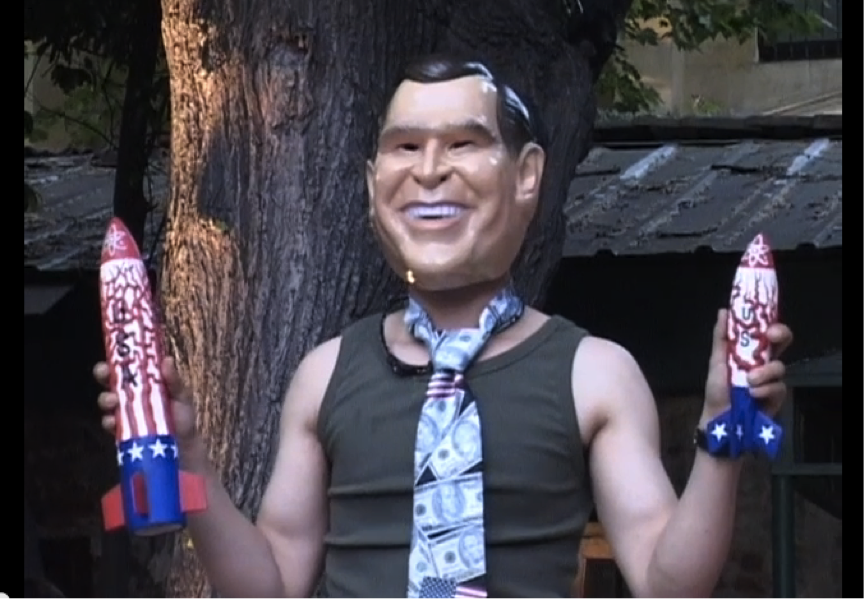
Image from For the Record: The World Tribunal on Iraq (2007)
This is the
first of what I hope to be many documentary dispatches from London, where I am
currently based. By way of introduction, I lived in Istanbul in 2002-2003,
teaching film studies at Bilgi University. Since that time, I have been in
close touch with the colleagues I met and have visited frequently, for
festivals, screenings, to give lectures, to work on video productions, and just
to see the Bosphorous. My last film project was a joint co-production with
three Turkish filmmakers documenting the World Tribunal on Iraq, held in
Darphane in June 2005. The video is called Tarihe
Şerh: Iraq Dunya Mahkemesi/For The Record: The World Tribunal on Iraq
(Zeynep Dadak, Başak Ertür, Enis Köstepen, Alisa Lebow, 2007) and will soon be
available on the web, for all to see.
London is a
great city for documentary. It regularly hosts documentary programmes and a day
does not go by that does not feature a documentary screening somewhere in town.
There are at least 7 major cinemas that routinely program documentary into
their schedules. When visiting London, these are the cinemas to check if you
want to see great documentaries, both current and classics: the BFI (formerly
known as the National Film Theatre), the ICA,
The Barbican, The Ritzy, The Roxy Bar and Screen, Curzon Cinema Soho, and The Rio Cinema. There are a few other websites to check as
well, especially DocHouse London, which runs screenings and symposia
at various sites around London all year round.
I
list all of these not only for those of you who might be coming to visit London
in the near future, but for those of you who want to follow the documentary
trends and movements current at least in the UK. This may seem less than
immediately relevant to those who have no intention of visiting England nor
have much interest in knowing what may or may not be going on here, but since
the UK is one of the key supporters and outlets for documentary around the world,
it is a good place to look if you want to know what’s happening in at least one
area of documentary. That said, London is not host to even one prominent
documentary film festival, so I hope to be able to travel to some of those from
here to bring you news of those events as well in the upcoming months. Stay
tuned here for my next documentary dispatch.
Keywords: For
the Record: The World Tribunal on Iraq, London Documentary

Image from For the Record: The World Tribunal on Iraq (2007)
